

Green Ports and Shipping Congress will identify and prioritise the areas that ports-based organisations and shipping companies need to collaborate on to reduce emissions.
Green Ports & Shipping Congress will cover a range of topics addressing the aspects of energy transition plans and implementation as they affect port operations and ships.

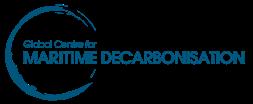

Media Partners: PORTSTRATEGY INSIGHT FOR PORT EXECUTIVES GREENPORT INSIGHT FOR PORT EXECUTIVES MOTORSHIP MARINE TECHNOLOGY THE Media Supporters: Visit www.greenseascongress.com
Handbook Programme For further information contact the Events team on +44 1329 825335 or email info@greenseascongress.com Marina Bay Sands, Singapore Sponsors Supporters: International Windship Associatio
FUEL FOR THOUGHT
Ammonia
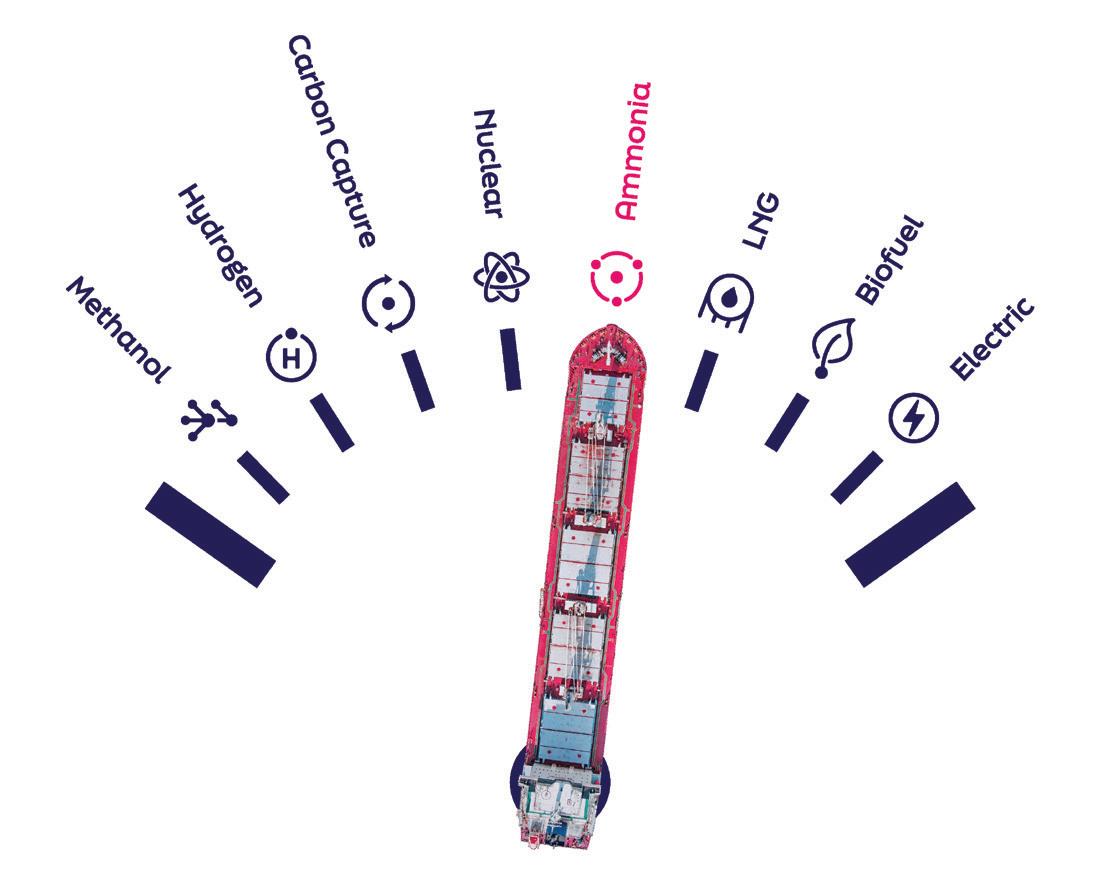
Exper t insights into the future of alternative fuel s
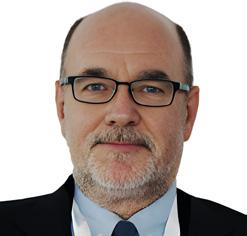 ANDREW WEBSTER Chief Executive Officer, Mercator Media Ltd
ANDREW WEBSTER Chief Executive Officer, Mercator Media Ltd
Welcome to Green Ports and Shipping Congress.
This event builds on the success of GreenPort Oceania, which evolved from the market leading conference, Propulsion & Future Fuels, now in its 45th year. Combined with GreenPort Congress and Cruise, in its 19th year we now offer a unique platform for ports and shipping; uniting these integral sectors to meet the 2050 net zero decarbonization targets.
As the first conference of its kind, we are encouraged that this event is underpinned by IAPH, BIMCO, Global Centre for Maritime Decarbonisation, Singapore Shipping Association, Blue Visby, ICS, IBIA and IWSA.
We are also pleased to be holding the conference at the iconic Marina Bay Sands, Singapore. The venue is Asia’s leading destination for business, leisure and entertainment and Singapore’s first carbon neutral business event venue.
Our speaker line-up promises a wealth of learning and updates, commencing with the Keynote Panel, “Ports and Shipping - collaboration to achieve 2050 goals”. Moderated by James Forsdyke from Lloyd’s Register this panel features eminent speakers, Er Tham Wai Wah, Chief Sustainability Officer, MPA; Dr Sanjay C Kuttan, Chief Technology Officer, Global Centre for Maritime Decarbonisation; Lars Robert Pedersen, Deputy Secretary General, BIMCO; Captain K. Subramaniam, General Manager, Port Klang Authority and Past President, IAPH; Antonis Michail, Technical Director, International Association of Ports and Harbors / World Ports Sustainability Program and Evelyn Tang, Head of Contract Pricing, Maersk Southeast Asia Ocean. This will be followed by the full programme of targeted and innovative sessions, over the two days.
I am delighted that Lars Robert Pedersen, Deputy Secretary General, BIMCO will be your Chairman. I know that Lars Robert and our moderators will promote active debate and discussion throughout the event and introduce you to our schedule of expert speakers. Finally, a thank you to our sponsors Lloyd’s Register, Bureau Veritas and The Methanol Institute for sponsoring the Conference; and to all the supporters and speakers who have helped to make the first Green Ports and Shipping Congress possible. Last, but not least, to you, our delegates for being here.
On behalf of the Green Ports and Shipping team do enjoy the Conference and business networking opportunities.
We look forward to meeting you all.
Best,
Andrew Webster, Chief Executive, Mercator Media Limited
Welcome Letter 3
 LARS ROBERT PEDERSEN Deputy Secretary General, BIMCO
LARS ROBERT PEDERSEN Deputy Secretary General, BIMCO
Dear delegates,
The Green Ports and Shipping conference comes as we move into an important phase in the decarbonisation of emissions. Whilst the process itself will stretch for decades, now is the time ports and shipping must come together to agree on where we decarbonise first and how we can do it.
We are already seeing collaboration through the Green Corridor initiatives which aims to facilitate decarbonisation in discreet trading lanes of the world, but this will need to continue to expand so that eventually there will be one global green shipping industry. We will be talking more about Green Corridors on Day Two, Session 4.
It is a complicated puzzle, with ports and shipping needing to understand the others’ requirements and for those expectations to be calibrated across the sectors and indeed the world.
There has been much talk, can I say wishful thinking, but it is clear that large investments are now needed, and decarbonisation will need to pull through into every company’s business model. The Green Finance session on Day one will address initiatives in this area. The entire conference will give us all the opportunity to discuss, learn and progress. It will also give us the opportunity to network, exchange ideas and hear about experiences and practices. This, I believe, will contribute to the need to continually lift the knowledge level across both ports and shipping.
I encourage everyone to pay close attention to the next two days as it will all matter for each of you, one way or another.
Lars Robert Pedersen Conference chairperson
Welcome by Chairman
4
Contents Day 1
Future marine low and zero-carbon fuels including biofuels, methanol, ammonia, and potentially hydrogen. Alternative fuels hold the key to decarbonising the maritime industry, through both emission-free powering of vessels and port operations.
Session 2 - Infrastructure Development
Session will touch upon different bunkering techniques from class societies, fuel providers and terminals. As well as developing harmonised standards and regulations for ships and ports to safely bunker alternative fuels.
Session 3: Green Finance
The session will be a discussion between banks regarding sustainable loans and how they will help. As well as a classification society, a shipper, and a pork as to how they have utilised green finance.
Contents Day 1 5
Day 1 04 Welcome by Chairman Keynote Panel ...................................................................................................................................................08 Ports and Shipping - collaboration to achieve 2050 goals Session
fuels 18
1 - Future marine low and zero-carbon
....................................................................................... 23
.......................................................................................................................... 31
Contents Day 2
Session 4: Green Shipping Corridors
Ports and shippers are signing deals which establish shipping corridors, allowing shipping routes to respond quickly to policy and make rapid decisions to create more sustainable container movement. Hearing from different green corridor projects and partners as to their involvement and collaboration for sustainability.
Session 5: Maritime Digitalisation
This session will feature case studies showcasing the digitalisation solutions and tools supporting ports and shipping in their journey to become more efficient and sustainable.
Session 6.1: Onshore Power Supply
Onshore Power Supply and what is needed for ports and shippers to be able to utilise this evolving technology.
Session 6.2: Green Technologies
Ports and shippers are introducing green technology, enhancing sustainability, and reducing their carbon footprint. This session will detail these technologies and how it affects both the portside and seaside.
Session 7: Collaborative projects
Collaborative projects to advance the deployment of zero/low-carbon solutions in the maritime industry. Detailing different projects that utilise different stages of the logistics chain.
Contents Day 2 6
Day 2 48 Opening by Chairman/Moderator
................................................................................................ 49
71
93
120
136
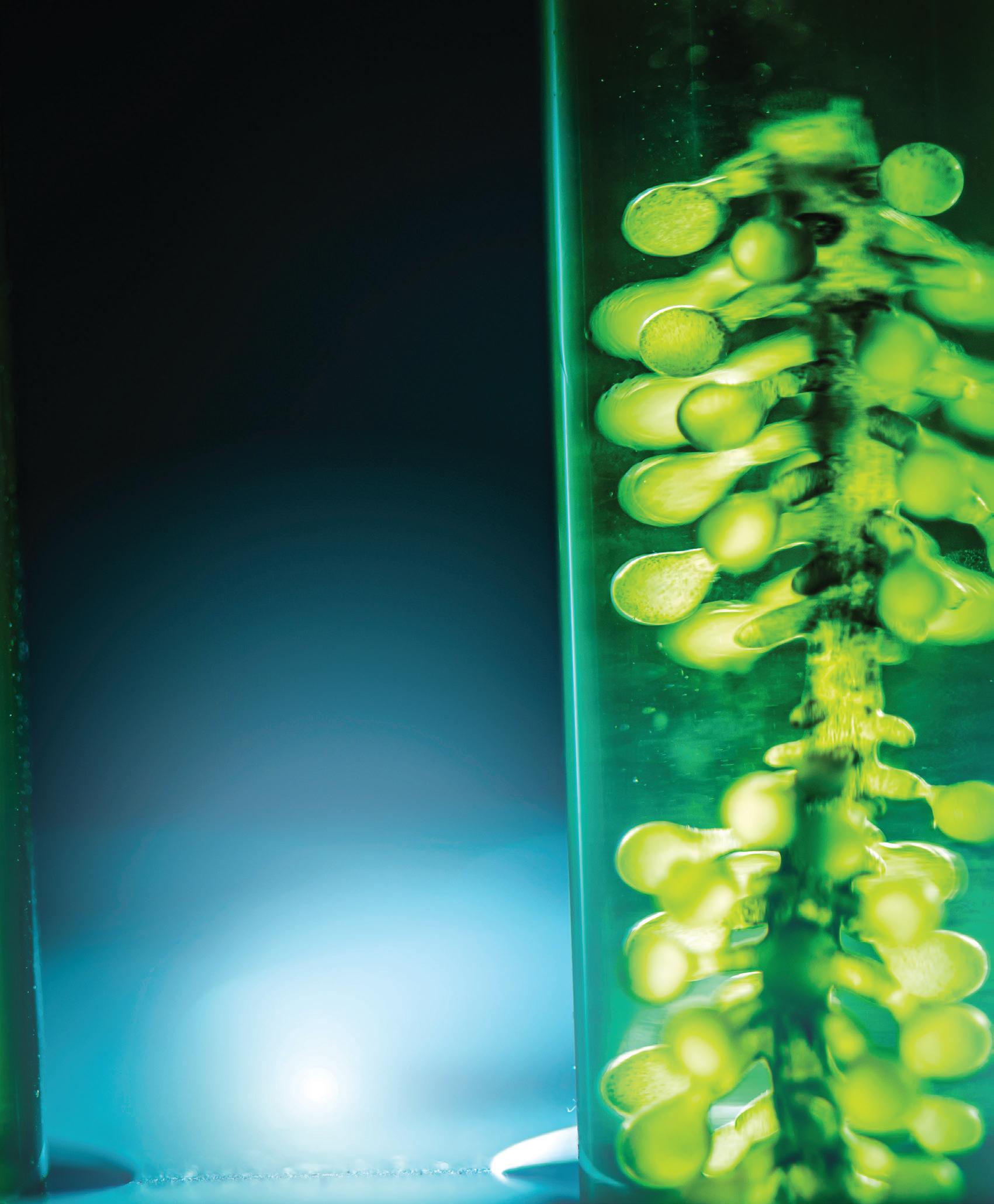
PIONEERING THE SAFETY AND PERFORMANCE OF THE FUELS OF THE FUTURE From biofuels to methanol, and ethanol to hydrogen, we are at the forefront of the energy transition, working with industry to develop clean energy solutions, now and in the future. Learn more at marine-offshore.bureauveritas.com Shaping a better maritime world.
KEYNOTE PANEL
Ports and Shippingcollaboration to achieve 2050 goals
Shipping already has regulations to follow from the IMO but what do they need from Ports to achieve these goals?
8
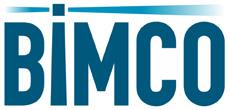
 LARS ROBERT PEDERSEN
Deputy Secretary General, BIMCO
LARS ROBERT PEDERSEN
Deputy Secretary General, BIMCO
BIOGRAPHY
Deputy Secretary General Lars Robert Pedersen is responsible for BIMCO’s technical and operational activities involving all technical and nautical issues within the area of marine, environment, ship safety and maritime security. Lars Robert is furthermore responsible BIMCO’s activity related to regulatory developments relevant to shipping at international, regional and national levels.
In the past decade, he has served on IMO expert groups on market-based measures and on the steering group for the IMO 2020 fuel oil availability study. Lars Robert has also chaired the Motorship Propulsion & Future Fuels Conference for the past 6 years.
He joined BIMCO in early 2010 after a long career at A.P. Moller-Maersk (APMM).
For more than 25 years he was involved in regulatory affairs at IMO level, technical management of the Maersk fleet of container ships and prior to that as a seagoing engineer officer. Lars Robert holds an unlimited Chief Engineers license.
Chairman & Moderator 9

JAMES FORSDYKE
Managing Director, Lloyd’s Register Maritime
Decarbonisation Hub
BIOGRAPHY
James is the Managing Director of the Lloyd’s Register Maritime Decarbonisation Hub. He joined Lloyd’s Register in 2006, after graduating with a Masters of Engineering as a Naval Architect from the University of Southampton. He has worked in a variety of technical, commercial and leadership roles across the organization and globally, from various marine surveyor positions in Italy, Dubai and China to commercial and general management in Hong Kong and leadership positions from LR’s headquarters in the United Kingdom and now Singapore.
About the Lloyd’s Register (LR) Maritime Decarbonisation Hub
The LR Maritime Decarbonisation Hub, a joint initiative between Lloyd’s Register Group and Lloyd’s Register Foundation, is a non-profit research and action unit with a mission to accelerate the safe and sustainable decarbonisation of the maritime industry. Our core team of thought leaders and subject matter experts in engineering, economics and risk provide independent, fuel-agnostic and quantitative evidence-based research on future fuels and the shipping energy supply chain, with a strong focus on safety and risk mitigation.
Through initiatives that facilitate change across the maritime supply chain to remove obstacles to shipping’s energy transition, our vision is to enable a decarbonised shipping industry that leads the way in sustainability and benefits everyone. For more information, go to www. maritimedecarbonisationhub.org
At COP28, the LR Maritime Decarbonisation Hub collaborated with the Environmental Defence Fund to introduce the Sustainable First Mover Initiatives (SFMIs) identification tool that offers shipping stakeholders a way to assess a port’s potential to produce and/or bunker electrofuels, while ensuring that local clean energy access, land suitability, and decarbonisation efforts are not undermined. The tool was used to examine the Indo-Pacific region as a case study, and the ports in the study were then ranked to determine which had ‘high’ or ‘promising’ potential.
In addition, the Hub works closely with port operator, PSA Singapore, and the Maritime and Port Authority of Singapore (MPA) on the cross-supply chain partnership, The Silk Alliance, a Green Corridor and first-mover initiative which aims to enable zero-emissions shipping across the Indian and Pacific oceans and foster partnerships with stakeholders across the maritime supply chain.
Keynote Panel Moderator
10

ER. THAM WAI WAH
Senior Director/Chief Engineer (Engrg & Project Mgt)
Chief Sustainability Officer (CSO)
Maritime and Port Authority of Singapore
BIOGRAPHY
Er. Tham Wai Wah is the Senior Director and Chief Engineer for Engineering & Project Management Division and concurrently holds the appointment of Chief Sustainability Officer (CSO) in the Maritime and Port Authority of Singapore (MPA).
As the Senior Director / Chief Engineer, Er. Tham leads the overall strategy & development planning, engineering and execution of all construction related projects within MPA. He is also the Superintending Officer overseeing the development of the Next Generation Tuas Mega Port.
As the CSO, Er. Tham spearheaded the initiative to formulate the Singapore Maritime Decarbonisation Blueprint, to drive the reduction of GHG emissions to meet the IMO targets for international shipping and Singapore’s emission set targets. As part of this framework, he formulated the adoption strategy of low and zero carbon fuels, encouraged pilot trials and fostered the development of industry collaborations across the value chain and ecosystem in the maritime sector.
Keynote Panel Speaker
11
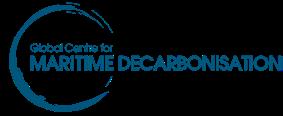
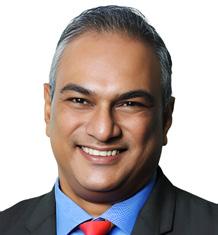
BIOGRAPHY
DR SANJAY C KUTTAN Chief Strategy Officer, Global Centre for Maritime Decarbonisation
Sanjay is Chief Technology Officer at the Global Centre for Maritime Decarbonisation (GCMD). Established by six founding partners from the maritime industry and supported by the Maritime and Port Authority of Singapore, GCMD’s mission is to help the sector accelerate its decarbonisation efforts through shaping standards, deploying solutions, financing projects, and fostering collaboration across sectors. At GCMD, he oversees four project initiatives: ammonia as a marine fuel, assurance framework for drop-in green fuels, unlocking the carbon value chain, and energy efficiency technologies to improve fuel efficiency of ships.
Prior to joining GCMD, he was the Executive Director of the Singapore Maritime Institute which is responsible for funding maritime research projects with industry and building local capabilities in the maritime sector.
Keynote Panel Speaker
12
 LARS ROBERT PEDERSEN
Deputy Secretary General, BIMCO
LARS ROBERT PEDERSEN
Deputy Secretary General, BIMCO
BIOGRAPHY
Deputy Secretary General Lars Robert Pedersen is responsible for BIMCO’s technical and operational activities involving all technical and nautical issues within the area of marine, environment, ship safety and maritime security. Lars Robert is furthermore responsible BIMCO’s activity related to regulatory developments relevant to shipping at international, regional and national levels.
In the past decade, he has served on IMO expert groups on market-based measures and on the steering group for the IMO 2020 fuel oil availability study. Lars Robert has also chaired the Motorship Propulsion & Future Fuels Conference for the past 6 years. He joined BIMCO in early 2010 after a long career at A.P. Moller-Maersk (APMM). For more than 25 years he was involved in regulatory affairs at IMO level, technical management of the Maersk fleet of container ships and prior to that as a seagoing engineer officer. Lars Robert holds an unlimited Chief Engineers license.
Keynote
Panel Speaker
13

ANTONIS MICHAIL
Technical Director, International Association of Ports and Harbors / World Ports Sustainability Program
BIOGRAPHY
Dr Antonis Michail is an engineer in background with specialisation on the environmental management of ports and freight transport systems at Master and PhD level, and with more than 15 years of professional experience in these fields. Since February 2018, Antonis joined the World Ports Sustainability Program (WPSP) of the International Association of Ports and Harbours (IAPH) as the person responsible for the technical developments and projects under the umbrella of the program. Before that, Antonis was holding the position of Senior Policy Advisor on sustainability and safety matters at the European Sea Ports Organisation (ESPO) from 2009 to 2017. Since back in 2003, Antonis was involved in the EcoPorts network of ports from various posts, including managing projects and coordinating the network’s activities and development until 2017.
Keynote Panel Speaker
14
 EVELYN TENG Head of Contract Pricing, Maersk Southeast Asia Ocean
EVELYN TENG Head of Contract Pricing, Maersk Southeast Asia Ocean
BIOGRAPHY
Evelyn Teng is the Head of Contract Pricing for Maersk Southeast Asia Ocean business. She has over 20 years of working experience within Maersk, spanning across various commercial roles such as capacity & trade management, sales & marketing and tender management. She started the Singapore branch office for Safmarine in 2007 and led the country sales and customer service. Her key passions are on customer engagement and transformation within the shipping and logistics industry.
She graduated with a bachelor’s degree in economics and psychology from National University of Singapore.
She believes that “we are here to put a dent in the universe. Otherwise, why else even be here?”
Keynote
Speaker
Panel
15
Net Zero by 2040
Our ambition is to transition to climate-neutral energy by 2040 across our entire business.


Decarbonizing Ocean
Securing large quantity of green fuel supply is imperative to enable our decarbonization strategy, as we require 5m tones of green fuel in 2030 to operate 25% of our fleet on green fuels.


Conference Paper 16
A.P. MollerMaersk
A.P. Moller - Maersk
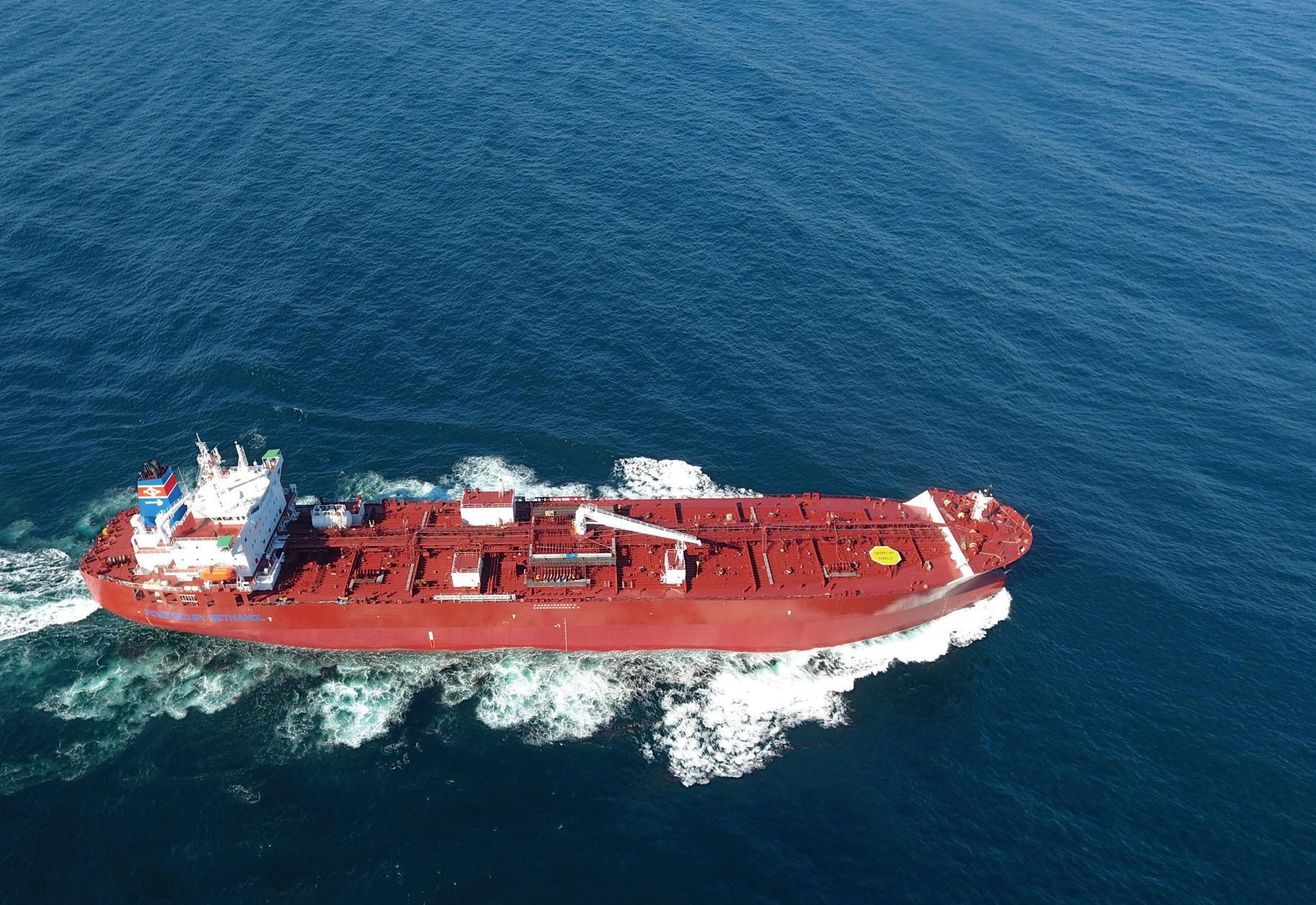
www.methanol.org A safe, sustainable, available, and affordable marine fuel; 2020-compliant, reducing maritime emissions today; and providing a low carbon pathway.
SESSION 1
Future marine low and zero-carbon fuels
Future marine low and zero-carbon fuels including biofuels, methanol, ammonia, and potentially hydrogen. Alternative fuels hold the key to decarbonising the maritime industry, through both emission-free powering of vessels and port operations.
18
 LARS ROBERT PEDERSEN
Deputy Secretary General, BIMCO
LARS ROBERT PEDERSEN
Deputy Secretary General, BIMCO
BIOGRAPHY
Deputy Secretary General Lars Robert Pedersen is responsible for BIMCO’s technical and operational activities involving all technical and nautical issues within the area of marine, environment, ship safety and maritime security. Lars Robert is furthermore responsible BIMCO’s activity related to regulatory developments relevant to shipping at international, regional and national levels.
In the past decade, he has served on IMO expert groups on market-based measures and on the steering group for the IMO 2020 fuel oil availability study. Lars Robert has also chaired the Motorship Propulsion & Future Fuels Conference for the past 6 years. He joined BIMCO in early 2010 after a long career at A.P. Moller-Maersk (APMM). For more than 25 years he was involved in regulatory affairs at IMO level, technical management of the Maersk fleet of container ships and prior to that as a seagoing engineer officer. Lars Robert holds an unlimited Chief Engineers license.
Moderator
19
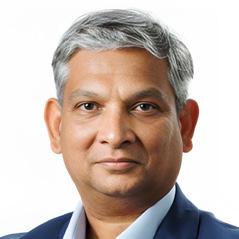
GIRISH SREERAMAN
Area Business Development Manager, Maritime, DNV
BIOGRAPHY
Girish Sreeraman is responsible for DNV’s area business development in South East Asia and Indian Subcontinent since Sep 2017. Having joined DNV in Jan 2003, Girish started as a surveyor in DNV Mumbai and has worked various roles including new building and CMC manager, project manager for various ship related feasibility studies and new ship constructions. He has managed one of the biggest advisory projects of DNV-NB Project Management consultancy. Prior to his current role, as an ISO 9001 management systems auditor, he conducted assessments for Shipping companies, crew training centers, and shipyards. He has also led multiple due diligence and MPQA assessments for major shipyards on behalf of banks and shipowners. Recognized by DNV, he attended the DNV Global Leadership Management Program at IMD Lausanne in 2010. Girish holds a Bachelor’s degree in Technology, Marine Engineering from DMET Calcutta in 1994.
Speaker
20

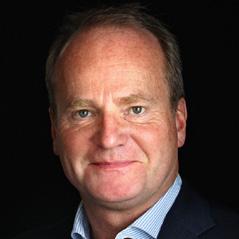 MORTEN JACOBSEN, CEO, Green Marine,
MORTEN JACOBSEN, CEO, Green Marine,
Denmark
BIOGRAPHY
Morten Jacobsen is the founder and President of GREEN MARINE GROUP. He has over thirtyfive years of experience in the international shipping industry, primarily within ship owning and trading.
Green Marine, Denmark brings world-leading expertise in the design, construction and operations of methanol-powered ships, assisting shipowners, operators and shipyards in accelerating the transition to a methanol-powered maritime future.
Speaker
21
 STANLEY TEO
STANLEY TEO
Vice President of Business Development for Southeast Asia, Advario
BIOGRAPHY
Stanley graduated from National University of Singapore in 1997, holding a Bachelor Degree of Mechanical and Production Engineering (Honors).
He has extensive experience in the petrochemical sector, having worked 27 years including various portfolios in ExxonMobil across prior to joining Oiltanking in 2006.
Since then, Stanley has contributed to the growth of Oiltanking, holding positions ranging from commercial to operations in both the petroleum and chemical sectors at the Singapore terminals.
From February 2015, he served as the General Manager China responsible for the business operations and strategic business planning for Oiltanking’s endeavours in the China market. Currently, he holds the position of the VP Business Development for Advario (carve-out of Oiltanking) in APAC, overseeing opportunities in the gas, chemicals and new energy sector.
Speaker
22
SESSION 2
Infrastructure Development
Session will touch upon different bunkering techniques from class societies, fuel providers and terminals. As well as developing harmonised standards and regulations for ships and ports to safely bunker alternative fuels.
23

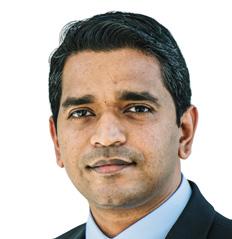
ASHISH ANILAN
Assistant Director iCARE, Sustainability Lead, Bureau Veritas
BIOGRAPHY
Ashish brings over 15 years of experience in developing technology-driven marine projects across Southeast Asia and the Pacific. Currently, as Assistant Director and Sustainability Leader at Bureau Veritas Marine & Offshore, he spearheads strategic initiatives for the region’s sustainability and energy transition for maritime and adjoining sectors.
Ashish leads projects and partnerships through BV’s iCARE Center of Excellence (COE) and Future Shipping Team. He is a passionate and results-oriented leader, combining his expertise in business development, technical leadership, and project management. Ashish actively represents the organization in various trade associations and industry coalitions. He is also convening the Work Group developing Singapore’s National Standard for LNG bunkering, a testament to his commitment to shaping a sustainable maritime industry.
Ashish holds a master’s degree in technology management from the National University of Singapore and a bachelor’s degree in mechanical engineering from Nanyang Technological University.
Moderator
24
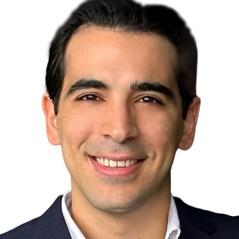
ANDREAS
KALAMIDAS,
Business Advisory Consultant, Lloyd’s Register
BIOGRAPHY
Andreas Kalamidas is a Business Advisory Consultant based in Singapore. He holds a BSc in Finance and a MSc in Maritime Technology and Management.
Prior to joining Lloyd’s Register he worked as Sustainability Analyst at another leading classification society where he led the environmental compliance projects and generated decarbonisation pathways for major shipowners. In his current role, Andreas works closely with both internal and external stakeholders to identify potential solutions and guide clients in decarbonization strategies, environmental compliance and exposure to emission related taxes.
Speaker
25
Key Opportunities for Ports in Maritime’s Energy Transition
Ship Owners have 4 Energy Transition Levers at their disposal
Speed reduction, waiting time optimisation, ESDs, fuel transition and newbuild planning are currently the foundation to build Energy Transition Strategies for major owners and charterers

CHALLENGES
CHALLENGES
Requires significant collaboration with charterers to agree to reduce speeds to optimise speed profiles and reduce waiting times through Just-In-Time model.
OPPORTUNITIES
Significant CII improvement potential both for the existing fleet and for newbuilds.
Close business alignment with charterers provides owners with a unique opportunity for collaboration.
The emissions improvement potential of ESDs is relatively limited given the operational profile and technology applied on typical modern fleets.
OPPORTUNITIES
CII improvements can be gained for existing vessels to ensure compliance until they can be replaced.
Fuel saving sharing models with charterers could generate a commercial upside for owners.
CHALLENGES
The supply of low or zero-carbon fuels is not currently mature enough to enable a short-term fuel change in the and the price of alt fuels will be comparatively high.
OPPORTUNITIES
Significant CII improvement potential through drop-in biofuels for the existing fleet.
Long-term emission reduction can only be achieved through a fuel change, allowing owners to meet emissions reduction targets.
Ship Owners have 4 Energy Transition Levers
CHALLENGES
Requires robust fleet planning and alignment with charterers. It is also a CAPEX intensive option with reasonable uncertainty around engine technology.
OPPORTUNITIES
Long-term emissions reductions can be achieved through energy efficient, alt fuelled vessels.
Improvement of owner’s competitive position in the market for both current and future charterers.
at their disposal
Speed reduction, waiting time optimisation, ESDs, fuel transition and newbuild planning are currently the foundation to build Energy Transition Strategies for major owners and charterers

CHALLENGES
CHALLENGES
Requires significant collaboration with charterers to agree to reduce speeds to optimise speed profiles and reduce waiting times through Just-In-Time model.
OPPORTUNITIES
Significant CII improvement potential both for the existing fleet and for newbuilds.
Close business alignment with charterers provides owners with a unique opportunity for collaboration.
The emissions improvement potential of ESDs is relatively limited given the operational profile and technology applied on typical modern fleets.
OPPORTUNITIES
CII improvements can be gained for existing vessels to ensure compliance until they can be replaced.
Fuel saving sharing models with charterers could generate a commercial upside for owners.
CHALLENGES
The supply of low or zero-carbon fuels is not currently mature enough to enable a short-term fuel change in the and the price of alt fuels will be comparatively high.
OPPORTUNITIES
Significant CII improvement potential through drop-in biofuels for the existing fleet.
Long-term emission reduction can only be achieved through a fuel change, allowing owners to meet emissions reduction targets.
CHALLENGES
Requires robust fleet planning and alignment with charterers. It is also a CAPEX intensive option with reasonable uncertainty around engine technology.
OPPORTUNITIES
Long-term emissions reductions can be achieved through energy efficient, alt fuelled vessels.
Improvement of owner’s competitive position in the market for both current and future charterers.
2
Conference Paper 26
SPEED OPTIMISATION ENERGY SAVING DEVICES FUEL TRANSITION NEWBUILDS
3
Andreas Kalamidas, Lloyd’s Register - Green Ports and Shipping Congress 2024
SPEED OPTIMISATION ENERGY SAVING DEVICES FUEL TRANSITION NEWBUILDS
Andreas Kalamidas, Lloyd’s Register - Green Ports and Shipping Congress 2024
Techno-economic Modelling Case Study: Vessel Transition Pathway
LR’s Case studies validate that alternative fuelled newbuildings will unlock significant decarbonisation potential that could bridge the gap of current baseline and long-term goals
New Centres of Fuel Demand will emerge: Newcastlemax Case Study
Due to a combination of factors, we expect to see new pockets of fuel demand emerge that will be aligned with trade flows therefore the question of whether dual fuel newbuilds will require alternative fuels in new locations emerges.











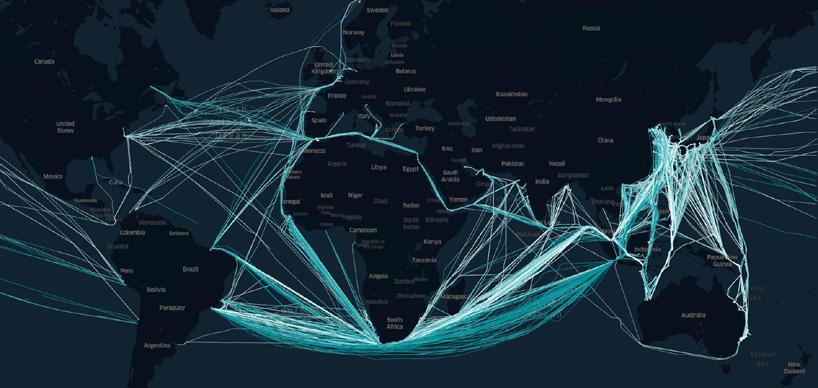
Conference Paper 27 4
12.8 13.4 13.0 12.5 12.0 12.0 12.0 12.0 12.0 12.0 12.0 15.0 15.3 15.5 15.5 15.5 15.5 15.5 15.5 15.5 15.5 15.5 15.5 15.5 15.5 15.5 0.0 0.1 0.2 0.3 0.4 0.5 0.6 0.7 0.8 0.9 1.0 1.1 1.2 1.3 1.4 1.5 1.6 1.7 1.8 1.9 2.0 2.1 5.0 10.0 0.0 15.0 20.0 2023 2024 2025 2026 2027 2028 2029 2030 2031 2032 2033 2034 2035 2036 2037 2038 2039 2040 2041 2042 AER [gCO2/ t.Nm ] 2044 2045 2046 2047 2043 2049 2050 15.5 15.5 2048 Average Vessel Speed [ knts ] Vessel would fall off trajectory in 2027 even with speed reduction & ESDs, therefore drop-in biofuel is required. 2033: final full year of operation Replacement vessel moves significantly below emissions reduction trajectory ZERO CARBON FUELLED VESSEL SPEED OPTIMISATION 2024: ESDs fitted at drydock Target Trajectory Speed Optimisation ESDs & Speed Optimisation Drop-in Biofuel Newbuild Vessel Existing Avg. Speed Newbuild Avg. Speed DROP-IN BIOFUEL ESDS & SPEED OPTIMISATION SPEED OPTIMISATION Andreas Kalamidas, Lloyd’s Register - Green Ports and Shipping Congress 2024 5
Current Major Bunkering Hubs ARA Panama Fujairah Hong Kong Singapore Newcastlemax 2022 Trade (draught delineated) Potential Trade-linked Fuel Demand? Tubarão? Qingdao? Japan? Pilbara?
Register
Shipping Congress 2024
Andreas
Kalamidas, Lloyd’s
- Green Ports and
Key Considerations when developing Strategies to support first movers
Various critical factors that are central to the successful development of a robust and accurate bunker strategy exist
MARKET SIZING
In order for the project to succeed, a robust market sizing methodology is required to be followed. The methodology must follow diligent data analysis principles and consider historical bunkering estimates, the target vessel segments and their corresponding bunkering requirements
INFRASTRUCTURE REQUIREMENTS
Questions around the technical requirements for the bunkering infrastructure must be addressed. Storage facilities, Transportation, Scalability and flexibility due to the emerging diverse fuel mix as well as integration with current port operations for cases where ports didn’t serve as bunkering hubs are some of the concerns around infrastructure requirements.
MARKET AND SAFETY RISKS
The development of a risk register is key in understanding and overcoming the associated risks of alternative fuel bunkering. New Engine technologies, fuel hazards, alternative fuel supply reliability are some of the technical and commercial risks that arise for ports that consider alternative fuel availability.
REGULATORY LANDSCAPE
Having a detailed understanding of the global and regional regulations as well as the potential incentives to increase alternative fuel adoption is key to the success of the project as it will ultimately determine the accuracy of the demand estimate outputs.
Navigating Decision Gates for Port Authorities
How Market Assessments and Infrastructure studies can provide clarity in the decision-making process of Ports








Conference Paper 28 6
KEY PORT
MARKET SIZING MARKET RISKS INFRASTRUCTURE
REGULATORY LANDSCAPE
FACTORS
REQUIREMENTS
7
Andreas Kalamidas, Lloyd’s Register - Green Ports and Shipping Congress 2024
OUTPUTS FOR PORTS BUNKER PARCEL
MARKET STUDY MODALITY & INFRASTRUCTURE STUDY ANNUAL FUEL DEMAND BUNKER CONCEPT & VESSEL SIZE INFRASTRUCTURE WORKS REQUIRED Fleet breakdown by ship segment, size & ownership Demand Estimate Annual Fuel Demand Estimates Bunker Parcel Distributions Bunker Parcel Distributions Bunker Vessel / Fleet Definition Metocean / StS Limits Anchorage utilisation Limits • Process losses • Modality Definition • Infrastructure Required
DISTRIBUTIONS
Andreas Kalamidas, Lloyd’s Register - Green Ports and Shipping Congress 2024
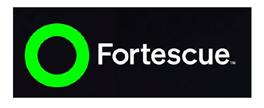

ANDREW HOARE
Head of Fortescue Marine Systems and Green Shipping, Fortescue
BIOGRAPHY
Fortescue is an integrated green technology, energy, and metals company, recognised for its culture, innovation; and industry leading development of infrastructure, mining assets and green energy initiatives.
Andrew has 30 years’ experience in the maritime and energy sectors holding leadership positions at BW including CCO of BW LPG, COO of Navig8 Group and various senior positions at Pacific Carriers and Clarksons.
Andrew holds a Master of Arts (Honors) in Management with International Relations from the University of St Andrews, Scotland and a Master of Business Administration from Hult Ashridge, UK. He is also a Fellow of the Institute of Chartered Shipbrokers; an accredited CEDR meditator and sits on the Board of the Singapore Chamber of Maritime Arbitration (SCMA).
ABOUT FORTESCUE
Fortescue is focused on becoming the number 1 integrated green energy, metals and technology company, recognised for its culture, innovation and industry-leading development of infrastructure, mining assets and green energy initiatives. It operates with two divisions –Metals and Energy.
Fortescue is committed to producing green hydrogen, containing zero carbon, from renewable electricity. Green hydrogen is a zero-carbon fuel that, when used, produces primarily water. It is a practical and implementable solution that can help revolutionise the way we power our planet: helping to decarbonise heavy industry and create jobs globally.
Fortescue is leading the green industrial revolution, building a global portfolio of renewable green hydrogen and green ammonia projects, while also leading the global effort to help decarbonise hard-to-abate sectors. This includes developing and acquiring the technology and energy supply to help decarbonise the Australian iron ore operations of one of the world’s largest producers of iron ore, Fortescue Metals, by 2030 (Scope 1 and 2 terrestrial emissions).
Speaker
29

HAN NING
Head Port Business, Drewry Maritime Advisors
BIOGRAPHY
She joined Drewry Shipping Consultant in 2011. During 2016-2022, she has been overseeing Drewry China in all sectors including maritime research, shipping and port projects, as well as logistics projects. She moved to Singapore in 2022 and heads Drewry port business in Southeast Asia now. Her clients include IFC, Sinosure, China Harbor, SIPG, China Merchant, Cosco Energy Shipping, Jinjiang Shipping, TSL, CU Line, etc.
Prior to joining Drewry, she has worked in PSA China investment department for 5 years. With PSA, she has participated in three greenfield port projects as well as a few M&A projects.
She jointly translated a book of Professor Usher from Columbia University “Investing in the Era of Climate Change”(Columbia University Press), which has been published by CITIC press in China in 2023.
Speaker
30
SESSION 3
Green Finance
The session will be a discussion between banks regarding sustainable loans and how they will help. As well as a classification society, a shipper, and a pork as to how they have utilised green finance.
31
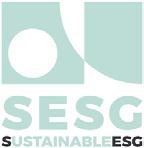
 JACKIE SPITERI
Managing Director, Sustainable ESG
JACKIE SPITERI
Managing Director, Sustainable ESG
BIOGRAPHY
Jackie is an experienced Environmental, Social, Governance (ESG) professional with a history of working in the maritime and infrastructure sector bringing a wealth of knowledge on sustainable development and operations.
With over 15 years’ experience and a gift for creating collaborative partnerships, alongside a strong ability to recognise and cultivate the potential in others, Jackie has a proven track record of accelerating organisational sustainability through strategy development, implementation, communication, and education.
In 2022, Jackie became the founder and Managing Director of ESG advisory company Sustainable ESG (SESG). SESG are focused on supporting organisations navigate the evolving ESG imperative. Helping organisations to understand their current state and develop relevant and tailored strategies that build upon existing foundations.
Jackie has sat on the Board for PIANC ANZ, a global not-for-profit body that brings together experts on technical, economic, environmental and planning issues pertaining to waterborne transport and infrastructure and is a former Chair of the Ports Australia Environment Planning and Sustainability Working Group and sits on the Mayor of Newcastle’s Sustainable Development Collaborative, an active group focused on localising the United Nations SDGs to the region.
During her career Jackie has been responsible for the development of a number of Sustainability Financing Frameworks in the export/import infrastructure sector, enabling over $750million of sustainability linked debt to be realised through a series of innovative sustainability financing transactions. More recently Jackie has been deeply involved in the development of the ASEAN Taxonomy V3, that has seen the introduction of the Transport & Storage and Construction & Real Estate sectors.
Moderator
32

PANG TOH WEE
Senior Consultant - Maritime Advisory, DNV
BIOGRAPHY
Toh Wee is a Senior Consultant with the Maritime Advisory team at DNV, focused on ESG and Sustainability. With over 12 years of experience in the maritime industry, Toh Wee has expertise in shipbuilding and repair, alternative fuels, and sustainability consulting. Toh Wee has successfully delivered several sustainability projects for maritime customers in the value chain, such as GHG emission calculation, ESG reporting framework development, and Sustainability financing framework.
Prior to joining DNV, he held various roles as an engineer overseeing project management and research in the oil and gas industry. He is well experienced in sustainable finance-related services, providing solutions for sustainability-linked transactions and strategy development for financiers in the region.
Toh Wee holds a Bachelors’ degree in Offshore Engineering from the University of Newcastle and a certificate in Corporate and Environmental Sustainability from the Nanyang Technological University of Singapore.
Speaker
33
Raising Money for Maritime Decarbonization: A Green and Sustainable Finance Perspective
Abstract
The maritime sector is a major contributor to global greenhouse gas emissions and faces significant challenges in achieving the decarbonisation targets set by the International Maritime Organization. This paper explores the available green finance instruments, such as green, sustainability-linked and transition loans and bonds, to mobilise capital for low-carbon and zero-carbon technologies and practices in the shipping industry. It reviews the current state of the green finance market, the existing frameworks and standards for defining and reporting on green finance activities, and the opportunities and challenges for applying them to the maritime sector. It also provides some tools for green finance initiatives in the shipping industry and discusses the implications for policymakers, regulators, investors and stakeholders.
Introduction
The maritime sector is responsible for about 2.8% of global carbon dioxide emissions according to the United Nations Conference on Trade and Development (UNCTAD, 2023). The IMO has adopted a strategy to meet net zero by 2050, which is in line with the goals of the Paris Agreement on climate change (IMO, 2023). However, achieving these ambitious targets will require significant investments in low-carbon and zero-carbon technologies and practices, such as alternative fuels, energy efficiency measures, carbon capture and storage, and operational optimisation. The Getting to Zero Coalition estimates that the annual investment needed to decarbonise the shipping industry by 2050 ranges from $1.4 trillion to $1.9 trillion, depending on the scenario (Coalition, 2020)
Green finance is a broad term that refers to the financing of activities that have positive environmental and social impacts, such as mitigating or adapting to climate change, enhancing biodiversity, reducing pollution, and improving resource efficiency. Green finance instruments, such as green, sustainability-linked and transition loans and bonds, are designed to channel capital from investors and lenders to borrowers and issuers that undertake green projects or commit to sustainability performance targets. Green finance can play a key role in supporting the decarbonisation of the maritime sector by providing access to lower-cost and longer-term funding, enhancing the reputation and credibility of the borrowers and issuers, and creating incentives and accountability for environmental and social performance. However, green finance also faces some challenges, such as the lack of a standard and consistent definition of what constitutes a green project or activity, the need for reliable and transparent reporting and verification of the environmental and social impacts, and the potential for greenwashing or misrepresentation of the green credentials of the borrowers and issuers.
This paper aims to provide an overview of the green finance market, the existing frameworks and standards for defining and reporting on green finance activities, and the opportunities and barriers for applying them to the maritime sector.
Current Status and Trends
Green finance has grown rapidly in recent years, driven by the increasing awareness and demand for environmental and social responsibility from investors, lenders, borrowers, issuers, regulators and policymakers. According to the Global Sustainable Investment Alliance, the global sustainable investment assets reached $35.3 trillion in 2020, a 34% increase from 2016
Conference Paper
34
trillion in 2020, a 34% increase from 2016 trillion in 2020, a 34% increase from 2016 (GSIA, 2023). Sustainable investment encompasses various strategies, such as negative or exclusionary screening, positive or best-in-class screening, thematic or impact investing, integration of environmental, social and governance (ESG) factors, engagement and voting, and norms-based screening. Among these strategies, green finance instruments, such as green, sustainabilitylinked and transition loans and bonds, have gained popularity and recognition as a way to link the financing of projects or activities to their environmental and social impacts.
Green loans and bonds are debt instruments that are exclusively used to finance or refinance green projects or activities that have clear environmental benefits, such as renewable energy, energy efficiency, clean transportation and pollution prevention for the maritime industry. The use of proceeds, the selection and evaluation of the green projects or activities, the management of the proceeds, and the reporting of the environmental impacts are the key elements of green loans and bonds and are guided by the Green Loan Principles (GLP) and the Green Bond Principles (GBP), respectively.
The GLP and the GBP are voluntary frameworks that were developed by the Loan Market Association (LMA), the Asia Pacific Loan Market Association (APLMA), the Loan Syndications and Trading Association (LSTA), and the International Capital Market Association (ICMA), with the input from various stakeholders, such as banks, investors, issuers, rating agencies, consultants, and non-governmental organizations (NGOs). The GLP and the GBP are aligned with the four components of the Green Bond Standard (GBS) of the European Union (EU), which is a legislative initiative that aims to establish a common and consistent framework for green bonds in the EU market (EU, 2020).
Sustainability-linked loans and bonds are debt instruments that are linked to the borrower’s or issuer’s performance on predefined sustainability objectives or key performance indicators (KPIs), such as reducing greenhouse gas emissions, improving energy efficiency, increasing the share of renewable energy, or enhancing social inclusion and diversity. The sustainability objectives or KPIs, the sustainability performance targets (SPTs), the loan or bond characteristics, the reporting of the sustainability performance, and the verification of the sustainability performance are the key elements of sustainability-linked loans and bonds, and are guided by the Sustainability-Linked Loan Principles (SLLP) and the Sustainability-Linked Bond Principles (SLBP), respectively.
Similarly, the SLLP and the SLBP are voluntary frameworks that were developed by the LMA, the APLMA, the LSTA, and the ICMA, with the input from various stakeholders, such as banks, investors, issuers, rating agencies, consultants, and NGOs. The SLLP and the SLBP are aligned with the EU Taxonomy Regulation, which is a legislative initiative that aims to establish a common and consistent classification system for sustainable economic activities in the EU market (EU, 2020).
Transition loans and bonds are debt instruments that are used to finance or refinance the transition of the borrower or issuer from a high-carbon to a low-carbon business model, sector, or activity, in line with the long-term goals of the Paris Agreement on climate change.
The transition loans and bonds are a relatively new and emerging concept in the green finance market, and unlike SLL and SLB, there is no universally agreed definition, framework or KPI requirements for them. However, some guidance and best practices have been developed by various stakeholders, such as the Climate Transition Finance Handbook (CTFH) of the ICMA, the Transition Bond Guidelines (TBG) of the Climate Bonds Initiative (CBI), and the Transition Finance Case Studies (TFCS) of the International Finance Corporation (IFC). The CTFH, the TBG, and the TFCS provide some common elements for transition loans and bonds, such as the identification of the transition strategy, the alignment with the science-based targets, the disclosure of the transition pathway, the reporting of the transition performance, and the verification of the transition impacts.
Conference Paper 35
taxonomies, transparency initiatives, and efforts to speed
as well as an increase in issuance from emerging markets. However, there are also macroeconomic factors that could hinder its growth, such as high-interest rates and the potential for an economic slowdown in key regions like Europe and Asia-Pacific (S&P, 2024).
Trafigura, commodity
The green finance market has witnessed remarkable growth in terms of volume and diversity in the past decade.
According to S&P Global Ratings’ research, the green, social, sustainability, and sustainabilitylinked bond (GSSSB) issuance in 2023 is at $0.98 trillion in 2023 and is expected to increase mostly to $0.95 trillion to $1.05 trillion in 2024 despite a number of factors which could underpin growth in GSSSB issuance as shown in Figure 1. There are several factors that could drive the growth of the green finance market, including the adoption of sustainable taxonomies, transparency initiatives, and efforts to speed up the energy transition, as well as an increase in issuance from emerging markets. However, there are also macroeconomic factors that could hinder its growth, such as high-interest rates and the potential for an economic slowdown in key regions like Europe and Asia-Pacific (S&P, 2024).
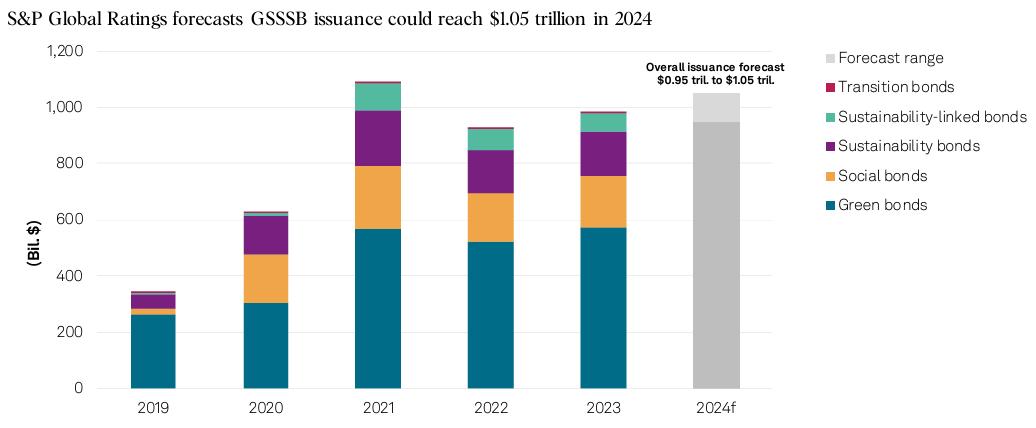
According to Bloomberg NEF, the global sustainability-linked loan issuance reached $119.5 billion in 2020, a 5% increase from 2019, despite the challenges posed by the COVID-19 pandemic. The cumulative sustainability-linked loan issuance since 2017 amounted to $323.9 billion by the end of 2020, with the US, France, Italy, Spain and the UK being the top five borrowers. The sustainability-linked loan market has also diversified in terms of sectors, regions, currencies, and types of borrowers, with the participation of corporates, financial institutions, and municipalities. The sustainability-linked loan market is expected to continue its growth momentum in 2021, with some estimates projecting a global issuance of $150-$200 billion (BNEF, 2021).
billion sustainability group of Bookrunners linked to greenhouse including Trafigura’s starting in These interest sustainable as well as borrowers
According to Bloomberg NEF, the global sustainability-linked loan issuance reached $119.5 billion in 2020, a 5% increase from 2019, despite the challenges posed by the COVID-19 pandemic. The cumulative sustainability-linked loan issuance since 2017 amounted to $323.9 billion by the end of 2020, with the US, France, Italy, Spain and
An example of a sustainable financing is that in October 2020, Maersk, the world’s largest container shipping company, secured a $5 billion revolving credit facility with a syndicate of 26 banks, with the interest margin linked to its progress in reducing carbon dioxide emissions per cargo moved by 60% by 2030, compared to 2008 levels. The facility also incorporated a mechanism that allows Maersk to reward its strategic sustainability partners in the syndicate with improved pricing terms (A.P. Moller – Maersk, 2020).
A more recent example is that in March 2024, Trafigura, one of the world’s largest commodity trading companies, signed a $56 billion sustainability-linked loan facility with a group of seven Mandated Lead Arrangers & Bookrunners (MLAB), with the interest rate linked to its KPI on cutting operational greenhouse gas emissions (Scope 1 & 2), including a new intensity reduction target on Trafigura’s shipping business (Scope 1 & 3) starting in 2026 (Trafigura, 2024). These examples illustrate the growing interest and innovation in green and sustainable financing for the shipping industry, as well as the potential benefits for both the borrowers and the lenders.
However, and limitations such as accepted defining the risk the ESG borrowers' independent ESG performance
Conference Paper 36
Figure 1: Global rating of GSSSB (Source: S&P Global)
up the energy transition,
Figure 1: Global rating of GSSSB (Source: S&P Global)
However, there are also some challenges and limitations that need to be addressed, such as the lack of standardised and widely accepted frameworks and standards for defining and reporting on the criteria and KPIs, the risk of greenwashing or misalignment of the ESG goals with the actual impact of the borrowers’ activities, and the need for independent verification and assurance of the ESG performance and data.
Frameworks and Standards
As the green finance market has expanded and diversified, there has been a growing need for common and consistent frameworks and standards for defining and reporting on green finance activities. Frameworks and standards would ensure the credibility, transparency, and accountability of green finance instruments and avoid the risk of greenwashing or misrepresenting the green credentials of the borrowers and issuers.
Unlike sustainability reporting, where clear frameworks such as ISSB and CSRD, which Singapore and EU have mandated as a reporting requirement with clear KPIs, there are no frameworks or regulations with KPIs that are widely accepted for green and sustainable financing, as they are either outdated, inaccurate, or incomplete today. However, the following sections provide a brief overview of the main frameworks and standards for green, sustainability-linked and transition loans and bonds, and their applicability to the maritime sector.
Green Loan Principles and Green Bond Principles
The Green Loan Principles (GLP) and the Green Bond Principles (GBP) are voluntary frameworks that provide guidance and best practices for the origination and issuance of green loans and bonds, respectively. The GLP and the GBP are based on four core components: use of proceeds, process for project evaluation and selection, management of proceeds, and reporting. The GLP and the GBP also provide a list of indicative categories of green projects or activities that are eligible for green loans and bonds, such as renewable energy, energy efficiency, clean transportation, pollution prevention and control, climate change adaptation, etc. The GLP and the GBP are aligned with the Green Bond Standard (GBS) of the EU, which is a legislative initiative that aims to establish a common and consistent framework for green bonds in the EU market. The GBS is based on the same four core components as the GLP and the GBP, but also introduces a mandatory verification by an external reviewer and a mandatory accreditation of the external reviewer by the EU.
Green loans and bonds can be used for the maritime sector if they finance or refinance green projects or activities that improve the environment in the shipping industry. These include lowcarbon or zero-carbon vessels that use alternative fuels, such as hydrogen, ammonia, biofuels, or electricity; or have energy efficiency measures, such as hull design, propeller optimisation, waste heat recovery, or wind-assisted propulsion. They also include green infrastructure and facilities in the maritime sector, such as ports, terminals, shipyards, or logistics centres, that meet high environmental standards, and green technologies and practices in the maritime sector, such as digitalization, automation, blockchain, or circular economy, that increase the environmental performance and efficiency of the shipping industry.
Sustainability Linked-Loan Principles and Sustainability
Linked-Bond Principles
Sustainability-linked loans and bonds (SLL and SLB) are another way to finance green and sustainable activities in the maritime sector. These are instruments that tie the financing terms, such as the interest rate or the coupon rate, to the borrower’s or the issuer’s progress in meeting predefined sustainability performance targets (SPTs). The SPTs should be ambitious, measurable, relevant, and verifiable and reflect the borrower’s or the issuer’s sustainability strategy and goals.
Conference Paper 37
The SLL and SLB follow the Sustainability-Linked Loan Principles (SLLP) and the SustainabilityLinked Bond Principles (SLBP), which are voluntary guidelines developed by the Loan Market Association, the Asia Pacific Loan Market Association, the Loan Syndications and Trading Association, and the International Capital Market Association, respectively encourage the borrower or the issuer to enhance their sustainability performance and impact over time and allow for more flexibility and innovation in how they use the proceeds, as they can be used for general corporate purposes instead of specific green projects or activities. The SLLP and the SLBP outline the main elements and best practices for structuring and issuing sustainabilitylinked loans and bonds, such as the selection and calibration of the SPTs, the calculation and adjustment of the financing terms, the reporting and verification of the SPTs and the financing terms, and the role and responsibilities of the external reviewers and the sustainability coordinators (Loan Market Association et al., 2019; International Capital Market Association, 2020). The SLLP and the SLBP are suitable for the maritime sector, as long as the SPTs are relevant and significant to the sustainability performance and impact of the borrower or the issuer in the shipping industry, and are consistent with the internationally recognised standards and frameworks, such as the IMO regulations, the Poseidon Principles, or the EU Taxonomy. For example, the SPTs can be related to the reduction of greenhouse gas emissions, the improvement of energy efficiency, the increase of renewable energy use, or the enhancement of biodiversity protection in the maritime sector.
The SLLP and SLBP also need regular reporting and verification of the SPTs and the financing terms, to ensure transparency and accountability for the stakeholders involved.
Maritime Regulations
Figure 2: IMO strengthened targets (Source: DNV) allow how they used for instead of SLLP elements and issuing such SPTs, of the verification and the external coordinators 2019; Association, suitable SPTs the
The maritime sector must comply with the regulations and standards established by the International Maritime Organization (IMO), the United Nations agency responsible for the safety, security, and environmental protection of international shipping. The IMO has set several ambitious targets and indicators for reducing greenhouse gas emissions and improving the maritime sector’s energy efficiency.
During MEPC80 last year, IMO has set targets to reduce the carbon intensity of international shipping by at least 40% by 2030 and by 70% by 2050, compared to the 2008 baseline, and to achieve the complete decarbonisation of the sector as soon as possible within this century as shown in Figure 2 (IMO, 2023).
international shipping by at least 40% by 2030 and by 70% by 2050, compared to the 2008 baseline, and to achieve the complete decarbonisation of the sector as soon as possible within this century as shown in Figure 2 (IMO, 2023).

Figure 2: IMO strengthened targets (Source: DNV)
There are a few indicators which ship owners or managers would need to comply such as the Carbon Intensity Indicator (CII), Energy Efficiency Design Index (EEDI), Energy
Conference Paper 38
industry, internationally frameworks, such Poseidon example, reduction of improvement increase of enhancement aritime regular and the transparency and involved. with the by the (IMO), for the protection has set indicators for emissions and energy has set
Design Index (EEDI), Energy Efficiency Existing Index (EEXI) and Energy Efficiency Operational Index (EEOI) as shown in Figure 3.
There are a few indicators which ship owners or managers would need to comply such as the Carbon Intensity Indicator (CII), Energy Efficiency Design Index (EEDI), Energy Efficiency Existing Index (EEXI) and Energy Efficiency Operational Index (EEOI) as shown in Figure 3.

CII and EEOI are indicators of the CO2 emissions per transport work and are used to assess the operational efficiency and performance of the ship. Like EEDI and EEXI, they also measure the CO2 emissions per transport work, but the difference is that they are based on the design of the ship of new and existing vessels, respectively. The EEDI regulations is required for new ships built after 2013. Whereas CII and EEXI are for existing ships, which owners have to comply with starting in 2023. EEOI is voluntary at the moment.
These regulations and standards reflect the high level of ambition and commitment of the IMO and the maritime sector to achieve environmental objectives and to align with the Paris Agreement and the UN Sustainable Development Goals.
Taxonomy
Taxonomy is a key concept and tool for green and sustainable financing, as it provides a common and consistent language and framework for defining and classifying economic activities and assets based on their environmental performance and impact. A taxonomy can help to identify and promote the activities and assets that contribute to environmental objectives, such as climate change mitigation and adaptation, biodiversity conservation, pollution prevention, and resource efficiency, and to exclude or discourage the activities and assets that harm or undermine these objectives. A taxonomy can also help to enhance the transparency and disclosure of the environmental performance and impact of the activities and assets, and to reduce the information asymmetry and uncertainty between the providers and users of green and sustainable financing.
However, there is no universally accepted and applied taxonomy for the maritime sector, as different countries and regions have developed or are developing their own taxonomies for green and sustainable financing, which may have different scopes, criteria, and thresholds for the maritime sector. For example, the European Union (EU) adopted a taxonomy regulation in
CII and EEOI are indicators of the CO2 emissions per transport work and are used to assess the operational efficiency and performance of the ship. Like EEDI and EEXI, they also measure the CO2 emissions per transport work, but the difference is that they are based on the design of the ship of new and existing vessels, respectively. The EEDI regulations is required for new ships built after 2013. Whereas CII and EEXI are for existing ships, which owners have to comply with starting in 2023. EEOI is voluntary at the moment. These regulations and standards reflect the high level of ambition and commitment of the
Conference Paper 39
Figure 3: EEDI, EEXI and CII (Source: IMO)
SPTs the of the
Efficiency
Figure 3: EEDI, EEXI and CII (Source: IMO)
2020, which establishes a framework for identifying and reporting the economic activities that are environmentally sustainable in the EU, and sets out six environmental objectives and four conditions for the activities to be considered as environmentally sustainable (EU Commission, 2023).
Other countries and regions, such as the UK, Canada, Japan, and ASEAN, are also developing or exploring their own taxonomies for green and sustainable financing, which may have different or similar approaches and criteria for the maritime sector.
Paris Agreement Alignment (PAA)
The MDBs have adopted a common framework to align their activities with the Paris Agreement. This framework consists of six core principles and four building blocks for operationalizing the alignment. The principles include alignment with mitigation goals, adaptation and climateresilient operations, accelerated contribution to the transition through climate finance, engagement and policy development support, reporting, and supporting transformational change. The building blocks include strategic alignment, operational alignment, alignment of internal activities, and alignment through reporting (Joint MDBs, 2023).
The MDBs’ Alignment Approach aims to enhance consistency and comparability of practices and standards for climate action, foster collaboration and coordination among stakeholders, support the implementation of National Determined Contributions (NDCs) and Long-term Climate Strategies (LTS), and contribute to the global stocktake and ratchet mechanism of the Paris Agreement. It is a dynamic and evolving process that responds to the latest scientific findings and policy developments and incorporates feedback from stakeholders. There is no specific PAA requirements for the maritime sector, but MDB’s can develop a sector specific PAA based on the same approach.
Poseidon Principles
Poseidon Principles are a set of principles and standards that guide the responsible lending and investment practices of financial institutions in the maritime sector and align their portfolios and practices with the IMO’s GHG emissions reduction targets and pathways for the sector. The Poseidon Principles are the first sector-specific application of the Paris Agreement for financial institutions and aim to enhance the role and responsibility of the financial sector in supporting the low-carbon and resilient transition of the maritime sector (Poseidon Principles, 2024).
The Poseidon Principles are a voluntary and self-governing initiative. They are open to any financial institution that provides finance to the maritime sector, such as banks, export credit agencies, insurers, and leasing companies. As of February 2024, there are 35 signatories to the Poseidon Principles, representing about 80% of the global ship finance portfolio, and covering various ship types and segments. The signatories of the Poseidon Principles have committed to align their ship finance portfolios with the IMO’s GHG emissions reduction strategy, which aims to reach net-zero of the sector by 2050 (Poseidon Principles, 2024).
The Poseidon Principles are a pioneering and innovative initiative that demonstrates the leadership and commitment of the financial sector in supporting the low-carbon and resilient transition of the maritime sector, and in aligning their portfolios and practices with the Paris Agreement and the IMO’s GHG emissions reduction targets and pathways.
The Poseidon Principles can provide several benefits and opportunities for the maritime sector and its stakeholders, such as the enhancement of the environmental and social performance and impact of the sector, the improvement of the access and cost of capital for the sector, the facilitation of the innovation and deployment of low-carbon and resilient technologies and fuels for the sector, and the promotion of the transparency and disclosure of the sector’s emissions and alignment.
Conference Paper 40
Discussions and Summary
There are regulatory requirements and also frameworks and initiatives that aim to develop or harmonise the taxonomies for the maritime sector. These initiatives provide some guidance and recommendations for the definition and classification of green and sustainable projects and assets in the maritime sector, such as the use of alternative fuels, the installation of emissionreduction technologies, and the adoption of energy management systems.
However, it is evident that there is a diversity and complexity of taxonomies for the maritime sector, which may create some challenges such as whether VLCC owners who want to get funding as a commitment to run on low-carbon fuel as well as be ready to be re-purposed to carry low or carbon fuel in future or the fact that OSVs owners, who are constantly being considered serving the oil and gas even if they are being used in the offshore wind farms are allowed to take up SLL or transitional loan due. Moreover, the diversity and complexity of taxonomies may increase the costs and difficulties of compliance and reporting for the sector and create some confusion and inconsistency for investors and lenders.
On the other hand, the diversity and complexity of taxonomies may also reflect the sector’s dynamism and innovation and create some flexibility and choice for investors and lenders. Therefore, it is important to foster dialogue and collaboration among the different stakeholders, such as the regulators, the industry, the financial institutions, and the civil society, to develop and implement a robust and reliable taxonomy for the maritime sector, that can balance the tradeoffs between the environmental and economic objectives, and between the harmonization and differentiation of the criteria and standards.
References
A.P. Moller – Maersk. (2020, February 25). A.P. Moller - Maersk links new $5.0bn revolving credit facility to its CO2 performance. Retrieved from htps://www.maersk.com/news/ar.cles/2020/02/25/ap-moller-maersklinks-new-5bn-revolving-credit-facility-to-its-co2-performance
Coali.on, G. t. (2020). The scale of investment needed to decarbonize international shipping.
EU Commission. (2023). COMMISSION DELEGATED REGULATION (EU).
GSIA. (2023). Global Sustainable Investment Review 2022 .
IMO. (2023). 2023 IMO STRATEGY ON REDUCTION OF GHG EMISSIONS FROM SHIPS.
Joint MDBs. (2023). Joint MDB Methodological Principles for Assessment of Paris Agreement Alignment of New operations Version 1.o.
Poseidon Principles. (2024). A global framework for responsible ship finance.
S&P, G. R. (2024). Sustainable Bond Issuance To Approach $1 Trillion In 2024.
Trafigura. (2024, March 14). Retrieved from Trafigura Group Pte Ltd closes the refinancing and extension of its USD5.6 billion European Syndicated Revolving Credit Facili.es: htps://www.trafigura.com/newsand-insights/press-releases/2024/trafigura-closes-the-refinancing-and-extension-of-its-usd56-billioneuropean-syndicated-revolving-credit-facili.es/
UNCTAD. (2023). REVIEW OF MARITIME TRANSPORT 2023. UNITED NATIONS CONFERENCE ON TRADE AND DEVELOPMENT.
Conference Paper 41

 EUGENE WONG
Chief Executive Officer, Sustainable Finance
EUGENE WONG
Chief Executive Officer, Sustainable Finance
Institute Asia
BIOGRAPHY
Eugene Wong is the Chief Executive Officer of SFIA, an independent institute established to catalyse ideas on Sustainable Finance at the policy level in Asia, particularly in ASEAN, as well as propel action in support of those policy ideas.
Eugene was previously the Managing Director, Corporate Finance & Investments of the Securities Commission Malaysia (“SC”). He oversaw the SC’s ASEAN related initiatives and was a Chair of the Deputies of the ASEAN Capital Markets Forum (“ACMF”), the Co-Chair of its Sustainable Finance Working Group (“SFWG”) and a Co-Chair of the ASEAN Working Committee on Capital Market Development. At the SC, he also oversaw matters related to accounting for capital markets and served as a member of the Audit Oversight Board and an Adviser to the Malaysian Accounting Standards Board.
Eugene represents SFIA as an observer to the International Capital Market Association’s Green Bond Principles, Social Bond Principles, Sustainability Bond Guidelines and Sustainabilitylinked Loans Guidelines Group. He is also a member of Climate Bonds Initiative’s International Advisory Panel and an Independent Non-Executive Director of the Asia School of Business.
Prior to joining the SC, Eugene held positions in a merchant bank, a stockbroking company and in the corporate finance division of an international accounting firm.
Eugene is a Fellow of CPA Australia, Fellow of Chartered Accountants Australia and New Zealand and a Chartered Accountant of the Malaysian Institute of Accountants. He has an Advanced Diploma in Corporate Finance from The Institute of Chartered Accountants in England & Wales (ICAEW) and holds a B. Comm. from the University of Melbourne.
Speaker
42

BIOGRAPHY
JENS VAN YPERZEELE
Director, Sector Coverage Transport & LogisticsShipping, ING
Jens joined the Transport & Logistics team for ING in APAC in late 2016. In this position he is responsible for developing ING’s growing shipping customer base in the Asia Pacific and South Asia regions. He has over 15 years of experience in structuring and arranging financings in the natural resources, transportation and infrastructure sectors. During this time he has worked on corporate, leveraged and project financings to suit the needs of a broad range of clients. Jens started as a management trainee with ING and has worked in various structured finance roles since. He spent his formative years in oil&gas financing and also completed a stint in ING’s restructuring department. Prior to his current position Jens was part of the Offshore Oil&Gas team in New York. Jens holds an MSc in Management Science from Solvay Business School (Vrije Universiteit Brussel), Belgium.
Speaker
43
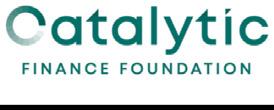
 DAVID ALBERTANI Chief Executive Officer, Catalytic Finance Foundation
DAVID ALBERTANI Chief Executive Officer, Catalytic Finance Foundation
BIOGRAPHY
David Albertani is the CEO of the Catalytic Finance Foundation (‘Catalytic’). At Catalytic he leads the efforts in setting up new blended financial vehicles dedicated to sustainable infrastructure and oversees Technical Assistance implementation.
Among other Catalytic programs, Mr. Albertani has been leading the setup of the Subnational Climate Fund (SCF), targeting the implementation of a 750 MUSD blended finance vehicle for subnational sustainable infrastructure. Mr. Albertani also successfully managed a waste management program in Oran, Algeria which got him official recognition from the Algerian authorities. With sponsorship from Bloomberg Philanthropies, Mr. Albertani is currently leading efforts to design new blended finance vehicles, including on Port Decarbonization at a global level.
Mr. Albertani is an expert in waste and energy infrastructure project preparation and uses his project financing skills to bring projects to bankability.
Previously, he was a scientific associate in the mathematics department at the University of Geneva. He specialized in the field of probabilities and mechanical statistics where he published scientific articles on correlation estimates. He has been member of the council of the Swiss Doctoral Program of Mathematics.
Speaker
44
Port Decarbonization SolutionCatalytic Finance Foundation
1. Summary
The Catalytic Finance Foundation (‘Catalytic’) is a non-profit foundation based in Switzerland with a mission to accelerate the deployment of catalytic finance solutions for sustainable infrastructure. It incubates catalytic finance initiatives, such as blended finance investment funds, and supports the development of impactful projects in the form of technical assistance. Catalytic leads the implementation of the Catalytic Cities programme, sponsored by Bloomberg Philanthropies.
Shipping and ports are significant sources of Greenhouse gas (GHG) emissions and air pollution. While the industry has committed to reducing its environmental impact, progress towards a 1.5°C scenario by 2050 has been slow due to various barriers. A blended-finance solution can help overcome these barriers, provided it is structured to address key stakeholders’ interests and concerns. In this context, Catalytic is leading the design and structuring of a Port Decarbonization funding solution (the ‘Solution’) under its Catalytic Cities programme.
2. Context
The maritime shipping industry emits as much CO2 as Germany, which means that if it were its own country, it would be the sixth largest emitter in the world. Moreover, air pollution from ships contributes to an estimated 250,000 premature deaths and 6.4 million cases of childhood asthma worldwide each year. The impact is global, with critical impact zones in China, Singapore, Panama, and Brazil as well as along the coastlines of Asia, Africa, and South America.
While industry efforts are underway, they are insufficient to ensure a global warming below 1.5°C. Based on the International Maritime Organization’s GHG strategy, the goal is to reach netzero close to 2050.However, as the volume of maritime trade is expected to triple by 2050, the industry would need to achieve zero GHG emissions by 2040 for a 1.5°C scenario or by 2050 for a 2.0°C scenario. To achieve this, no single individual measure will deliver decarbonization on its own and there is a need to take a multi-faceted approach.
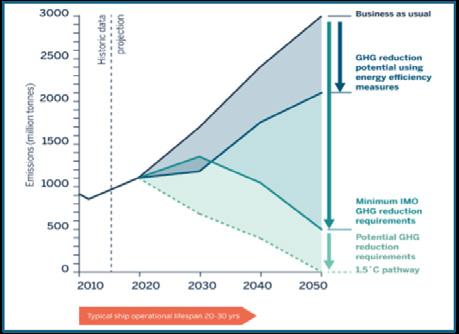
Source: UMAS (2019)
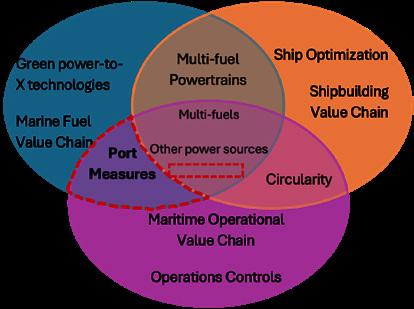
Source: UNCTAD (2022)
Conference Paper
45
Graph 1: Energy efficiency measures will not be enough to reach IMO’s GHG
Graph 2: Multiple pathways to decarbonization
3. Investable Solutions
Various solutions offer strong opportunities for the multifaceted decarbonization of ports but there remain financing barriers to scale them. Catalytic identified the following available solutions to accelerate decarbonization of ports:
n Renewable Energy and Decentralised Generation: Investments in renewable energy generation and distribution at port will play a pivotal role in the deployment of other technologies for port decarbonization. Large land area of ports, vast warehouse roof space, and large open areas for parking and storage, offer opportunities for renewable energy generation on-site that could be used to power operations. Moreover, microgrids can aid ports in achieving self-sufficiency by guaranteeing the continuous independent supply of electricity.
n Shore Power and Alternative Fuel Infrastructure: The deployment of multiple energy sources will ensure power reliability in different contexts. Cold ironing, also known as shore power, provides electrical power to ships while at port, allowing them to shut down their engines and reduce emissions. Infrastructure for Alternative Fuels such as green ammonia or green hydrogen would complement this. Deployment is limited by high upfront costs, absence of appropriate infrastructure such as grid capacity to support the high electricity output, and lack of incentives through policies and regulation.
n Cargo Handling Decarbonization: Substituting diesel-powered machinery will reduce ports’ carbon footprint and enhance local air quality. While the mix of cargo handling equipment will vary by port, they are typically powered by diesel fuel and could be switched to lower-emission propane, zero-emission battery, or hydrogen electric. Wider deployment is hindered by high upfront costs and commercial viability, lack of infrastructure, such as chargers and alternative fuel availability, and grid capacity constraints.
n Operational Efficiencies: Operational efficiencies at port are relatively accessible in terms of technology and costs. Enhancing operational efficiency (such as through LED retrofitting, Heat, Ventilation, Air Conditioning (HVAC) upgrades, and smart technologies) can help ports to reduce their carbon footprint, while simultaneously yielding gains in energy efficiency that can offset implementation costs in the short term. LED retrofits are particularly attractive in ports with high electricity costs, such as small island nations. Operational efficiency measures are easily replicable across other ports. Barriers to wider deployment include high upfront costs and absence of energy and waste management systems at port.
The main barriers to making investments into these solutions revolve around: upfront costs, ii) unclear benefits, iii) lack of supporting infrastructure, iv) lack of knowledge, v) lack of available long-term capital, vi) absence of policy and regulatory incentives.
Conference Paper 46
4. Catalytic’s Offer
To address the remaining barriers to accelerate investments into decarbonizing solutions, the solution that Catalytic is pursuing will have the following characteristics:
n Global coverage to reflect the interconnectedness of ports and support their various needs.
n A ‘packaged’ offer offering various solutions in parallel, as they are interdependent.
n A technical assistance component to help port authorities and other stakeholders to better access and plan their projects.
n Concessional funding to attract private capital into projects with higher perceived or real risk, especially in contexts where government grants and subsidies are not available.
5. Impact
The solution targets Climate Action (SDG 13), Good Health and Wellbeing (SDG 3), and Gender Equality (SDG 5), with additional expected co-benefits in SDGs 7, 9, 14, and 17. Moreover, the solution will implement impact safeguarding and monitoring, reporting and verification frameworks in line with the best practice of the impact investing industry. Capacity-building initiatives will also be implemented for greater impact.
The impact of the solution is estimated at $2-451 per tonne of CO2 which is cost-competitive compared to other climate mitigation initiatives.
All projects will comply with international standards and practices. Environmental and Social Risks will be minimised through context assessments, integrated ESG due diligence checks, Environmental and Social Impact Assessment in line with international standards beyond national legal requirements. Action Plans will be developed for port authorities, port operators, terminal operators and or shipping lines to ensure that potential risks are identified and managed as required. This corresponds to a rigorous “do no harm” approach, which will be a key pre-condition to claim any positive impact.
References
Catalytic’s commissioned studies and in-house research and expertise
Carlo, Raucci, et al. UMAS Maritime Consultancy Delivering Applied Solutions for a Carbon Constrained Future Aggregate Investment for the Decarbonisation of the Shipping Industry. 2020. PowerPoint Presentation (globalmaritimeforum.org)
Lind, Mikael, and Wolfgang Lehmacher. “Decarbonizing the Maritime Sector: Mobilizing Coordinated Action in the Industry Using an Ecosystems Approach.” UNCTAD, 8 June 2022, unctad.org/news/ decarbonizing-maritime-sector-mobilizing-coordinated-action-industry-using-ecosystems-approach
1 The final cost will highly depend on grid emission factors and other assumptions.
Conference Paper 47
48
DAY 2
SESSION 4
Green Shipping Corridors
Ports and shippers are signing deals which establish shipping corridors, allowing shipping routes to respond quickly to policy and make rapid decisions to create more sustainable container movement. Hearing from different green corridor projects and partners as to their involvement and collaboration for sustainability.
49
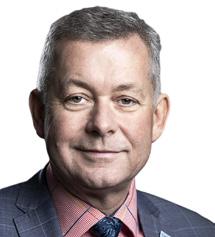 LARS ROBERT PEDERSEN
Deputy Secretary General, BIMCO
LARS ROBERT PEDERSEN
Deputy Secretary General, BIMCO
BIOGRAPHY
Deputy Secretary General Lars Robert Pedersen is responsible for BIMCO’s technical and operational activities involving all technical and nautical issues within the area of marine, environment, ship safety and maritime security. Lars Robert is furthermore responsible BIMCO’s activity related to regulatory developments relevant to shipping at international, regional and national levels.
In the past decade, he has served on IMO expert groups on market-based measures and on the steering group for the IMO 2020 fuel oil availability study. Lars Robert has also chaired the Motorship Propulsion & Future Fuels Conference for the past 6 years. He joined BIMCO in early 2010 after a long career at A.P. Moller-Maersk (APMM). For more than 25 years he was involved in regulatory affairs at IMO level, technical management of the Maersk fleet of container ships and prior to that as a seagoing engineer officer. Lars Robert holds an unlimited Chief Engineers license.
Moderator
50
 ELENA TALALASOVA
Senior Project Manager, Global Maritime Forum
ELENA TALALASOVA
Senior Project Manager, Global Maritime Forum
BIOGRAPHY
Elena Talalasova is a senior project manager at the Global Maritime Forum, where she leads workstreams on national policy for international shipping decarbonisation and evaluates the progress of the global green corridor movement. In addition, she advises multiple existing green corridor initiatives on their policy engagement process.
Elena boasts a decade of experience working on sustainability transitions, focusing specifically on the intersection of transport and energy sectors. Before joining the Global Maritime Forum, she developed sector-specific roadmaps and offered policy advice for decarbonising the national aviation and mining industries at state-owned Research Institutes of Sweden. She holds a master’s in environmental management and policy from Lund University.
Speaker
51
Annual Progress Report on Green Shipping Corridors
Why do green corridors matter?
Green shipping corridors – defined as specific trade routes where the feasibility of zeroemission shipping is catalysed by public and private action – are at a crucial point in their early development.
Decarbonising shipping is difficult, but some trade routes offer relative advantages, either because they are near potentially attractive fuel supply hubs, have comparatively simple operational profiles, or are likely to have favourable economics. The idea behind establishing green corridors is to identify and leverage these advantageous routes for accelerated action. While green corridors are focused enough to make decarbonisation manageable, they are also large enough to be impactful. They offer scope for participation from all value chain actors needed to scale zero-emission shipping, including fuel producers, shipowners and operators, cargo owners, and regulatory authorities. They could provide offtake certainty to fuel suppliers, supporting essential investments in zero-emission fuel production and bunkering infrastructure.
The importance of green shipping corridors as a tool in the sector’s decarbonisation toolkit has been reinforced by the International Maritime Organisation’s 2023 Greenhouse Gas Strategy. The updated strategy, agreed in July, sets ambitious targets for the reduction of emissions from the sector, including 70-80% reductions by 2040 and full decarbonisation “by or around” 2050. The strategy further identifies a milestone of 5-10% adoption of zero- or near-zero-emission fuels by 2030.
To reach these targets, zero-emission shipping technologies, standards, infrastructure, and business models must all be mature by the end of this decade. Corridors are ideal candidates for supporting this maturation at the scale and pace needed.
What does it take to develop a corridor?
Green corridors are, by their nature, complex, multi-year initiatives by first-mover companies and governments to explore, assess and, ultimately, establish initial pockets of zero-emission shipping this decade.
While there is variation in the approaches taken by existing corridor initiatives, a common process for green corridor development has begun to crystallise. Like other major industrial projects, it consists of several discrete stages. These stages do not necessarily have to be tackled consecutively. However, they do represent bases that must be covered to narrow the field of possibilities down into a tangible action proposition.
Conference Paper
52

Overview of green corridor progress
The second edition1 of the Annual Progress Report on Green Shipping Corridors provides a checkpoint for a movement that, in just over a year, has grown in both numbers and maturity.

The number of announced initiatives more than doubled this year, a development driven by both an acceleration in governmental efforts to establish green corridors, and new industryand port-led efforts. Shipping companies, ports and the civic sector (non-governmental nonprofit organisations) represent over half of the 171 stakeholders involved in green corridors.
The container segment is the most prominent in the green corridor space, with limited but increasing activity in the bulk segment, and very little activity in the cruise and tanker segments. Methanol and ammonia have solidified their position as the most popular fuel choices (more on fuel pathway progress can be found in the next section).
The South Pacific and South Atlantic regions witnessed an increase in activity, with new initiatives emerging in both South America and Africa. The numbers remain low, however. Asia has significantly increased its representation, with several transpacific initiatives announced this year, while the number of short-sea corridors in Europe doubled.
Conference Paper 53
There is a growing level of maturity in the 22 corridor initiatives recorded in the previous edition of the report, with over half having progressed to a new development stage over the past year. While a few of the remaining ten initiatives appear to have stalled, most report that this does not reflect a lack of progress but rather the time- and resource-intensiveness of their current activities.
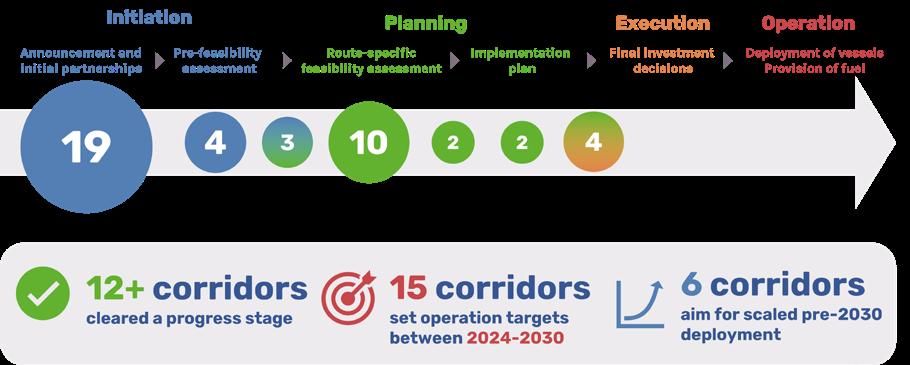
The increased level of maturity has yielded a clearer sense of timelines for action. Fifteen corridors have now set operational targets – specifying when the corridor should be “online” with operational zero-emission vessels and infrastructure. Relevant initiatives are planning to introduce methanol, hydrogen, or electric vessels from 2024-2030 and ammonia vessels from 2027-2030, reflecting the varying readiness levels of these solutions.
For the first time, implementation plans have also been released, outlining the critical pathway to reach initiative targets and the required actions identified throughout the value chain. Three initiatives have completed plans this year, with at least three more in advanced stages of development.
The other side of this maturation is a new set of challenges identified this year. As the corridors move closer to implementation and into the commercial space, new problems emerge that are aggravated by pre-existing issues. Despite significant progress in determining fuel pathways, many corridors have still not made key fuel decisions. The complexity of governing corridors as cross-sectoral, multi-stakeholder initiatives continues to slow down progress within multiple categories. On the commercial front, gaps in understanding suitable business arrangements to enable deployment have been revealed. On the policy front, the need for implementation support requires an increase in government resources and capacity.
Recommendations and next steps
With these challenges in mind and with sights set on 2024, we conclude that:
1. Decisiveness on fuel pathways separates successful and stalling initiatives. Given the trade-offs involved in determining the fuel pathway, the choice of whether to adopt a mono- or a multi-fuel approach must be a result of careful consideration.
2. Green corridors need to explore, trial, and adopt innovative commercial, business, and financial arrangements across the three challenge areas of chartering, vessel ownership, and fuel offtakes. The knowledge sector can support the corridors by providing a toolbox of potential mechanisms and considerations.
Conference Paper 54
3. Governments’ focus should gradually move towards supporting implementation, with first dialogues and decisions regarding potential design of measures taken in 2024. Governments can trigger a race to the top among green corridors and explore multiple policy pathways to increase the effectiveness and cost-efficiency of their support.
4. Appropriate governance structures can accelerate progress. Focus should be placed on stakeholder alignment, multilevel participation, and nurturing a sense of co-creation and co-ownership.
5. Green corridors should strive to contribute to an equitable global regime and maximise their co-benefits. Knowledge sharing is a central mechanism to achieve that, while additional strategies include leveraging ports’ positions within local communities and contributing to the development of training programmes and requirements for future fuels and vessels.
If green corridors are to hit their targets and fulfil their function, 2024 must be a breakthrough year in which front-running initiatives begin to execute their plans and others are primed to quickly follow. Success hinges on accelerated effort within the corridors, swift introduction of fit-for-purpose measures by the governments and a willingness of the broader shipping ecosystem to get behind the frontrunners.
Conference Paper 55


MAIKE NIMMRICH
Commercial Asset Manager, MPC Containers, ASA
BIOGRAPHY
Maike is a Commercial Asset Manager at MPC Container Ships (MPCC), a tonnage provider owning 59 vessels with focus on the Feeder segment.
MPCC is committed to aligning their targets with the 2023 IMO strategy to reach net zero by 2050. MPCC aims to reach these goals through investment into retrofitting the existing fleet, investments into renewing the fleet including DF methanol vessels and the industry’s ability to scale the use of biofuels and other sustainable fuels.
Maike is MPCC’s representative at the Silk Alliance and leads the company’s collaborative efforts with charter customers to achieve environmental compliance and meet MPCC’s ambitious targets.
Maike has over 10 years of experience in ship management, having worked with different ship owners including MPC Container Ships in Hamburg and Singapore. She holds degrees in Shipping, Trade and Transport from London Metropolitan University, as well as Business Administration and Business Psychology from Leuphana University of Lüneburg.
Speaker
56
 MR WEI SIANG NEW Director, Maritime Decarbonisation & Net-Zero Pathways, MPA
MR WEI SIANG NEW Director, Maritime Decarbonisation & Net-Zero Pathways, MPA
BIOGRAPHY
Wei Siang is the Director for Decarbonisation and Net-Zero Pathways in the Maritime Decarbonisation Division at the Maritime and Port Authority of Singapore (MPA). He oversees MPA’s efforts to drive the decarbonisation of international shipping, through the adoption of low- and zero emission fuels and energy efficiency measures, and the development of Green and Digital Shipping Corridors. Prior to this, Wei Siang was with Singapore’s Ministry of Trade and Industry, where he oversaw the development of the energy sector in Singapore. This includes developing Singapore’s energy policies and programmes for cooperation at bilateral, regional and international fora. Wei Siang has also worked at Singapore’s Ministry of Manpower and Ministry of Education.
Wei Siang has a Master of Science degree in Management Science and Engineering from Stanford University and a Bachelor of Science degree in Mechanical Engineering from Cornell University.
Speaker
57
The Maritime and Port Authority of Singapore (MPA)’s Green and Digital Shipping Corridor Projects
INTRODUCTION
1. According to the 4th International Maritime Organization (IMO) greenhouse gas (GHG) Study, the shipping industry contributes to around 3% of global GHG emissions, and this figure is expected to grow. Faced with the urgent need to intensify and accelerate maritime sector decarbonisation, in July 2023, the IMO adopted the 2023 IMO GHG Strategy which commits Member States to peak GHG emissions from international shipping as soon as possible and reach net-zero by or around, i.e. close to 2050, taking into account different national circumstances whilst pursuing efforts to phase them out. The Revised Strategy further included indicative checkpoints to reduce GHG emissions from international shipping by at least 20%, striving for 30% by 2030, and by 70%, striving for 80%, by 2040.
2. As a responsible global hub port, Singapore plays an important role in catalysing the greening of international shipping, and we remain committed to providing zero and near-zero emission solutions to meet the future energy needs of the global shipping industry. We acknowledge that such a transition will require strong cooperation amongst various stakeholders, and consensus-building on areas such as zero and net-zero technologies, safety and handling standards, financing etc. Therefore, Singapore has been a strong proponent of Green and Digital Shipping Corridors (GDSCs) to conduct pilots and trials to test solutions. Since 2022, we have established five bilateral GDSCs and are part of the Silk Alliance which focuses on building a “green corridor cluster” around the Port of Singapore.
INTRODUCTION TO GREEN AND DIGITAL SHIPPING CORRIDORS
3. The 2023 Annual Progress Report on Green Shipping Corridor, prepared by the Global Maritime Forum (GMF) with input from Singapore, revealed that the number of green corridor initiatives around the world doubled in the last year from 21 to 44.
4. As a signatory to the Clydebank Declaration for Green Shipping Corridors1, Singapore is part of five active GDSC projects with (i) Port of Rotterdam, (ii) Port of Los Angeles and Port of Long Beach, (iii) Tianjin, (iv) Japan and (v) Australia (details on these GDSCs are provided in Section 3). The corridors approach has the potential to chart a pathway for green energy transition in the maritime sector. GDSCs aim to support the decarbonisation of the maritime industry and improve efficiencies through digitalisation and can do so by mobilising demand from the private sector.
5. When operational, GDSCs can:
i. Accelerate the development of alternative fuel supply chains, technologies and business models along the corridor routes;
ii. Facilitate deployment of large-scale pilot projects to trial sustainable shipping solutions; and
iii. Build consensus on best practices and developing harmonised global standards to build confidence amongst industry first movers.
1 The Clydebank Declaration was launched at COP26 in November 2021 with the aim to put the maritime sector on track to achieve net-zero by 2050.
Conference Paper
58
MPA’S GREEN AND DIGITAL SHIPPING CORRIDORS
Singapore-Rotterdam GDSC
6. MPA and the Port of Rotterdam signed a Memorandum of Understanding (MoU) in August 2022 to establish a GDSC. Apart from being among the largest bunkering ports in the world, Singapore and Rotterdam are vital links on the Asian-European shipping lanes. Each alternative fuel has its own challenges relating to costs, availability, safety, and restrictions in range due to lower energy density compared to fossil fuels. To tackle these challenges, the two port authorities agreed to bring together a broad coalition of shippers, fuel suppliers and other companies to collectively work on potential solutions. Beyond alternative fuels, the MoU also aims to optimise maritime efficiency, safety, and the transparent flow of goods by creating a digital trade lane where relevant data, electronic documentation and standards are shared. This will facilitate the seamless movement of vessels and cargo and optimise just-in-time arrival of vessels from port to port. To-date, the corridor has brought together more than 20 global value-chain partners across shipping lines, fuel suppliers, port authorities and operators, industry coalitions, banks, leading institutes of higher learning and knowledge partners.
Singapore-Los Angeles-Long Beach GDSC
7. At United Nations Climate Change Conference in December 2023 (COP28/CMP18/CMA5), MPA, Port of Los Angeles (LA) and Port of Long Beach (LB) unveiled a partnership strategy for a GDSC across the Pacific Ocean. This strategy builds on the MoU signed in April 2023. As leading global hub ports, Singapore, LA and LB are vital nodes on the trans-pacific shipping lane and key actors in the maritime sector’s green and digital transition. The three partners established a GDSC with the aim to accelerate the decarbonisation of the maritime industry and the development of digital technology solution and enablers. The ports and C40 Cities will work together and with value-chain stakeholders from the fuel and maritime sectors to:
i. Facilitate the transition to zero and near-zero emission marine fuels;
a. Support the transition to zero and near zero emission fuels on the shipping route between Singapore and the San Pedro Bay Port Complex;
b. Facilitate the supply and adoption of a range of fuels that are demonstrated to achieve the transition to net-zero GHG emissions from shipping, including development of the necessary infrastructure and standards required for bunkering;
ii. Advance technology development;
a. Identify and collaborate on pilot and demonstration projects along with initiatives to advance the development and transition to zero and near-zero emission fuels and technologies to support decarbonisation and emissions reduction;
b. Advance the development, demonstration and adoption of digital technologies by the maritime shipping industry that improve effectiveness and support decarbonisation;
iii. Set standards and exchange knowledge;
a. Promote best practices and encourage standard setting across the maritime s hipping and supply chain industries that can support both decarbonisation and digitalisation such as enhanced digital systems interoperability including cyber security;
iv. Advocate for the advantages of GDSCs;
a. Provide advocacy and thought leadership globally and to industry to communicate and amplify the aims, benefits and projects of the GDSC.
Conference Paper 59
As next steps, the ports and C40 Cities commissioned a baselining study to analyse trade flows and vessel traffic between Singapore, LA and LB to guide the implementation of this GDSC.
Singapore-Japan GDSC
8. The Ministry of Transport of the Republic of Singapore (MOT) and the Ministry of Land, Infrastructure, Transport and Tourism of Japan (MLIT) signed a Memorandum of Cooperation (MoC) to establish the Singapore-Japan GDSC in December 2023. Under the collaboration, MPA will work with six Japanese ports – namely, the Port of Tokyo, Port of Yokohama and Port of Kawasaki supporting the Kanto Region, the Port of Osaka and the Port of Kobe supporting the Kansai Region and the Port of Nagoya supporting the Chubu Region. These six Japanese ports are the key nodes for the major economic regions of Kanto, Kansai and Chubu. They handled a combined cargo total of about 57 million tonnes in 2020. They have also been respectively embarking on various initiatives under the MLIT’s overarching Carbon Neutral Port plan.
9. With the establishment of the GDSC, MPA and the Japanese port partners aim to embark on pilot projects and trials for alternative marine fuels such as ammonia and hydrogen. The two sides will also work together to develop the necessary bunkering infrastructure, standards and training. They will also encourage development and adoption of technologies to decarbonise port infrastructure. On the digitalisation front, Singapore and Japan will identify and implement digital solutions to streamline port clearance processes. Both sides will also exchange information and best practices on maritime cybersecurity risks as well as other aspects of maritime digitalisation.
Singapore-Tianjin GDSC
10. MPA and the People’s Republic of China’s Tianjin Municipal Transportation Commission signed a MoU to establish the Singapore-Tianjin GDSC in December 2023. This MoU marks the first GDSC established between Singapore and China to support the decarbonisation, digitalisation and growth of the maritime industry between Singapore and the Bohai Region. The Singapore-Tianjin GDSC will serve as a valuable testbed for both countries to pilot and trial digital solutions, alternative fuels and technologies, and facilitate talent development to support the decarbonisation and digitalisation of shipping.
11. Singapore and Tianjin will work with the research community, the institutes of higher learning, and industry stakeholders such as shipping lines, port operators, shipbuilders, classification societies, and bunker suppliers to enable more efficient port clearance through digital exchanges, encourage the offtake of zero or near-zero greenhouse gas emission fuels and adoption of new fuel technologies, spur innovation and support the growth of the maritime startups community, and facilitate manpower training and professional development. The establishment of the Singapore – Tianjin Green and Digital Shipping Corridor reaffirms the strong commitment by Singapore and Tianjin to accelerate maritime decarbonisation and digitalisation. Singapore will also be exploring the establishment of similar collaboration with other maritime and port ecosystems within China.
Singapore-Australia GDSC
12. Singapore and Australia signed a MoU to formally collaborate on establishing the SingaporeAustralia GDSC in March 2024. Under the MoU, both countries will work with interested partners to explore opportunities to develop zero or near-zero GHG emission fuel supply chains for the maritime industry, including building necessary infrastructure, formalising standards, and developing and implementing the training requirements.
Conference Paper 60
13. The MoU will also explore facilitating digital information exchange to enable efficient port clearance, port calls and flow of vessels between Singapore and Australia and facilitate collaboration between MPA, Australian federal, state and territory governments, as well as industry stakeholders. Australia holds great potential to be a key producer of green marine fuels, and Singapore is the world’s largest bunkering and busiest transshipment hub port with a vibrant research and innovation ecosystem. The collaboration is expected to help catalyse the development and uptake of zero or near-zero GHG emission technologies and the adoption of digital solutions to enhance the resilience, efficiency and sustainability of global maritime supply chains.
14. The Australia-Singapore Initiative on Low-Emissions Technologies (ASLET) for Maritime and Port Operations will support the GDSC. ASLET is co-delivered by the Commonwealth Scientific and Industrial Research Organisation (CSIRO) in collaboration with MPA and is supported by the government of Singapore and Australia. ASLET aims to accelerate demonstration and industry deployment of zero and near-zero emissions fuels and technologies in maritime and port operations. The initiative will facilitate the research, demonstration, and commercialisation of zero and near-zero GHG emission technologies, fuels and/or energy sources for use in maritime shipping and port operations. The initiative seeks to fund solutions that make use of technology from either Australia or Singapore and brings equitable benefit to both countries through deployment project pipelines.
CONCLUSION
15. By bring together stakeholders from across the value chain to work to implement pilots and trials for zero and near-zero fuels and technologies, MPA and its like-minded partners are able to coordinate decarbonisation efforts, build consensus on green shipping best practices and standards, and improve access to and adoption of such fuels and technologies. GDSCs are crucial to facilitate our energy transition, and we must continue to cultivate public-private stakeholder collaborations and develop innovative ideas in order to achieve the IMO’s goal for international shipping to reach net-zero GHG emissions by or around 2050.
Conference Paper 61
 MARK BUTTON Associate, ARUP
MARK BUTTON Associate, ARUP
BIOGRAPHY
Mark Button is an Associate at Arup, the global sustainable development consultancy, where he is a leader on port and shipping decarbonisation. Mark works with stakeholders from across the value chain of zero emission shipping to develop strategies, action plans and feasibility studies that can lead to investment aligned with global climate goals.
Speaker
62
Green Shipping Corridors – lessons from global initiatives
1.1 Introduction
1.1 Introduction
Mark works with actors across the ecosystem of maritime transport – from energy generators and fuel providers to port authorities and shipping lines - to bring together business aims, and the urgent action needed to meet climate goals.
Green Shipping Corridors have emerged as a collaborative space for first-mover action on shipping decarbonisation.
Green Shipping Corridors have emerged as a collaborative space for first-mover action on shipping decarbonisation.
These partnerships - which often focus on the supply and demand development for scalable zero emission fuels along a specific transport route – are paving the way for the rapid action needed in the 2030s to align with decarbonisation goals.
These partnerships - which often focus on the supply and demand development for scalable zero emission fuels along a specific transport route – are paving the way for the rapid action needed in the 2030s to align with decarbonisation goals.
In these initiatives, stakeholders from across the value chain of zero carbon shipping come together to enhance the technical, commercial and regulatory maturity of low carbon maritime trade.
In these initiatives, stakeholders from across the value chain of zero carbon shipping come together to enhance the technical, commercial and regulatory maturity of low carbon maritime trade.
Arup are supporting Green Shipping Corridors and other early adopter initiatives for shipping decarbonisation around the world. This paper brings together three emerging lessons from our recent work.
Arup are supporting Green Shipping Corridors and other early adopter initiatives for shipping decarbonisation around the world. This paper brings together three emerging lessons from our recent work.
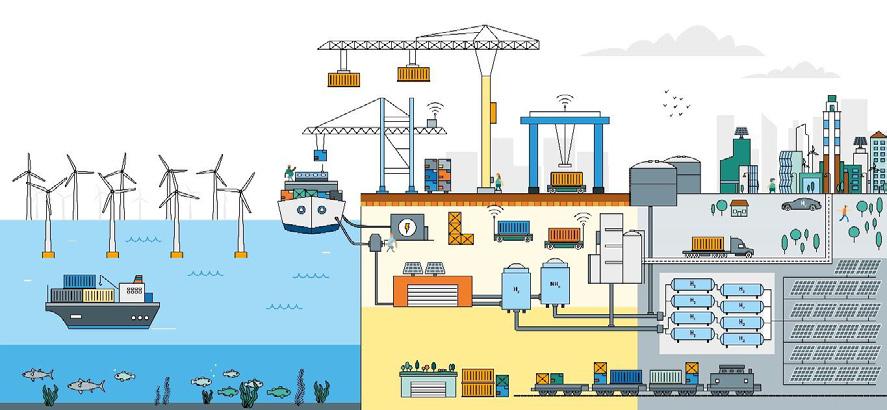
Figure 1 - Ports at the centre of future zero carbon transport and energy systems (Arup image)
1.2 Lesson 1: the dynamics of zero GHG fuel supply remain uncertain
At present, shipping is served by a global fuel supply system, with bunkering taking place at major port hubs that are key nodes for both shipping traffic and flows of fossil fuels.
Fossil fuels used to power shipping, such as Low Sulphur Fuel Oil (LSFO) and Marine Gas Oil (MGO) are relatively low cost, energy dense and easy to transport – albeit polluting and carbon intensive. Furthermore, fuel costs make up a significant percentage of the total cost of ownership for vessels, driving the design of vessels with large fuel storage tanks that allow them to refuel when most financially advantageous.
This drives a competitive and truly global market, where bunker hubs take advantage of economies of scale to connect lowest cost fossil fuels - produced and refined globally - with busy international shipping routes.
Conference Paper
63
Figure 1 - Ports at the centre of future zero carbon transport and energy systems (Arup image)
Green Port and Shipping Conference 2024 Green Port and Shipping Conference 2024 | | 28 March 2024 | Arup Green Shipping Corridors - Lessons from global initiatives Page 1 Arup Biography
As regulation, investors and cargo-owners drive decarbonisation of shipping, new zero and near-zero GHG fuel supply chains are required. These fuels are relatively high cost, less energy dense and often more difficult to transport compared to traditional fuels – it is of course essential for global climate goals that shipping rapidly adopts these fuels.
Two broad categories of fuel are competing to supply deep sea shipping: hydrogen-derived fuels and biomass-derived fuels.
Hydrogen-derived fuels, such as e- and blue-ammonia, will be produced in regions with lowcost renewable energy or perhaps locations with low-cost natural gas and carbon capture and sequestration facilities. E-methanol and E-methane would also require a sustainable supply of carbon feedstock.
Biomass-derived fuels - such as bio-methane and bio-methanol - requires significant quantities of sustainable organic feedstocks including agricultural waste, food waste or energy crops. Sustainable is a key word here – we must fully account for the climate impacts of land-use change and ensure food security and biodiversity is not compromised.
Furthermore, there are some advantages to biofuel production being co-located with hydrogen-derived fuel production and for both to be integrated within green industrial hubs more generally.
It’s clear the conditions for efficient and sustainable production of zero GHG fuels are different to those that drive low-cost production and refining of fossil fuels for marine bunker. So what might a future fuel supply system for shipping look like?
Key drivers here include:
1. The relative cost of production vs cost of transport of zero GHG fuels, considering their lower energy density.
2. The opportunities to adapt existing infrastructure for zero GHG fuel production, at least in the near term.
3. Geo-politics, energy security and resilience – recognising the increasing global uncertainty linked to climate change and other disruptors.
These factors will influence whether the future zero GHG fuel supply system will look local, regional or global in nature – with significant benefits for countries that can capture a share of this multi-trillion-dollar investment opportunity.
Arup and UMAS international have been exploring the near-term dynamics of zero GHG fuel production, considering a high-level case study of early-adopter fuel demand in the UK and the relative merits of local vs international fuel supply.
To meet global climate goals, it is key for international shipping to reduce emissions by at least 20%, striving for 30%, by 2030, compared to 2008. Additionally, at least 5%, striving for 10% of fuels (or energy technologies) should be near-zero GHG by 2030. There is a key role for early adopters to realise supply and demand for 2030, ahead of the rapid uptake required in the subsequent decade.
Conference Paper 64
To meet global climate goals, it is key for international shipping to reduce emissions by at least 20%, striving for 30%, by 2030, compared to 2008. Additionally, at least 5%, striving for 10% of fuels (or energy technologies) should be near-zero GHG by 2030. There is a key role for early adopters to realise supply and demand for 2030, ahead of the rapid uptake required in the subsequent decade.
Conference Paper
Considering, for example, the Northeast of England in the United Kingdom Catering to the shipping demand from the hubs of Teesside, the Humber, and to a lesser extent, the Tyne River, are estimated to require a current demand of around 513 ktonnes of Heavy Fuel Oil equivalent (HFOe) in 2023.To decarbonize 10% of their combined energy demand, approximately 100 ktonnes of either ammonia or methanol would be needed, considering energy density differences. Similar levels of near-term demand would be required in other areas of the UK to meet near-term decarbonisation targets
Considering, for example, the Northeast of England in the United Kingdom. Catering to the shipping demand from the hubs of Teesside, the Humber, and to a lesser extent, the Tyne River, are estimated to require a current demand of around 513 ktonnes of Heavy Fuel Oil equivalent (HFOe) in 2023.To decarbonize 10% of their combined energy demand, approximately 100 ktonnes of either ammonia or methanol would be needed, considering energy density differences. Similar levels of near-term demand would be required in other areas of the UK to meet near-term decarbonisation targets.

Figure 2 – Exploring demand in the north-east of England (Image from UMAS International)
Figure 2 – Exploring demand in the north-east of England (Image from UMAS International)
This level of demand could be supplied via import of fuels from GW-scale production hubs under development, such as NEOM. There are advanced places to develop import infrastructure in the UK for zero GHG fuels, such as the Immingham Green Energy Terminal that will be capable of importing e-ammonia. Alternatively, there could be an opportunity for local production of fuels, for example linked to the green industrial clusters in the region.
This level of demand could be supplied via import of fuels from GW-scale production hubs under development, such as NEOM. There are advanced places to develop import infrastructure in the UK for zero GHG fuels, such as the Immingham Green Energy Terminal that will be capable of importing e-ammonia. Alternatively, there could be an opportunity for local production of fuels, for example linked to the green industrial clusters in the region.
To illustrate the magnitude of this cost differential, Arup has modelled the Levelized Cost of Ammonia (LCOA) for two cases:
To illustrate the magnitude of this cost differential, Arup has modelled the Levelized Cost of Ammonia (LCOA) for two cases:
1. Produced from a MW-scale green ammonia production facility in the Northeast of the UK and transported to a terminal in Southampton by a 20,000 m3 gas-carrier.
1. Produced from a MW-scale green ammonia production facility in the Northeast of the UK and transported to a terminal in Southampton by a 20,000 m3 gas-carrier.
2. Produced from a GW-scale facility in Morrocco and transported to a terminal in Southampton by an 80,000 m3 capacity gas-carrier.
2. Produced from a GW-scale facility in Morrocco and transported to a terminal in Southampton by an 80,000 m3 capacity gas-carrier.
See Figure 3 on the next page for a summary
See Figure 3 on the next page for a summary.
The cost premium associated with UK production may be clear, however commercial barriers to the development of production facilities in some international locations, as well as the necessary infrastructure to export and ship the fuel, may mean there are opportunities for the UK to play a role in the early stages of the transition.
The cost premium associated with UK production may be clear, however commercial barriers to the development of production facilities in some international locations, as well as the necessary infrastructure to export and ship the fuel, may mean there are opportunities for the UK to play a role in the early stages of the transition.
65
Green Port and Shipping Conference 2024 Green Port and Shipping Conference 2024 | | 28 March 2024 | Arup Green Shipping Corridors - Lessons from global initiatives Page 3
Renewable energy cost H2 Production NH3 Production Port & Storage Infrastructure Shipping
Figure 3 – High level comparison of the Levelized Cost of Ammonia (LCOA) based on local vs international supply
Figure 3 – High level comparison of the Levelized Cost of Ammonia (LCOA) based on local vs international supply
In the near term, there could be opportunities in Northern Europe to serve near term demand adapting existing infrastructure assets, for example ammonia production facilities, that can be fed with green hydrogen rather than grey hydrogen derived from natural gas as present. With the recent increases in natural gas prices, a number of these facilities are under threat of closure, threatening loss of jobs, skills and valuable capital assets. Early adopter action on fuel supply for shipping could safeguard existing capabilities, enhance energy security and have a snowball effect on maritime decarbonisation.
In the near term, there could be opportunities in Northern Europe to serve near term demand adapting existing infrastructure assets, for example ammonia production facilities, that can be fed with green hydrogen rather than grey hydrogen derived from natural gas as present. With the recent increases in natural gas prices, a number of these facilities are under threat of closure, threatening loss of jobs, skills and valuable capital assets. Early adopter action on fuel supply for shipping could safeguard existing capabilities, enhance energy security and have a snowball effect on maritime decarbonisation.
In the long term, studies such as the ‘Optimal fuel supply of green ammonia to decarbonise global shipping1’ suggest a regional picture of supply, with demand served from low-cost hubs within a reasonable distance. But this picture is highly sensitive to relative production costs and the cost of transporting fuels. Furthermore, the Ukraine war and Red Sea crisis have emphasised the importance of energy security and supply chain resilience – demonstrating the risks to fully globalised fuel supply systems for shipping.
In the long term, studies such as the ‘Optimal fuel supply of green ammonia to decarbonise global shipping1’ suggest a regional picture of supply, with demand served from low-cost hubs within a reasonable distance. But this picture is highly sensitive to relative production costs and the cost of transporting fuels. Furthermore, the Ukraine war and Red Sea crisis have emphasised the importance of energy security and supply chain resilience –demonstrating the risks to fully globalised fuel supply systems for shipping.
The dynamics of energy supply remain uncertain, but the need for action by early adopters to pave the way for rapid decarbonisation in the 2030s is clear.
The dynamics of energy supply remain uncertain, but the need for action by early adopters to pave the way for rapid decarbonisation in the 2030s is clear.
1.3 Lesson 2: Green corridors must tell the total value story
A second emerging theme from our work on Green Shipping Corridors, and other first mover and early adopter initiatives, is the need for clear exploration and articulation of value – cobenefits that extend beyond decarbonisation impacts. The core focus of Green Shipping Corridors is rightly on maturing of the technical, commercial and regulatory feasibility of zero GHG shipping. But by demonstrating how such action delivers benefits for people as well as planet, Green shipping Corridors can pave the way for sustainable outcomes as shipping decarbonisation accelerates in the 2030s.
1 Jasper Verschuur et al 2024 Environ. Res.: Infrastruct. Sustain. 4 015001
1 Jasper Verschuur et al 2024 Environ. Res.: Infrastruct. Sustain. 4 015001
Conference Paper 66
Green Port and Shipping Conference 2024 Green Port and Shipping Conference 2024 | | 28 March 2024 | Arup
- Lessons from global initiatives Page 4
Green Shipping Corridors
200.00 400.00 600.00 800.00 1,000.00 1,200.00 1,400.00 1,600.00
Demand met by small scale (~200ktpa) green ammonia production facility in UK
LCOA (£/tonne)
Demand met by offtake from large scale (~2 Mtpa) green ammonia production facility in Morrocco
A second emerging theme from our work on Green Shipping Corridors, and other first mover and early adopter initiatives, is the need for clear exploration and articulation of value – cobenefits that extend beyond decarbonisation impacts. The core focus of Green Shipping Corridors is rightly on maturing of the technical, commercial and regulatory feasibility of zero GHG shipping But by demonstrating how such action delivers benefits for people as well as planet, Green shipping Corridors can pave the way for sustainable outcomes as shipping decarbonisation accelerates in the 2030s.
The International Maritime Organization’s Revised GHG reduction strategy for global shipping reaffirms a commitment to a just and equitable transition. A key factor in the ongoing debate around the mid-term GHG reduction measures to enable the strategy goals is around their implications on ‘equitable’, ‘just’, ‘fair’ and ‘inclusive’ outcomes.
The International Maritime Organization’s Revised GHG reduction strategy for global shipping reaffirms a commitment to a just and equitable transition. A key factor in the ongoing debate around the mid-term GHG reduction measures to enable the strategy goals is around their implications on ‘equitable’, ‘just’, ‘fair’ and ‘inclusive’ outcomes.
There are many layers to this subject, including:
There are many layers to this subject, including:
1. Increased costs of international trade and its impact on trade-driven development,
1. Increased costs of international trade and its impact on trade-driven development,
2. Reduced demand for traditional bunker fuels,
2. Reduced demand for traditional bunker fuels,
3. The potential for decarbonisation investments to focus on more developed countries, creating a two-tier shipping system.
3. The potential for decarbonisation investments to focus on more developed countries, creating a two-tier shipping system
There’s a key role for global, regional and national policy to mitigate potential negative impacts linked to these themes. But also, there’s an opportunity for early adopter initiatives to explore and articulate local benefits.
There’s a key role for global, regional and national policy to mitigate potential negative impacts linked to these themes. But also, there’s an opportunity for early adopter initiatives to explore and articulate local benefits.
We have explored the nature of value linked to first mover and early adopter initiatives on a number of projects, including the Canadian Green Shipping Corridors Preliminary Assessment with Oceans North. To explore the value that could be unlocked we used Arup’s Total Value framework.
We have explored the nature of value linked to first mover and early adopter initiatives on a number of projects, including the Canadian Green Shipping Corridors Preliminary Assessment with Oceans North. To explore the value that could be unlocked we used Arup’s Total Value framework.
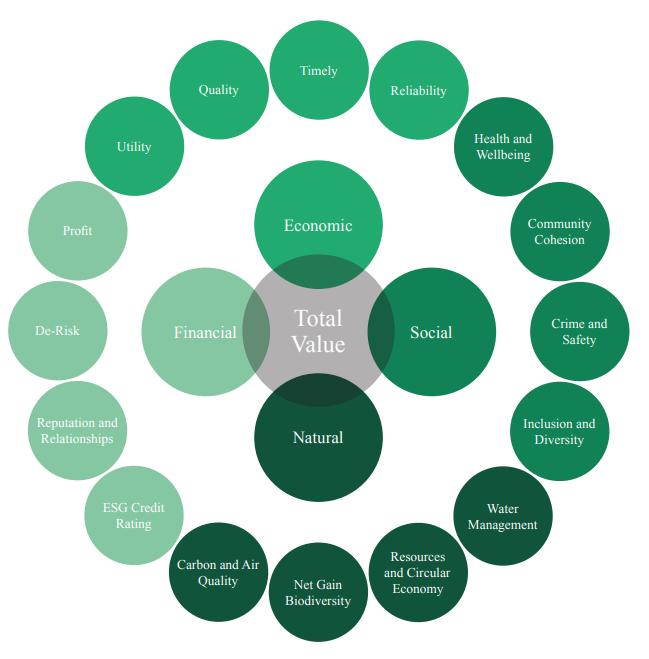
2 - An example framing of Total Value that can be used to amplify benefits from projects and programmes
Some key benefits – alongside risks - are outlined below.
Conference
67
Paper
Figure 2 - An example framing of Total Value that can be used to amplify benefits from projects and programmes
Green Port and Shipping Conference 2024 Green Port and Shipping Conference 2024 | | 28 March 2024 | Arup Green Shipping Corridors - Lessons from global initiatives Page 5
Figure
Green jobs
Shipping decarbonisation can create substantial numbers of green jobs, in particular associated with the development of renewable energy, green hydrogen and fuel production facilities. Trillions of dollars of investment are required in energy infrastructure to decarbonize shipping. Countries that capture a share of this market stand to boost both short and long-term green jobs and the associated economic benefits.
We explored this topic for the Global Maritime Forum, exploring fuel demand aligned with reducing total GHG emissions from international shipping by 30% by 2030, 80% by 2040 and 100% by 2050 (the IMO striving indicative checkpoints). We estimate that, for an e-fuel future, there is a requirement for up to: 2000 GW of renewable energy capacity, 1000 GW of green hydrogen production and green fuel production facilities capable of producing 600 million tonnes of fuel per annum.
This could require over 3 trillion dollars of investment, most of which in the 2030s, creating hundreds of thousands of jobs in 2020s, peaking in millions of jobs in 2030s, potentially reducing to high hundreds of thousands in 2040s. Over time these jobs change from being dominated by manufacturing, construction and installation jobs to more of a mix including operations and maintenance jobs. A mixed e-fuel and bio-fuel picture is likely, so these figures can be seen as the outer envelope opportunity linked to e-fuels.
Other benefits
The use of many zero and near-zero GHG fuels result in reduced pollutant emissions compared with traditional fossil fuels. To understand the benefits that results from these reduced emissions it is important to understand local sensitivity receptors (human health and ecosystems) and the potential pathways connecting the two. Receptors will be impacted by pollutant emissions from a range of sources, many of which could be related to transport. The net impact of reduced emissions from ships, either at berth or in transit, can be significant in some cases, but this is highly specific to the local context. It is important for early adopter initiatives to explore this area of value, illustrating the potential benefits either directly or in the subsequent stage of decarbonisation.
As organisations worldwide increase their focus on decarbonisation of their value chains (linked to their “scope 3” emissions), countries that lead on zero GHG shipping could also protect and enhance their competitive position.
Risks to be managed
There are of are also risks that need to be managed, in particular related to the sustainable development of fuel production and distribution infrastructure, which can be spatially demanding. A key benefit of e-fuel production is that it is not necessarily reliant upon a supply of bio feedstocks, that risk unsustainable land use change to produce e.g. energy crops (though some e-fuels can be produced using bio feedstocks). Nonetheless, sustainability should be at the forefront of decision making when identifying the land used to develop renewable energy, hydrogen production facilities and fuel production plants.
1.4 Lesson 3: Good governance is key to Green Shipping Corridors’ success
1.4.1 Background
The 2023 International Maritime Organization GHG Strategy sets clear ambition for the decarbonisation of shipping, requiring rapid uptake of zero emission fuels in the 2030s. Green Shipping Corridors play an essential role in incubating and maturing solutions to pave the way for this action, but their first mover and often voluntary nature presents challenges.
Conference Paper 68
The 2023 International Maritime Organization GHG Strategy sets clear ambition for the decarbonisation of shipping, requiring rapid uptake of zero emission fuels in the 2030s. Green Shipping Corridors play an essential role in incubating and maturing solutions to pave the way for this action, but their first mover and often voluntary nature presents challenges.
Various approaches to exploring the feasibility of Green Shipping Corridors have been defined, but there is a gap in understanding how these voluntary partnerships are run and managed collaboratively and effectively.
Various approaches to exploring the feasibility of Green Shipping Corridors have been defined, but there is a gap in understanding how these voluntary partnerships are run and managed collaboratively and effectively.
Cross-value chain collaboration is a crucial ingredient in a recipe for a successful Green Shipping Corridor partnership. Given the complex nature of these partnerships, factors like trust-building, developing shared commitments, and co-creating partnership approaches are the foundation of the collaborative nature of the process.
Cross-value chain collaboration is a crucial ingredient in a recipe for a successful Green Shipping Corridor partnership. Given the complex nature of these partnerships, factors like trust-building, developing shared commitments, and co-creating partnership approaches are the foundation of the collaborative nature of the process.
Arup, working in partnership with C40 Cities, have produced a guide to governance of Green Shipping Corridors, synthesizing inputs from stakeholders involved in Green Shipping Corridor and providing insights into best approaches and practices for the effective governance of these partnerships.
Arup, working in partnership with C40 Cities, have produced a guide to governance of Green Shipping Corridors, synthesizing inputs from stakeholders involved in Green Shipping Corridor and providing insights into best approaches and practices for the effective governance of these partnerships.
Governance is defined the approach required to bring together stakeholders to work effectively as they define common objectives, shape plans for action, and implement those plans. It considers Green Shipping Corridors through four lifecycle stages as described by the Global Maritime Forum (see Figure 1).
Governance is defined the approach required to bring together stakeholders to work effectively as they define common objectives, shape plans for action, and implement those plans. It considers Green Shipping Corridors through four lifecycle stages as described by the Global Maritime Forum (see Figure 1).
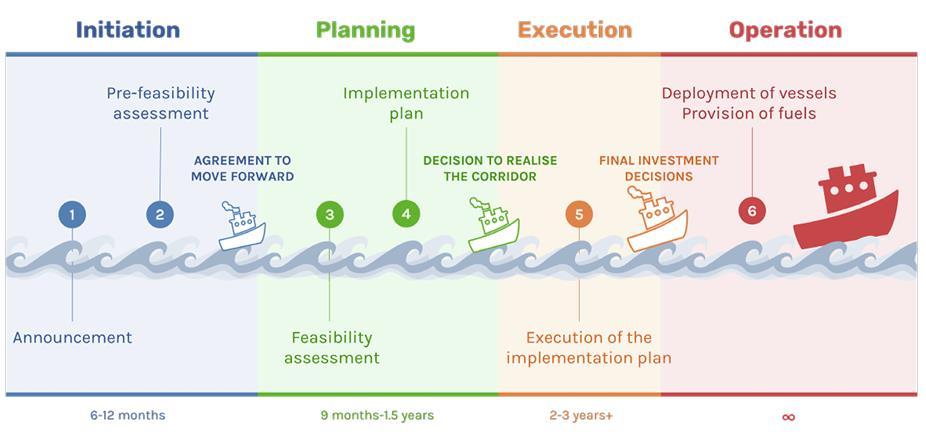
Insights for the governance of Green Shipping Corridor partnerships captured were based on Arup and C40’s direct experience in these initiatives as well as research and engagement with complex partnerships from other sectors.
Insights for the governance of Green Shipping Corridor partnerships captured were based on Arup and C40’s direct experience in these initiatives as well as research and engagement with complex partnerships from other sectors.
1.4.2 Challenges to overcome
2 GMF (2023) Annual Progress Report on Green Shipping Corridors. https://cms.globalmaritimeforum.org/wpcontent/uploads/2023/11/Global-Maritime-Forum_Annual-Progress-Report-on-Green-Shipping-Corridors_2023.pdf
Green Shipping Corridor partnerships involve collaboration that is cross-value-chain, international, and voluntary. The partnerships, variously made up of ports, shipping lines, cargo owners, fuel producers, cities, governments and other industry representatives across the zerocarbon shipping value chain, are inherently complex but could unlock significant progress if effectively managed. Practitioners are confronted with the following challenges:
2 GMF (2023) Annual Progress Report on Green Shipping Corridors. https://cms.globalmaritimeforum.org/ wp-content/uploads/2023/11/Global-Maritime-Forum_Annual-Progress-Report-on-Green-ShippingCorridors_2023.pdf
69
Conference Paper
Figure 1 - Stages of Green Shipping Corridors (source: Global Maritime Forum2)
Green Port and Shipping Conference 2024 Green Port and Shipping Conference 2024 | | 28 March 2024 | Arup Green Shipping Corridors - Lessons from global initiatives Page 7 1.4.1 Background
Figure 1 - Stages of Green Shipping Corridors (source: Global Maritime Forum2)
n Stakeholders familiar in engaging in a commercial and competitive space require new approaches to unlock effective collaboration.
n Most global shipping greenhouse gas emissions are linked to international voyages and global trade. To increase their impact, Green Shipping Corridors require a flexible approach that can account for different national contexts and ways of working.
n Partnerships are often formed voluntarily by high ambition actors. Maintaining their effectiveness while establishing operating procedures, structure, and goals can be a challenge.
n Competitive markets are linked to various points across zero-emission shipping value chain. Concerns around competition law and preserving sensitive information can be restricting.
n Green Shipping Corridors stakeholders have varying risk and reward profiles, which can be a challenge to balance as a partnership.
1.4.3 Governance insights
Effective governance has the potential to accelerate the impact of Green Shipping Corridors, catalysing decarbonisation of this globally critical sector and providing a model for international collaboration on other climate challenges.
Key insights for good governance are summarised below:
1. Develop a clear vision and strategy.
2. Tailor governance protocols per goals and lifecycle stages.
3. Select an appropriate partnership structure for effective decision making.
4. Protect data and confidentiality.
5. Evolve governance approaches across the GSC lifecycle.
6. Recognise roles for governments, facilitators, and community.
Conference Paper 70
SESSION 5
Maritime
Digitalisation
This session will feature case studies showcasing the digitalisation solutions and tools supporting ports and shipping in their journey to become more efficient and sustainable.
71
 HARIS ZOGRAFAKIS
Partner, Stephenson Harwood LLP
HARIS ZOGRAFAKIS
Partner, Stephenson Harwood LLP
BIOGRAPHY
Haris has practised law in London since 1994. He was recognised by Lloyd’s List as one of the top ten maritime lawyers of 2023 worldwide. He has also been inducted to the 2018 Legal 500 Hall of Fame as a result of his continued recognition by the directory.
He is chair of the International Working Group on maritime decarbonisation of Comite Maritime International; member of the editorial board of Shipping and Transport Law Journal; member of the Institute of maritime law of the University of Southampton and has served on the Council of the London Shipping Law Centre. He has published and lectured extensively worldwide, including at COP, for BIMCO, universities and the IMO.
As partner at Stephenson Harwood, a leading law firm, over the last 15 years, Haris has been head of the commodities practice, which has repeatedly been recognised as a First Tier team by The Legal 500. Dispute resolution represents a large part of his practice and he has acted in hundreds of arbitrations, High Court, Court of Appeal, Supreme Court and multi-jurisdictional cases ranging from modest demurrage claims to mine off-take and oiland gas disputes worth hundreds of millions.
While he has been described as a “solid and tenacious litigator” (Chambers UK 2007) and “a supreme tactician” (Chambers UK 2020), he is also involved in non-contentious work, structuring transactions, and advising on decarbonisation strategy clients from across the commodities supply chain, including NGOs. He served on the drafting committee of GMF’s Sea Charter and has been its legal advisor ever since its inception. He has been described by Lloyd’s List as the “architect of the Blue Viby Solution” and is co-ordinator of the Blue Visby Consortium.
Speaker
72

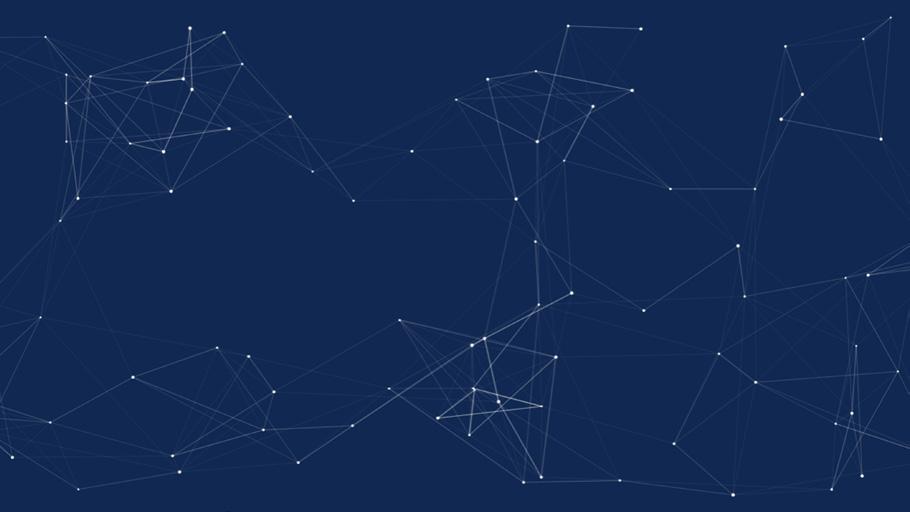
“The shipping industry should to two things: adopt electronic bills of lading and adopt the Blue Visby Solution”
Nikolaus H. Schues, BIMCO President interview with Lloyds List, September 2023


Conference Paper 73
The solution outlined in this presentation is protected by Intellectual Property applications, including in the US and the UK
Outline
© Blue Visby Solution™ Green Ports & Shipping Congress Singapore, May 2024
©
Blue Visby Solution™
© Blue Visby Solution™
The Blue Visby Consortium
• In collaboration with the Consortium of 32+ participants, over a period of several years,
• we have prepared studies,
• refined the concept,
• conducted real-time virtual pilots,
• and launched operational prototypes in Q2 2024.

© Blue Visby Solution™
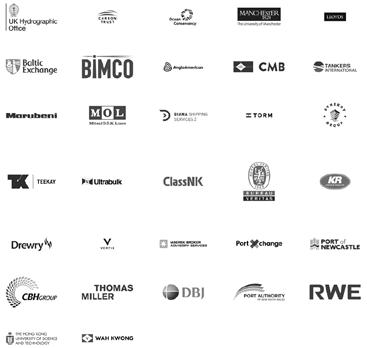

Eradicating
Sail Fast, Then Wait. The single largest systemic carbon inefficiency, responsible for 20% of shipping’s carbon footprint.

©
Optimisation. Individual vs. Systemic
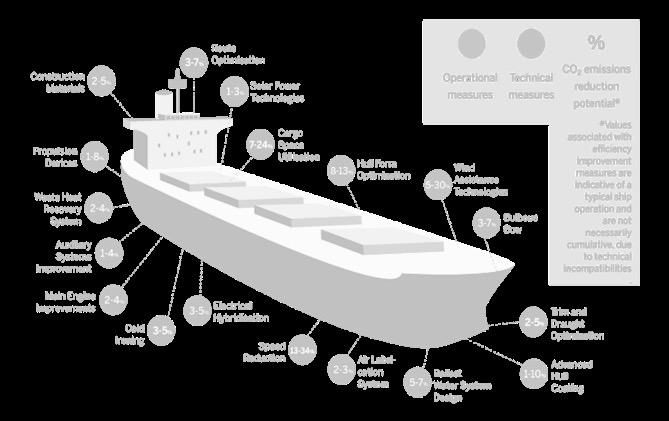

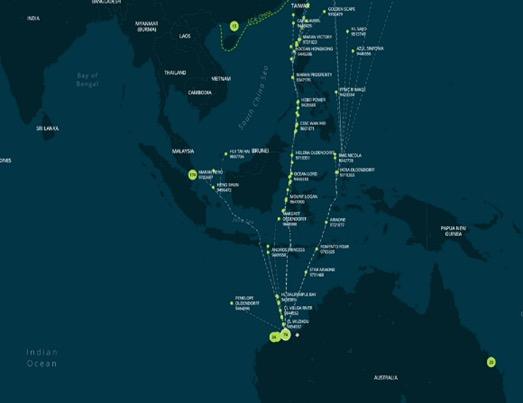

Conference Paper 74
Consortium co-ordinators:
Visby Solution™
© Blue
Blue Visby Solution™
A snapshot in January 2024
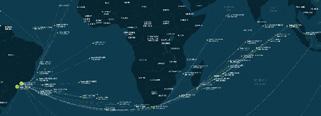
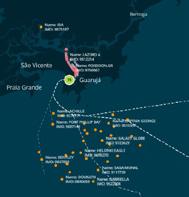
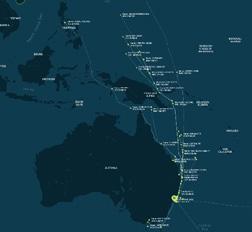
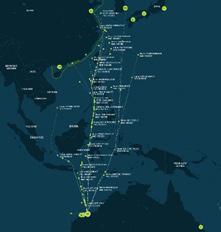

Blue Visby research
Proof of Concept 1 (POC1): Academic study based on 14,000 voyages in 2018. 2021
Proof of Concept 2 (POC2): Study conducted by NAPA based on 150,000 voyages of 14,000 ships in 2019 in real operating conditions.
Proof of Concept 3 (POC3): Series of studies of the fleet of Consortium members, compared against the benchmark of POC2.
Proof of Concept 5 (POC5): Series of studies of the fleet of Consortium members, compared against the benchmark of POC4.
Proof of Concept 4 (POC4): Enhanced study based on larger and more recent data set of 230,000 voyages of 21 000 ships in 2021-23.
Systemic



Conference Paper 75 © Blue Visby Solution™
Port Ships waiting at anchorage Ships sailing fast, to join the queue Santos 35 70 Port Hedland 33 102 Newcastle 41 44 © Blue Visby Solution™
optimisation Blue Visby Solution = 15%+ © Blue Visby Solution™
2022 2023 2024
Summary of Proofs of Concept 2 & 4 (2019 + 2022)
GHG savings per segment in real operational conditions


The BVS SFTW Index of ports

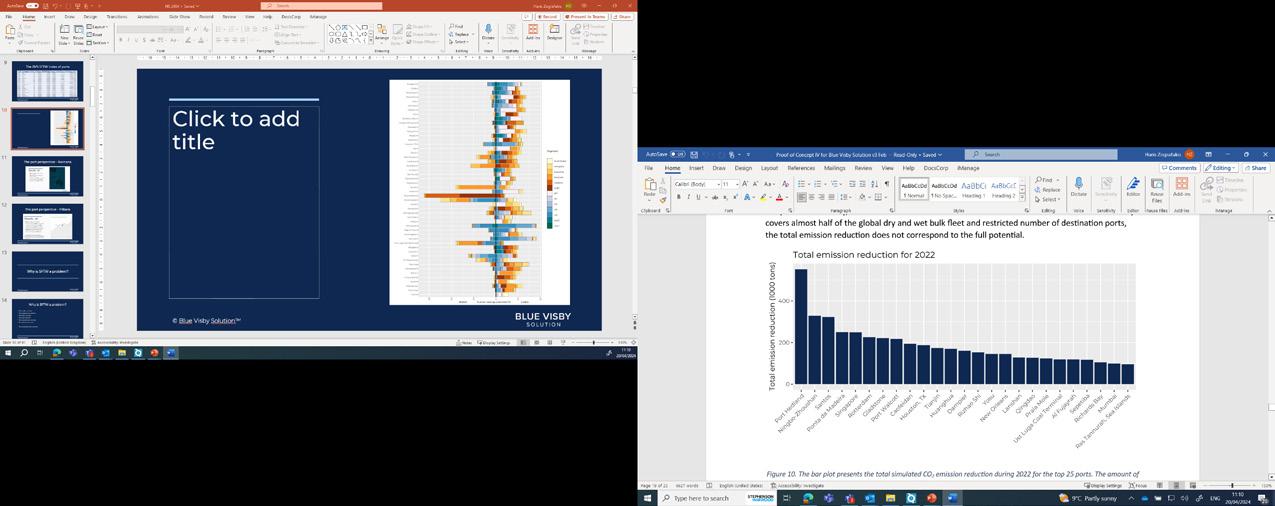


Conference Paper 76
© Blue Visby Solution™
Blue Visby Solution – The Benefits
For shipowners
• 15-20% CII improvement without capex – in addition to any other improvements through voyage planning and retrofits.
• EEOI improvement
• Share of Blue GA, improving P&L
For charterers and cargo shippers and receivers
• 15-20% improvement in Scope 3 emissions
• EEOI/SCC improvement
• Share of Blue GA, improving P&L
For the environment
• 15-20% GHG reductions
• 15% carbon budget reduction (according to a study of Manchester University (consortium member)
• 40% reduction in whale strike risk and 45% reduction in noise pollution, according to a study commissioned by, Consortium member, the Ocean Conservancy
For ports
• Safety improvement through reduction in anchorage congestion
• Local air pollution reduction
• Improvement in Scope 3 emissions


Why is SFTW a problem?
• The wider context
• The regulatory context
• The IMO context
• The fuel context
• The vessel user context
• The climate context
• The maritime law context

Conference Paper 77
© Blue Visby Solution™
©
Blue Visby Solution™
© Blue Visby Solution™
Why is SFTW a problem?
The wider context
Energy efficiency as the most potent tool.
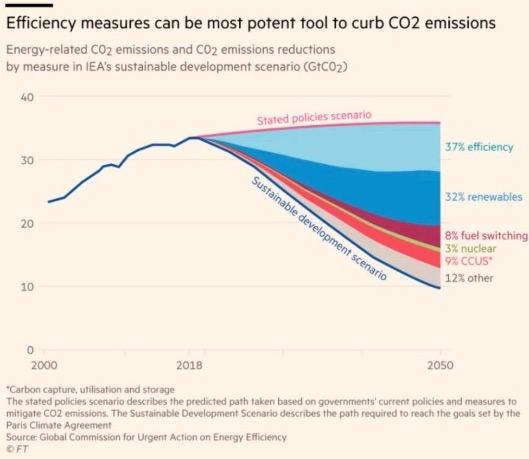

The regulatory context IMO CII & EU ETS (& SBTi)

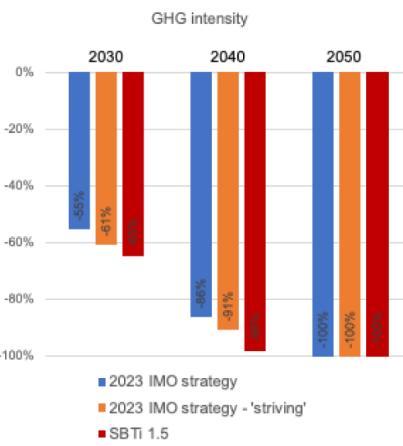

The IMO context “the whole value chain … without waiting…”



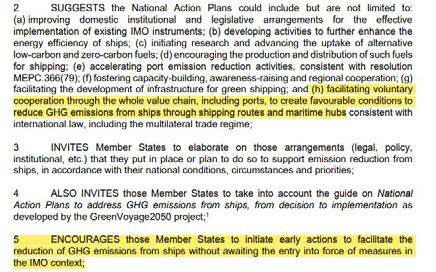

Conference Paper 78
© Blue Visby Solution™
© Blue Visby Solution™
© Blue Visby Solution™
The fuel context
Energy efficiency as the most potent tool … tomorrow too.




The vessel-user context: EEOI & Scope 3
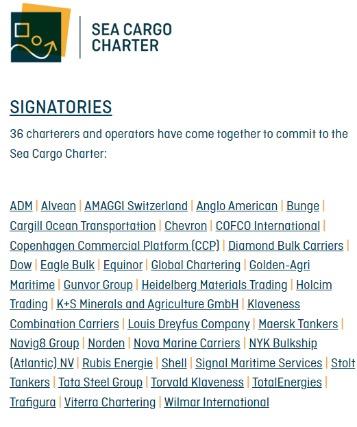

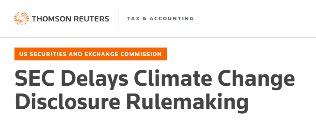



The climate context
The importance of committed emissions
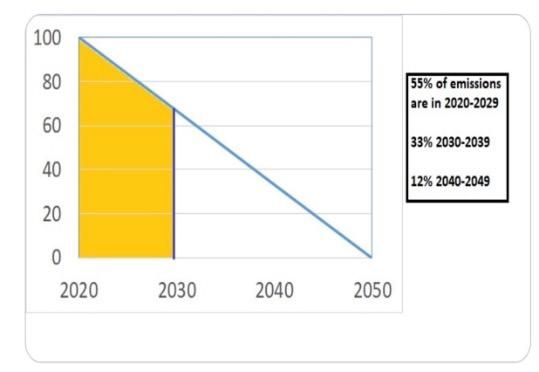


Conference Paper 79
© Blue Visby Solution™
Visby Solution™
© Blue
Source: Manchester University
© Blue Visby Solution™
©
Time Charters
• Commercial employment by charterers
• Due despatch
• Charterers’ fuel cost
The maritime law context
Bills of Lading
• Due despatch
• Deviation
Sale contracts
• Procuring an effective contract of carriage
• Delivery
• Demurrage
Voyage charters
• Obligations during the ballast voyage
• Due despatch
• Deviation
• Demurrage

The maritime law context –voyage charters & demurrage
“Laytime and demurrage comprise one aspect of English maritime law … [which] has for the most part been developed by judicial interpretation of clauses in commercial charterparties over the last one 150 years, although some of the basic principles were established somewhat earlier, at the time that Queen Victoria came to the throne.
The development of this branch of law has been closely allied to the historical and social changes that took place as sail gave way to steam… It is perhaps one of the few remaining areas of English law in which has been little statutory intervention”.

Eradicating SFTW is a necessity
• For shipowners and operators during the transition
• For charterers and users of ships during the transition
• For the climate during the transition
• For the zero-carbon-fuel ships of the future
• But it is only achievable within a contractual context that is compatible with the present contractual architecture of maritime trade


Conference Paper 80
Blue Visby Solution™
© Blue Visby Solution™
© Blue Visby Solution™
Schofield, Laytime and Demurrage, Chapter 1: General Principles.
Why is it so difficult to solve SFTW?
Ø The information gap
As between Charterers and Owners on individual ships; as amongst vessels steaming to the same destination; and as amongst them and the port and terminal(s).
© Blue Visby Solution™
Gaps & fragmentation
Ø The jurisdiction gap
SFTW is a commercial practice.
IMO, flag states, coastal states have no jurisdiction in the high seas, beyond matters of safety and environmental protection.
Ø Parallel fragmentation
A multitude of ports, and terminals in every port in the world, each with its own systems, characteristics and problems, as well as shore-side infrastructure having on impact on berthing.
Ø Vertical fragmentation
A multitude of interests in each voyage: shipowners, charterers, cargo interests (often in chains of contracts): their competition results in the problem of “split incentives”.

Ø Horizontal fragmentation
A multitude of ships sailing to the same destination at the same time, from different starting points, facing different weather conditions; each ship “carries” its own microcosm of fragmented interests.

How does the Blue Visby Solution work?

Conference Paper 81
© Blue Visby Solution™
© Blue Visby Solution™
Outline of the Blue Visby Solution
Systemic approach
• Not ship-centric, not portcentric, but approaches SFTW as an optimization problem for the group of ships sailing to the same destination.
• Applying Theory of Constraint principles to create an algorithm that optimizes the system - not individual ships, or individual ports.
• Treating berthing as a “last mile” problem, to be solved separately by individual ports, the Blue Visby Solution optimizes the “ocean passage” (pilot station to pilot station).
© Blue Visby Solution™
A sharing mechanism
• Resolving the problem of “split incentives” through the implementation of a sharing mechanism: Blue GA
• Blue GA is modelled on the age-old maritime practice of general average, which deals with the problem of split incentives in the context of maritime emergencies.
• Blue GA shares the benefits and costs of the operation of the Blue Visby Solution equitably and with transparency
A contractual architecture
• The operational system and the sharing mechanism are underpinned by a new contractual architecture: a set of “rider terms” that the parties incorporate into the charterparties and sale contracts
• In addition, the creation of an association, modelled on the mutuality of P&I Clubs, which administers and system and resolves any disputes that may arise out of its operation.

How does the Blue Visby Solution work?
Contracts
& Governance
• Bilateral
• Multilateral
Software
• Systemic
• Dynamic
• Optimisation
• Of the ocean passage
Operations
• Blue Queue Number
• Requested Time of Arrival
Blue GA
• Fuel
• Ocean Passage prolongation
• Market rates
• Across contracts


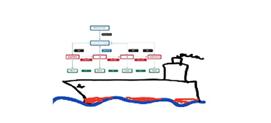
Conference Paper
© Blue
© Blue Visby Solution™
Step Two: Software & Algorithms
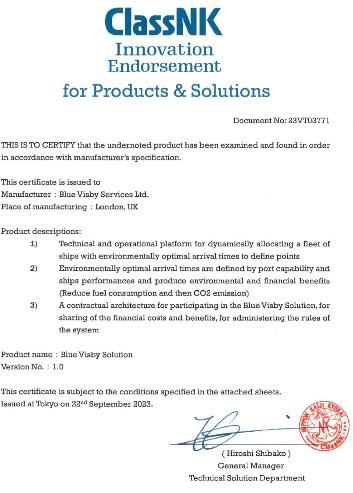
©
• Theory of Constraint
• A system based on (but different to) voyage optimisation software
• Systemic focus, not on voyage planning of individual ships
• Optimising the Ocean Passage, not berthing
• Monitoring the service ratio of ports and terminals

Step Three: Operations
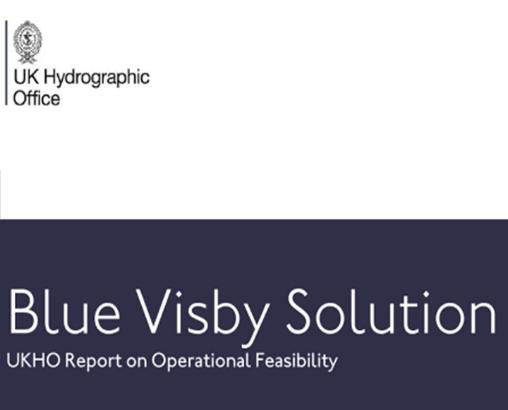

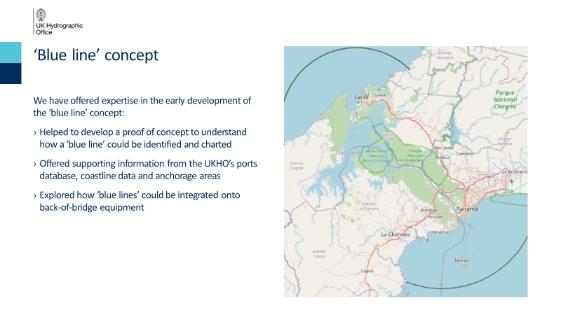
• The Blue Line
• Queue position allocation
Step Four: System Integration

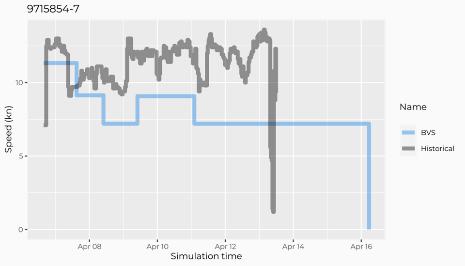


Conference Paper 83
Blue Visby Solution™
©
Blue Visby Solution™
Contracts – Software – Operations © Blue Visby Solution™
Step Five: Dealing with the financial consequences
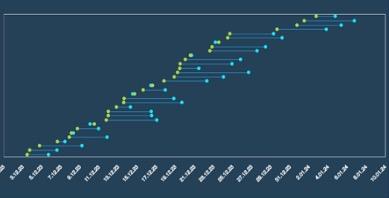
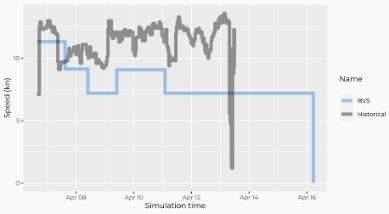
The delayed arrival at the anchorage has financial consequences, which differ depending on the type of contract.
The carbon inefficiency of SFTW is a profit opportunity under some contracts.
The problem of split incentives is best addressed through a transparent system for sharing costs and benefits.



Conference Paper 84
© Blue Visby Solution™
© Blue Visby Solution™
The solution outlined in this presentation is protected by Intellectual Property applications, including in the US and the UK
Green Ports & Shipping Congress Singapore, May 2024
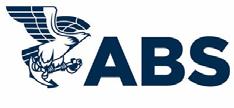
 ILIAS SOULTANIAS
Managing Principal Engineer, Sustainability, ABS
ILIAS SOULTANIAS
Managing Principal Engineer, Sustainability, ABS
BIOGRAPHY
Naval Architect & Marine Engineer by education, ventured into ship management, repairs and maintenance leading to sustainable shipping. With Project Management background and experience in ship management, marine technical services, procurement, and business development, Ilias has been actively pursuing the challenges of the maritime and shipping industry for the development into the future. Working on energy, emissions and innovative technologies related to alternative fuels that includes technical, environmental regulatory as well as economic aspects.
As part of the Global Sustainability Center team in ABS (American Bureau of Shipping), he is focused on the vessels’ environmental compliance and performance in view of the upcoming IMO GHG (Greenhouse Gas) reduction measures and decarbonization drive. With the view towards a low carbon future in shipping, he is also supporting joint development projects on alternative and low carbon fuels and the energy transition, working closely with industry partners. At the same time, with the vibrant team of Singapore Sustainability, they are fostering ESG excellence in the sector and support the maritime and offshore companies’ endeavors into this new area.
Speaker
85
Port Optimization for GHG Emissions Reductions
Introduction
Ports and shipping channels are critical components of many nations’ transport infrastructure and make a significant contribution to the economy. With volatile and disrupted global trade comes further pressure on ports to be adaptive and resilient. With greenhouse gas emissions (GHG) from maritime transport estimated to exceed one billion tonnes per annum [1], sustainability is an ever present, and increasingly important, consideration for ports. This is occurring against a backdrop of a changing climate that is presenting more frequent and severe weather events.
The United Nations Conference on Trade and Development 2023 Review of Maritime Transport states that “beyond cleaner fuels, the industry needs to move faster towards digital solutions… to improve efficiency as well as sustainability.”
Digitalisation has driven access to more data, in real-time, and with greater precision. With the right tools, this data can lead to deeper insights into port and shipping operations, and be leveraged to identify opportunities to enhance safety and improve efficiency. Whilst alternative fuels will be critical to achieving net zero targets, there are digital technologies immediately available that have a proven track record of facilitating reduction in shipping related emissions through enhancing the efficiency of each voyage.
Background
In 2015, 193 countries adopted the United Nation’s 2030 Agenda for Sustainable Development and its 17 Sustainable Development Goals (SDGs).
The IMO recognises that most of the elements of the 2030 Agenda will only be realised with a sustainable transport sector supporting world trade and facilitating global economy, and is actively working towards the SDGs. Ports, as critical nodes in the global supply chain, must respond to worldwide, regional and local challenges such as climate change and digitalisation. With the support of strategic partners including the American Association of Port Authorities (AAPA), the European Sea Ports Organisation (ESPO), and the World Association for Waterborne Transport Infrastructure (PIANC), in 2017 the International Association of Ports and Harbors established the World Ports Sustainability Program. One of the five WPSP themes is ‘Resilient Infrastructure’ and encapsulates SDGs #9 Industry, Innovation and Infrastructure, #13 Climate Action, and #14 Life Below Water.
In relation to SDG #9, Industry, Innovation and Infrastructure, the IMO states [2] that technological advances in the port sector are key to building resilient infrastructure and central to the effective functioning of the whole transportation sector. A more efficient shipping, working in partnership with the port sector, will be a major driver towards global stability and sustainable development for the good of all people. Furthermore, investment, growth and improvement in the shipping and ports sectors are clear indications of a country or region that is enjoying success in the present and planning for future success.
On #13 Climate Action, the IMO’s position [2] is that responding to climate change is one of the greatest challenges of our era, and requires appropriate, ambitious and realistic solutions to minimise shipping’s contribution to air pollution and its impact on climate change.
Conference Paper
86
Although one of the most sustainable modes of transport, shipping is estimated to emit one billion tonnes of greenhouse gas (GHG) emissions annually, representing ~3% of the total global emissions [3]
The Paris Agreement requires emissions to be reduced by 50% by 2050, and the IMO’s 2018 Initial Strategy for Reduction of GHG Emissions from Ships [4] set an objective to achieve a 40% reduction of CO2 emissions per transport work by 2030 (compared to 2008 values as an average across international shipping). However, recent data suggests shipping related GHG emissions continue to climb, with the International Energy Agency suggesting a 5% increase in 2022 [5] .
In support of the 40% reduction of CO2 emissions target, amendments to the International Convention for the Prevention of Pollution from Ships (MARPOL) Annex VI were adopted by the IMO’s Environmental Protection Committee (MPEC). These include the requirements for Energy Efficiency Existing Ships Index (EEXI) and Carbon Intensity Indicator (CII) certification from January 2023, with initial ratings given in 2024.
IMO Initiatives
In 2013, the Energy Efficiency Design Index (EEDI) and the Ship Energy Efficiency Management Plan (SEEMP) came into force. The EEDI sets specific efficiency standards that new ships must meet, based on their size and type, in order to be certified for operation. These standards are periodically updated to reflect advancements in technology and improvements in energy efficiency.
Ships are required to meet the established EEDI requirements in order to obtain a certificate of compliance, which allows them to operate legally. Non-compliance can result in penalties or restrictions on a ship’s operations. The EEDI was intended to drive the uptake of more energyefficient technologies and practices in ship design and operation for new ships.
The EEDI, which relates to the design of a vessel, is supported by the SEEMP, which provides a mechanism to improve the energy efficiency of a ship whilst in operation. The SEEMP urges the ship owner and operator at each stage of the plan to consider new technologies and practices when seeking to optimise the operational performance of a ship. The SEEMP also provides an approach for shipping companies to manage ship and fleet efficiency performance over time using recognized monitoring tools.
The Energy Efficiency Existing Ships Index (EEXI) is a framework that became mandatory from January 2023. Unlike the EEDI that applies to new builds, the EEXI applies to all existing ships of 400 GT and above. It requires vessels to calculate their attained EEXI which reflects the technical or design efficiency of the ship. Ships then have to reach a Required EEXI.
The EEXI framework is technology neutral, and the shipowner or charterer can choose the most appropriate means to achieve the goals set by IMO regulations. Examples of existing technologies available to comply with the Required EEXI include engine/shaft power limitation, waste heat recovery, wind assisted propulsion, etc.
Along with the EEXI, the Carbon Intensity Indicator (CII) was introduced in January 2023 and is mandatory for ships of 5,000 gross tonnage and above. The CII reflects the operational energy efficiency of ships, expressed as the grams of CO2 emitted per tonne-nautical mile of operation. There are a few key terms in understanding the CII, as detailed below.
The Attained CII is the actual CII of the vessel for the year in question.
Attained CII = CO2 emission in grams
DWT x Distance Travelled in Nautical Miles
Conference Paper 87
The Attained CII is the actual CII of the vessel for the year in question.
Attained CII = !"# %&'((')* '* +,-&( ./0 1 .'(2-*3% 0,-4%55%6 '* 7-82'3-5 9'5%(
The Reference CII is the CII value from 2019.
The Reference CII is the CII value from 2019.
CIIRef = aCapacity-c
where the values Capacity, a, and c are defined as per the table below:
CIIRef = aCapacity-c
where the values Capacity, a, and c are defined as per the table below:
Table 1: Parameter values for determining Reference CII
Table 1: Parameter values for determining Reference CII
The required CII is the new CII that a vessel must meet for the relevant year, considering the reduction factor required for that year.
The required CII is the new CII that a vessel must meet for the relevant year, considering the reduction factor required for that year.
CIIReq = CIIRef x
CIIReq = CIIRef x !"" % !"" where Z is the reduction factor for the year as per Table 2.
where Z is the reduction factor for the year as per Table 2.
Table 2: CII Reduction Factors
Table 2: CII Reduction Factors
The CII Rating is a measure of how a vessel’s Attained CII compares with the Required CII.
CII Rating = :22-'*%6 !;; <%=8',%6 !;;
Based on the CII Rating achieved, a vessel is assigned to a category from A to E
Conference
88
Paper
operation.
There are a few key terms in understanding the CII, as detailed below.
Ship Type Capacity a c Bulk Carrier DWT > 279,000 279,000 4745 0.622 Bulk Carrier DWT < 279,000 DWT 4745 0.622 Gas Carrier DWT > 65,000 DWT 144050000000 2.071 Gas Carrier DWT < 65,000 DWT 8104 0.639 Tanker DWT 5247 0.61 Container DWT 1984 4089 General Cargo DWT > 20,000 DWT 31948 0.792 General Cargo DWT < 20,000 DWT 588 0.3885 Refrigerated Cargo D DWT 4600 0.557 Combination Carrier DWT 40853 0.812 LNG Carrier DWT >100,000 DWT 9.827 0 LNG Carrier 100,000>DWT>65,000 DWT 144790000000000 2.673 LNG Carrier DWT < 65,000 65,000 144790000000000 2.673
100 - Z 100
Year Reduction Factor Z 2023 5% 2024 7% 2025 9% 2026 11%
Ship Type d1 d2 d3 d4 Bulk Carrier 0.86 0.94 1.06 1.18 Gas Carrier DWT > 65,000 0.81 0.91 1.12 1.44 Gas Carrier DWT < 65,000 0.85 0.95 1.06 1.25
The CII Rating is a measure of how a vessel’s Attained CII compares with the Required CII.
The CII Rating is a measure of how a vessel’s Attained CII compares with the Required CII.
CII Rating = :22-'*%6 !;; <%=8',%6 !;;
CII Rating =
Based on the CII Rating achieved, a vessel is assigned to a category from A to E
3: CII Ratings
Based on the CII Rating achieved, a vessel is assigned to a category from A to E Table 3: CII Ratings

Based on the CII Rating, a vessel is assigned a Grade from A to E as per Figure 1. A ship rated D for three consecutive years, or E for one year, has to submit a corrective action plan to show how the required Grade of C or above will be achieved. Administrations, port authorities and other stakeholders as appropriate, are encouraged to provide incentives to ships rated as Attained CII Required CII
Based on the CII Rating, a vessel is assigned a Grade from A to E as per Figure 1 A ship rated D for three consecutive years, or E for one year, has to submit a corrective action plan to show how the required Grade of C or above will be achieved. Administrations, port authorities and other stakeholders as appropriate, are encouraged to provide incentives to
Maintaining the existing Grade will become increasingly difficult with each year as the Reduction Factor (Z) becomes more stringent, demanding vessels find new ways to improve their Attained CII.
come increasingly difficult with each year as the Reduction Factor (Z) becomes more stringent, demanding vessels find new ways to improve their Attained CII.
A key criticism of the adopted CII methodology is that it ignores the actual cargo carried during the year, but instead focuses on the potential carrying capacity of the vessel [6]. The IMO had in fact considered a Demand-based CII which used the actual tonne-miles value of a ship, but opted to proceed with the Supply-based CII which uses the DWT value and therefore ignores the actual utilisation of a vessel. It is therefore possible to reduce the CII by sailing extraneous ballast voyages to increase fuel efficient distances.
A key criticism of the adopted CII methodology is that it ignores the actual cargo carried during the year, but instead focuses on the potential carrying capacity of the vessel [6] The IMO had in fact considered a Demand-based CII which used the actual tonne-miles value of a ship, but opted to proceed with the Supply-based CII which uses the DWT value and therefore ignores the actual utilisation of a vessel. It is therefore possible to reduce the CII by sailing extraneous ballast voyages to increase fuel efficient distances.
Conference Paper 89
2026 11% Table
Reduction Factors
2: CII
Ship Type d1 d2 d3 d4 Bulk Carrier 0.86 0.94 1.06 1.18 Gas Carrier DWT > 65,000 0.81 0.91 1.12 1.44 Gas Carrier DWT < 65,000 0.85 0.95 1.06 1.25 Tanker 0.82 0.93 1.08 1.28 Container 0.83 0.94 1.07 1.19 General Cargo 0.83 0.94 1.07 1.19 Refrigerated Cargo 0.78 0.91 1.07 1.2 Combination Carrier 0.87 0.96 1.06 1.14 LNG Carrier DWT > 100,000 0.89 0.98 1.06 1.13 LNG Carrier DWT < 100,000 0.78 0.92 1.1 1.37
Table
Opportunities A study published in 2023 by the World Bank [7] found that around 60% of a ship’s time in port is attributed to cargo operations, with 30% accounting for arrival time and 10% idling time.
Opportunities
A study published in 2023 by the World Bank [7] found that around 60% of a ship’s time in port is attributed to cargo operations, with 30% accounting for arrival time and 10% idling time. This means there is a significant amount of wasted time, leading to excess fuel burn and emissions. Port turnaround times are the responsibility of both the vessel and the port so both need to work in tandem to achieve the desired results.
A ship that spends less time in port will burn less fuel, reduce its emissions, and achieve more optimal arrivals. Improving the efficiency with a coordinated approach to shipping is estimated to reduce emissions of the current fleet by around 20% [8]
One existing, well proven technology that is facilitating real emissions reductions is the Dynamic Under Keel Clearance System (DUKC®). The efficiency shipping is related in part to the sailing drafts and windows that are available at each port that a vessel visits. Whilst some ports are unconstrained, many ports apply antiquated methods to determine when a vessel can transit, and the maximum draft achievable for that vessel. DUKC® is a could-based digital solution for draft and tide optimization employed to simplify transit planning and scheduling whilst managing navigational risk. Delivered as SaaS, DUKC® is underpinned by detailed modelling of port operations, numerical analysis of ship motions, hydro-dynamic models, channel survey data, and the AI assisted assimilation of real-time and forecast environmental conditions. Connecting advanced calculation engines with the port’s available IoT devices and digital data sources, DUKC® allows the sailing draft and window of every vessel to be safely maximised. This increases channel accessibility, berth utilization, and port efficiency, whilst reducing deadfreight and vessel wait times.
Case Studies
The first case study examines an Australian bulk port. The port handles approximately 30m tonnes per annum and has channel approach of ~1.5km.
With the aims enhancing navigational safety, efficiency, and sustainability, the Port implemented DUKC®. This advanced transit planning and vessel scheduling technology allowed vessels to sail deeper and the available sailing windows increased. This resulted in a CII improvement for every vessel through increased cargo, whilst reducing the wait times for vessels at anchor.
The additional draft resulting from the application of digital transit planning was 0.73m. This equates to an available 9,000 tonnes of additional cargo for every vessel. Enhancing the utilisation of each vessel reduces the CO 2 emissions on a per tonne-km basis. For this case study, the estimate CO2 reductions are 140,000 tonnes, equivalent to [9]:
n Emissions from 52,058,709 litres of diesel;
n Emissions from 70,260,229 kilograms of coal burned;
n Emissions from 27,240 homes’ electricity use for one year;
n Carbon sequestered by 2,314,912 tree seedlings grown for 10 years.
In terms of enhancing channel capacity and efficiency, the digital innovation increased the available sailing windows by an average of 28 hours.
These achievements were realised with minimal port infrastructure. The data requirements from the port were limited to an AIS feed, a single tide gauge, and wave buoy, and bathymetric survey data. This is hardware and data that many ports already have access to, or that can be implemented cost effectively.
Conference Paper 90
The value delivered to the port and its customers was significant, and the goals of enhanced safety, efficiency and sustainability are being realised.
These results are consistent with the analysis undertaken for the iron ore export ports in the Pilbara region of Western Australia, which indicate that DUKC® reduces the CO2 emissions by 1.2m tonnes per annum for the given freight task. They are also consistent with results from a case study from the UAE which resulted in DUKC® delivering a reduction in CO2 emissions of ~5% per transit.
These results are consistent with the analysis undertaken for the iron ore export ports in the Pilbara region of Western Australia, which indicate that DUKC® reduces the CO 2 emissions by 1.2m tonnes per annum for the given freight task. They are also consistent with results from a case study from the UAE which resulted in DUKC® delivering a reduction in CO2 emissions of ~5% per transit.
The second case study is Port Botany. Port Botany is one of Australia’s largest container ports with an annual throughput of approximately 2.5m TEU on 1,600 ships. It is also Australia’s largest common user bulk liquids facility.
The second case study is Port Botany. Port Botany is one of Australia’s largest container ports with an annual throughput of approximately 2.5m TEU on 1,600 ships. It is also Australia’s largest common user bulk liquids facility.
The approach to Botany (refer Figure 2) commences in very deep water, with vessels crossing the Bombora Shoal with a depth of 15.4m. The approach channel is exposed to swells from the south east which can be significant; 2m to 3m is not uncommon although swells up to 8m have been experienced.
The approach to Botany (refer Figure 2) commences in very deep water, with vessels crossing the Bombora Shoal with a depth of 15.4m. The approach channel is exposed to swells from the south east which can be significant; 2m to 3m is not uncommon although swells up to 8m have been experienced.
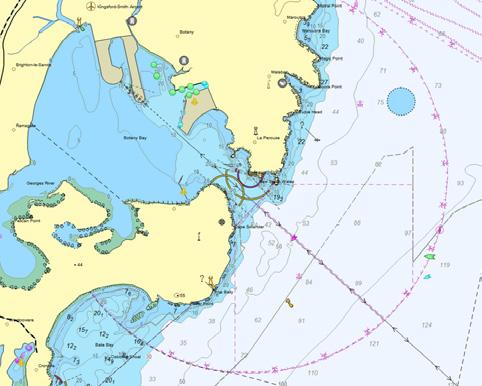
Figure 2 Approach to Port Botany. Channel transitions from very deep water. Transits can be exposed to very large swells.
Figure 2 Approach to Port Botany. Channel transitions from very deep water. Transits can be exposed to very large swells.
Botany Bay tidal range is approximately 2.1m, with a range of 1.3m from mean high water spring to mean low water spring, and 0.8m for mean high water neaps to mean low water neaps.
Botany Bay tidal range is approximately 2.1m, with a range of 1.3m from mean high water spring to mean low water spring, and 0.8m for mean high water neaps to mean low water neaps.
Within days of operationalising DUKC®, a new record was set for the deepest ever tanker vessel to call at the Kurnell berth. Weeks later, the heaviest container vessel ever to call Port Botany arrived safely using DUKC®. At a draft of 14.8m, the MSC Asya is understood to be the deepest ever container vessel into an Australian port. Later that week, the STI Condotti would become the deepest ever tanker to arrive at Botany’s Bulk Liquids Berth. In February 2022, the MSC Tokyo arrived at a draft of 15.1m, again breaking the record for the deepest container vessel to call any Australian port.
Within days of operationalising DUKC®, a new record was set for the deepest ever tanker vessel to call at the Kurnell berth. Weeks later, the heaviest container vessel ever to call Port Botany arrived safely using DUKC® At a draft of 14.8m, the MSC Asya is understood to be the deepest ever container vessel into an Australian port. Later that week, the STI Condotti would become the deepest ever tanker to arrive at Botany’s Bulk Liquids Berth. In February 2022, the MSC Tokyo arrived at a draft of 15.1m, again breaking the record for the deepest container vessel to call any Australian port.
OMC has partnered with a shipper that regularly calls Port Botany with imports. OMC provides long range planning advice using DUKC® to enable the shipping company to optimize their inbound sailing drafts with certainty that sailing windows will be available during the LayCan. Taking the example of an LR2 tanker, serving a single route from the Middle East to Botany, the Reference CII is 4.297, whilst the 2024 Required CII is 3.996. This would require moving the same volume of cargo whilst reducing the CO2 emissions by 7%, potentially achieved through operational options such as slow steaming or weather routing, or physical changes to the vessel. Alternatively, using DUKC® the vessel is able to confidently load more cargo to achieve an Attained CII of 3.808 for a CII Rating of 0.951.
Conference Paper 91
Conclusion
The ports and shipping industry faces a range of operational challenges including congestion and delays, larger vessels, and more severe weather events. In parallel, there is the requirement to find ways to reduce CO2 emissions. Whilst alternative fuels remain a critical element of the long-term solution, there are technologies immediately available that are providing Harbour Masters, Pilots, Terminal Operators, and Shippers with the tools to maximise efficiency whilst ensuring navigational safety.
DUKC® has a long and proven history of increasing sailing drafts and windows across all types of ports and vessels. This paper highlights how the benefits delivered through DUKC® translate to CO 2 emissions reductions, improved efficiency, and CII Rating improvements.
It is expected that any tidally restricted or draft constrained port could realise CO2 emissions reductions, whilst forward thinking shippers can achieve CII Rating improvements, through the application of DUKC® .
References
[1] International Maritime Organization (IMO). 2020. Fourth IMO GHG Study 2020. International Maritime Organization (IMO).
[2] IMO (2021). IMO and the Sustainable Development Goals. Retrieved from https://www.imo.org/en/ MediaCentre/HotTopics/Pages/SustainableDevelopmentGoals.aspx
[3] United Nations Conference on Trade and Development (UNCTAD). 2023. Review of Maritime Transport 2023. United Nations Conference on Trade and Development (UNCTAD).
[4] International Maritime Organization (2018). Initial Strategy on Reduction of GHG Emissions from Ships.
[5] https://www.iea.org/energy-system/transport/international-shipping
[6] Wang, et a. (2021). Paradox of international maritime organization’s carbon intensity indicator. Communications in Transportation Research Volume 1 2021.
[7] World Bank. 2023. The Container Port Performance Index 2022: A Comparable Assessment of Performance Based on Vessel Time in Port.
[8] CSIRO (2023) Co-design process: Australia–Singapore initiative on low-emissions technologies for maritime and port operations. CSIRO, Canberra.
[9] https://www.epa.gov/energy/greenhouse-gas-equivalencies-calculator
Conference Paper 92
SESSION
Onshore Power Supply
Onshore Power Supply and what is needed for ports and shippers to be able to utilise this evolving technology.
6.1 93

ANTONIS MICHAIL
Technical Director, International Association of Ports and Harbors / World Ports Sustainability Program
BIOGRAPHY
Dr Antonis Michail is an engineer in background with specialisation on the environmental management of ports and freight transport systems at Master and PhD level, and with more than 15 years of professional experience in these fields. Since February 2018, Antonis joined the World Ports Sustainability Program (WPSP) of the International Association of Ports and Harbours (IAPH) as the person responsible for the technical developments and projects under the umbrella of the program. Before that, Antonis was holding the position of Senior Policy Advisor on sustainability and safety matters at the European Sea Ports Organisation (ESPO) from 2009 to 2017. Since back in 2003, Antonis was involved in the EcoPorts network of ports from various posts, including managing projects and coordinating the network’s activities and development until 2017.
Moderator
94

KAPIL BERRY
Business Development Director - Maritime, DNV
BIOGRAPHY
Kapil Berry holds the position of Business Development Director, Maritime in DNV, overseeing South East Asia and the Indian Subcontinent. He brings a wealth of industry experience to this role, with a background in sailing, ship management, project management, and new buildings. Formerly with the BW Group, Kapil spent two years in Dubai’s offshore sector before joining DNV in 2023. In his current role, Kapil leverages his expertise to manage key accounts, offering valuable support to clients in growth strategies, decarbonization, training, and other critical areas. Kapil is a respected speaker at many industry conferences across Asia and holds a degree in Marine Engineering from DMET-MERI in India.
Speaker
95
A class notation for safe use of shore power
A class notation for safe use of shore power
DNV’s updated Shore Power class notation for tankers provides crucial guidance for shipowners who wish to take advantage of shore power while lying at berth. The rules were developed in close cooperation with industry organizations to ensure practicability
DNV’s updated Shore Power class notation for tankers provides crucial guidance for shipowners who wish to take advantage of shore power while lying at berth. The rules were developed in close cooperation with industry organizations to ensure practicability.
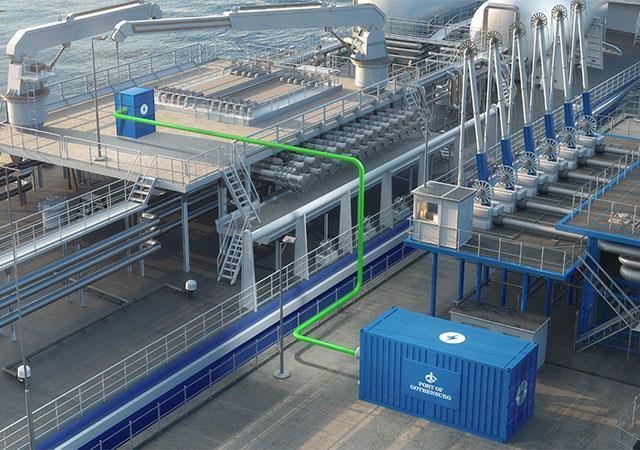
Ports and coastal states around the world have passed or are preparing legislation to curb air pollution from ships lying at berth, and to help cut carbon emissions in general. Using shore power is a great way for ships to keep their on-board systems running without emitting smoke and CO2. As the first rule set of its kind, DNV’s updated Shore Power class notation, effective as of 1 July 2023, addresses the specific safety needs of tankers.
Ports and coastal states around the world have passed or are preparing legislation to curb air pollution from ships lying at berth, and to help cut carbon emissions in general. Using shore power is a great way for ships to keep their on-board systems running without emitting smoke and CO2. As the first rule set of its kind, DNV’s updated Shore Power class notation, effective as of 1 July 2023, addresses the specific safety needs of tankers.
International regulations and standards push shore power
International regulations and standards push shore power
Recent legislative advancements have prompted tanker owners to inquire about rules and standards for shore power for their ship type. The latest version of the California Air Resources Board’s (CARB) Ocean-Going Vessels At-Berth Regulation, published on 1 July 2023, requires tankers to have emission control strategies in place at specific Californian ports from January 2025. The EU has adopted similar legislation for container and passenger vessels, the ship types with the highest nonpropulsion power demand, as part of the Fit for 55 package, including requirements for onshore power supply.
Recent legislative advancements have prompted tanker owners to inquire about rules and standards for shore power for their ship type. The latest version of the California Air Resources Board’s (CARB) Ocean-Going Vessels At-Berth Regulation, published on 1 July 2023, requires tankers to have emission control strategies in place at specific Californian ports from January 2025. The EU has adopted similar legislation for container and passenger vessels, the ship types with the highest non-propulsion power demand, as part of the Fit for 55 package, including requirements for onshore power supply.
Hazardous cargo calls for special shore power rules
While the EU regulations do not apply to tankers, the unrivalled simplicity of plugging in a cable makes “cold ironing” an attractive option to meet emission control requirements during port stays of
Conference Paper
96
Hazardous cargo calls for special shore power rules
While the EU regulations do not apply to tankers, the unrivalled simplicity of plugging in a cable makes “cold ironing” an attractive option to meet emission control requirements during port stays of nearly any ship type. What has made the development of appropriate rules for tankers difficult is the type of cargo they carry. “At DNV, our primary focus is on safety. With tankers that often carry potentially flammable cargoes, the electrical risks can be greater than for dry bulk carriers and containerships. This requires more attention to system safety both on board and on the quayside,” explains Catrine Vestereng, Senior Vice President and Global Segment Director Tankers at DNV Maritime.
IEC standards provide a global basis
The crucial question is how and where to arrange the connecting points and cables safely, says Thomas Hartmann, Senior Principal Engineer – Electrical Systems Maritime at DNV, who is also a member of IEC Joint Working Group 28, Standardization of High-Voltage Shore Connection. “Class rules are often based on the relevant international standards,” he explains. “The relevant IEC standard calls for installation and testing of shore power equipment on board to be witnessed by an ‘appropriate authority’, which is typically the classification society that reviews the engineering designs for newbuilding and retrofitting projects. Ensuring a safe working environment for people on board tankers is a complex task.”
Complexities of shore power connection safety
Since ship types differ in terms of power demand, space restrictions and safety areas on board, they are addressed separately by both the IEC standard and the DNV Shore Power class notation. “Class rules must ensure safety without hampering ‘novel designs’ – the creative ideas the industry depends on to find new and better ways to build ships,” Hartmann points out. “In theory, the best and safest location for a shore power connection on board a tanker would be the aft section. But that is a challenge because of the way oil terminal jetties are normally designed. This is why we had to define rules allowing safe shore power connections midships – right in the hazardous area of a tanker where the cargo manifolds are located.”
Working with the industry to establish common ground
In response to the CARB regulatory changes, DNV, on behalf of the Western States Petroleum Association, performed a comprehensive gap analysis and identified a number of shortcomings in the regulatory landscape, including a lack of standardization for connection points, limited interface compatibility with terminal systems, and technology development constraints. “These gaps underscored the importance of establishing industry-standard guidelines to address safety concerns effectively and ensure the well-being of personnel and assets involved in tanker operations,” says Vestereng.
Collaborative efforts help DNV amend its Shore Power class notation rules
A joint industry working group, the Onshore Power Supply Work Group, was formed to develop guidance for standardized practices for the application of shore power for tankers, terminals and their interfaces. Initiated by the Oil Companies International Marine Forum’s (OCIMF) Environment Committee, it included Intertanko, the standards institutes, IACS representatives and DNV. This group and other stakeholders were part of the hearing conducted by DNV in March 2023 to ensure a comprehensive and inclusive process for our new rules.
Conference Paper 97
“The updated DNV Shore Power class notation rules describe the requirements a power cable connecting point must meet to ensure a safe electrical connection and prevent explosion or other hazards, along with protection for the cable in case it must be routed across deck,” says Hartmann. For example, a “gas-safe area” can be created and maintained by applying forcedair ventilation, or as an alternative, by using nitrogen as a purging media, to the connecting point and installing a continuous monitoring system, explains the expert.
Shore power: A vital choice for tanker efficiency and compliance
“Owners are turning every stone to reduce their fuel consumption, and ultimately, their emissions. Shore power is therefore very interesting, especially for owners of ‘smaller’ tankers,” says Catrine Vestereng. Hartmann agrees: “Recent updates to international decarbonization regulations are placing greater emphasis on shore power.”
It makes sense to consider the shore power option from the newbuilding planning stages and make some preparatory arrangements for later retrofits, Hartmann continues, because retrofitting shore power equipment on tankers is usually tricky and costly. “In fact, DNV is considering offering a ‘shore-power-ready’ qualifier for ships prepared for conversion at a later time. We recommend that customers approach DNV for an informal meeting before beginning a newbuilding or conversion project to get the latest input from the industry on the development of shore power in the terminals. This can avoid unnecessary headaches at a later stage.”
Adapting to change: The evolving landscape of maritime standards and trends
Standards and class rules, propulsion and energy technologies are developing, and no-one can predict where these developments will ultimately lead. “Shipbuilders and shipowners are well advised to keep an eye on market and industry trends and follow the discussion,” says Hartmann. “Shore power is definitely a realistic option for complying with in-port emission restrictions and will play a major role.”
https://www.dnv.com/expert-story/maritime-impact/class-notation-for-safe-use-of-shorepower-for-tankers/
Conference Paper 98
 MR. MARTIN TILING Head of Business Unit Shore Power, igus GmbH
MR. MARTIN TILING Head of Business Unit Shore Power, igus GmbH
BIOGRAPHY
Mr. Martin Tiling is a distinguished professional currently serving as the Head of for the Shore Power Business Unit at igus GmbH. He holds a university degree in Business Administration, which has equipped him with the necessary skills and knowledge to excel in his role. He is a member of IEC 80005-1 working group which focuses on creating international standards for shore power systems. At igus GmbH, Mr. Tiling is responsible for overseeing the Shore Power Business Unit, which focuses on providing customized cable management and connection systems. These systems are designed to reduce air pollution, noise, and vibration, aligning with increasing environmental awareness and stricter regulations. Under Mr. Tiling’s leadership, the Shore Power Business Unit at igus GmbH is making significant strides in promoting cost effective and environmentally friendly technologies in ports around the world.
Speaker
99
Flexible systems solve the “connection dilemma” for the climate-neutral port of the future
1) The global challenge for ports and harbours around the world
The electrical power demand of ocean-going vessels is equivalent to that of a small town. Until now, this power was generated by onboard diesel generators, resulting in correspondingly high pollutant and noise emissions. A rethink has begun here. The goal of ports is to supply ships with shore power - without local pollution, without the consumption of fossil fuels and without GHG emissions. The need for shore power comes from the response to growing public demand in California in 2008 and internationally to reduce air pollutants caused by diesel-fuelled engines. Following California’s lead, other regions around the world including China and Europe recognized the environmental benefits of shore power and began implementing their own regulations. and standards. Over time, regulations and standards have evolved to become more stringent and comprehensive, reflecting growing importance of environmental protection and sustainability in the maritime industry. Today, shore power infrastructure is increasingly common in ports worldwide, playing a vital role in improving air quality in coastal areas and eliminating GHG emissions.

Consequently, many ports have set clear goals regarding shore power supply at their ports. One example: Five major Western European ports - Hamburg, Bremerhaven, Rotterdam, Antwerp, and Le Havre - have jointly agreed to supply container ships of a size of 140,000 TEU with shore power by 2028 at the latest.
Through regulation and internal company directives, shore power installations are being considered all over the world. Eventually, the need for shore power will provide a set of challenges that all ports will need to face in finding solutions for their individual site-specific conditions. This means that the first adopters who move to take on these challenges and implement shore power capabilities will surely gain a competitive advantage over other nonshore power-enabled competitors. Currently, international standards are in place that allow compatible systems to be designed around the world capable of serving all vessels of the same type. The immediate goal of implementing shore power is the reduction of GHG emissions and pollutants within the ports, with the long-term goal of having the electricity supplied to the vessels coming from green, renewable energy sources such as solar and wind farms.
Conference Paper
100
Figure 1: Cranes at the harbour of Hamburg
2) The legal framework
The Paris climate protection agreement in 2016 set new goals and requirements for the maritime industry. Because of this, the leaders of the maritime industry started to accept a greater responsibility for the impact that the industry is having on the environment, climate change and health. This has promoted investments in the development of new technologies ranging from cleaner burning fuels to the investigation of alternate propulsion systems using wind or electricity. Additionally, local regulations are driving the adoption of clean technologies like shore power in harbours:
In the United States, California became the first state to mandate shore power technology at ports, beginning with the Port of Los Angeles in 2007. At this time, the California Air Resources Board released the Ocean-Going Vessels “At Berth” regulations, requiring all container, passenger and refrigerated cargo vessels that visit California ports more than 25 times a year employ an emission reduction system. Initially, this regulation only applied to a few vessel types, but in 2010 it was enhanced, stating that any ship that was shore power connection enabled would be required to connect to shore power. In 2018, the IMO (International Maritime Organization) issued guidelines encouraging the use of shore power to reduce emissions from ships while at berth. Furthermore, in 2022 the United States Congress passed the Inflation Reduction Act legislation providing funding and incentives for ports to implement shore power systems and comply with emissions reduction goals.
The Chinese government introduced pilot programs for shore power at several ports in 2015, including Shanghai and Qingdao, to assess its feasibility and effectiveness. After testing the effectiveness of shore power technology, China’s Ministry of Transport issued guidelines to promote the development of shore power infrastructure at ports nationwide. In 2020, the Chinese government includes shore power projects in its Five-Year Plan, which focused on environmental protection, energy conservation and emissions reduction from China’s transport sector. Therefore, allocating funding and resources to accelerate the deployment of shore power systems at ports across the country. Since then, China implemented stricter regulations on emissions from ships, further incentivizing the use of shore power as part of its broader efforts to combat air pollution and address climate change.
EU Regulations: The EU Parliament has called for a ban on greenhouse gas emissions from ships at berth. This proposed ban, which would be in effect by 2030, would require ships with a gross tonnage of 5,000 or more arriving at, within, or departing from ports under the jurisdiction of an EU Member State to eliminate GHG emissions. This means ships would need to connect to shore power.
Local Port Initiatives: In addition to the EU Parliament initiative, several ports are introducing a ban on GHG emissions due to take effect by 2025. In China, rules are being set so that shore power shall be used if a cruise ship is at berth with onshore power supply capacity for more than three hours in the emission control areas. Numerous ports in Europe, North America, and Asia have also announced plans to install or expand their shore power capabilities.
UK Government Plans: The UK government has announced plans to explore the rollout of emissions-cutting shore power at UK ports. This is part of the UK’s commitment to decarbonising the maritime sector through its Transport Decarbonisation Plan. These legal changes and initiatives are aimed at reducing air pollution, noise, and vibration in ports, thereby promoting a more sustainable and environmentally friendly maritime industry.
Globally the IEC 80005-1 standard ensures compatibility of shore power connections for various vessel types at any port worldwide, especially for RoRo, cruise and Container vessels.
Conference Paper 101
3) The Connection Dilemma
Every port is unique: tidal behaviour, terminal design and equipment differ from port to port. Container ships equipped for shore power carry a cable reel on board that makes it possible to lower two cables with connectors down onto the quay. These cables and connectors can then be connected to outlets on the quay. However, after studying this connection procedure, it was noted that there are many factors to be considered when trying to find an optimal location to place a fixed outlet. An analysis of these factors resulted in the identification of 3 common conditions across many installations.
1. The variance in locations where the onboard cable management system can be located,
2. Length limitations of the onboard or landside cable management systems and
3. The need for berthing arrangement flexibility for maximum productivity.
Challenge #1 – Variance of vessel shore power locations
The required shoreside shore power outlet locations can vary significantly depending on different Length Overall (LOA), onboard cable reel location and optimal mooring positions of the vessel along the quay. When these factors are added to the possibility of both port and starboard berthing, the number of needed shoreside outlet locations increase again. The choice between starboard and port berthing often depends on various factors such as the port’s layout, prevailing winds, and the vessel’s design.

Conference Paper 102
Figure 2: The challenge of the huge variance of vessel shore power locations
Challenge #2 - Onboard CMS Limitations
The vertical motions for tidal range and loading can vary by more than 60 feet, significantly impacting the available length of cable on the shipside cable reel. Additionally, the length of the cable is limited by the size of the reel that is housed in the container.
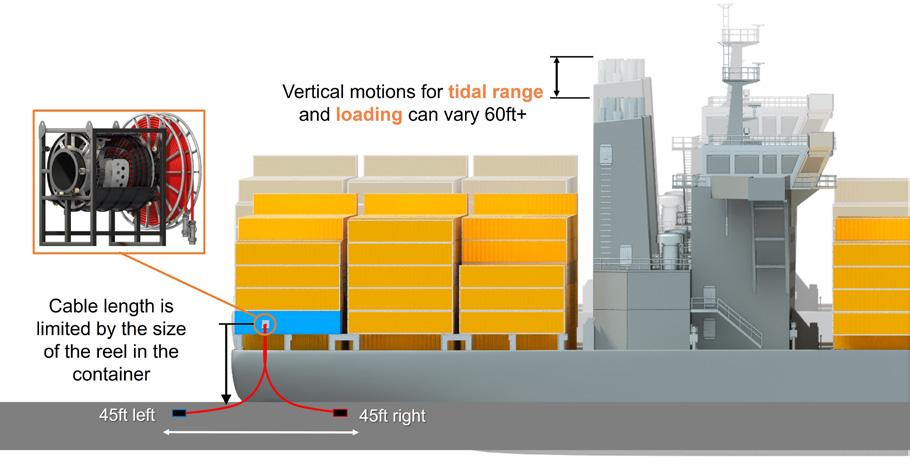
Challenge #3 - Berthing arrangement flexibility
Large efforts are being made to maximize vessel density on long quays by accommodating various vessel Lengths Overall (LOA’s), thereby optimizing the use of available space.
The berthing alignment to specific meter/foot markers is crucial for achieving an optimal container loading flow.
In summary, even with extensive planning, all of these factors make selecting locations to install a fixed shore power outlet that will allow all vessels to connect challenging. If the goal is to choose a fixed shore power outlet location that will also provide 100% future-proof connection flexibility it is next to impossible.
4) The Technology - iMSPO
Therefore, ports like the port of Hamburg have chosen the igus Mobile Shore Power Outlet to solve the challenges associated with the connection dilemma. The iMSPO (igus Mobile Shore Power Outlet) self-propelled system is capable of delivering a shoreside socket outlet connection point for the ship’s cables wherever it is needed along the berth up to a distance of 400m and more. With the sockets moved directly below the cables, the ship cables can easily be connected to the movable socket.
Conference
103
Paper
Figure 3: The challenge of onboard CMS limitations
For flexibility in both green and brown field applications the iMSPO system has the ability to be mounted in different configurations including options for quay face mounting, on deck mounting, mounting inside a trench or elevated on a support structure.

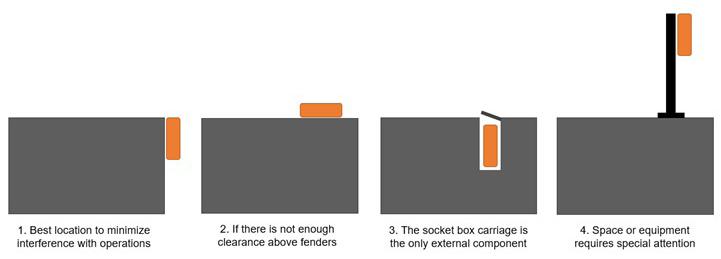
104
Conference Paper
Using igus roll e-chains enables the iMSPO to cover long distances and easily handle heavy cable fill weights, providing connection capability along the entire berth. All functions of the system are controlled by a single control unit. It is created to comply with IEC 80005-1, Annex D - 6.6kV, 7.5MVA standards and satisfies the EU Machinery Directive of 2006/42/EC. Additionally, it features a high maritime corrosion protection system and an IP67 rating for electrical components.
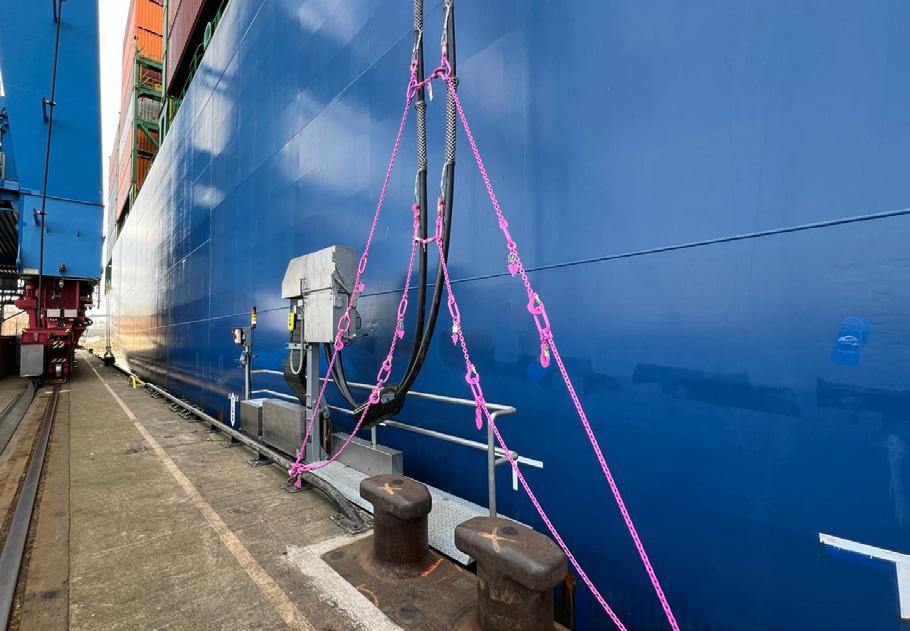
There are many advantages to deploying an iMPSO system on a terminal.
When considering the investment in a shore power system, the iMPSO is a one-time investment that provides 100% connection capability for all vessels and ensures that zero-emission goals can be reached not only today but also in the future without the need for adaptions or additions. From an operational perspective, dead zones no longer exist giving the operations team freedom from having to align the vessel to the shore power connection instead of the optimal container flow position. With a repeatable and predictable procedure for every vessel, using an iMPSO takes less than 15 minutes to connect and never requires more than 2 people to make the connection.
Safety is paramount and the key benefits of the iMPSO start with a design that uses type-tested components that are compliant with all applicable standards including the IEC 80005-1, EU Machinery Directive. Clear signalling for operational feedback and shore power supply status have been included in the design as well as an ergonomic cable handling procedure that has been thoughtfully designed to reduce strain on users to a minimum. Workers no longer have to carry the heavy ship cables and leave them lying on the deck which prevents injuries, eliminates trip hazards, and removes the potential for the medium voltage cables to be damaged while exposed without protection.
Maintenance planning with an iMSPO system is much easier with less equipment to maintain as there are fewer shore power outlets, less backend equipment, and a smaller, simpler overall electrical system to test. The iMPSO system itself is built to be easily maintained with readily
Paper 105
Conference
available parts, minimal parts marked for wear and a planned service life of 20 years with regular inspections and maintenance.
All of these benefits add up to significant cost savings when considering the TCO of a shore power system. Additional savings can be realized from the elimination of the extensive construction and expensive berth outage time that it takes to dig the holes in the reinforced concrete required to install shore power vaults in the ground. This type of construction is not needed with an iMSPO installation. Also, because of the electrical layout of the iMPSO, less cabling is needed to reach multiple pits and the switchgear associated with these pits can be eliminated yielding a smaller footprint needed for the electrical distribution house.
5) The Future – Zero Emission Port
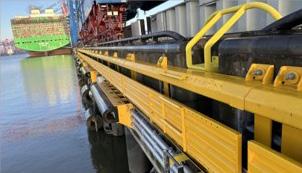
Ports striving to reach their “Zero-Emission” goals need innovative solutions to enable smart investments in technologies that provide critical benchmark results like 100% capability and future-proof flexibility. In the case of shore power, the question is no longer if we can plug in, but now how fast and safely can we plug in with the expectation of 100% connection of all vessels? Shore Power connection systems should seamlessly integrate into the workflow as smoothly as a standard mooring operation. At igus, we do not want you to have to focus on the shore power equipment and connection procedure. We want to give you technology that makes it easy to focus on your core business – moving containers.
In addition, these systems are not only suitable for the power supply of ships during layover times, but also for the “charging” of ships with battery banks for electric propulsion systems. This market is still small, but there are numerous prototypes of electric tugboats and electric ferries that are being delivered for testing which indicates that there is potential for great growth in the charging systems market as well.
Conference Paper 106
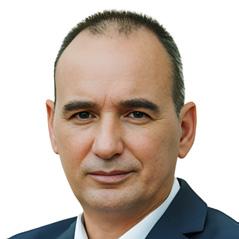
DIMITRIS TSOULOS
BLUE CONNECT Director, ERMA FIRST
BIOGRAPHY
Dimitris Tsoulos is Director for BLUE CONNECT at ERMA FIRST, a leading manufacturer of sustainable maritime solutions. Dimitris has an extensive understanding of marine water technologies having worked with De Nora, Evoqua Water Technologies and Siemens. He also has a Master’s in Electrical Power Engineering and Management.
Speaker
107
Alternative maritime power: The key to greener ports
The world of today
Climate change is happening before our eyes. Humankind’s negative impact on the planet –and its health and environmental consequences – can be summarised in one word: pollution.
As the concentration of carbon dioxide (CO2) and other greenhouse gases (GHGs) in the atmosphere increases, so does the amount of trapped heat. Global temperatures rose about 1.1 °C from 1901 to 2020, but climate change refers to more than an increase in temperature. Crucial aspects of daily life such as water, energy, transport, wildlife, agriculture, ecosystems and human health, are facing the consequences of climate change.
The impacts of climate change are interrelated. Drought can harm food production and human health. Flooding can lead to disease spread and damage to ecosystems and infrastructure. Human health issues can increase mortality, impact on food availability and limit worker productivity. Climate change impacts are seen throughout every aspect of the world we live in.
Air pollution
Air pollution is contamination of the environment by any chemical, physical or biological agent that modifies the natural characteristics of the atmosphere. According to the World Health Organization (WHO), each year, air pollution is responsible for nearly seven million deaths around the globe.
While essential to the world’s economy and well-being, the commercial marine shipping industry is a major contributor to global air pollution, and without action, the industry’s emissions are expected to increase.
Commercial ships burn fuel for energy and emit several types of air pollution as by-products. Ship-source pollutants most closely linked to climate change and public health impacts include CO2, nitrogen oxides (NOx), sulphur oxides (SOx) and particulate matter (PMx).
On a global scale, the marine industry’s share of total emissions from human sources is:
CO2: 2.2% NOx: 15% SOx: 13%
* International Maritime Organization. (2015). Third IMO Greenhouse Gas Study 2014. p. 1-2.
Conference Paper
108
A major GHG contributing to climate change and ocean acidification.
n CO2 contributes to climate change by trapping the sun’s heat.
n Climate changeinduced extreme weather events such as heat waves, floods and major storms have a negative impact on human health and cause untimely deaths worldwide.
n When CO2 is absorbed by seawater, the water becomes more acidic, with adverse effects on marine life and ecosystems.
A collection of gases of various combinations of nitrogen and oxygen that:
n Cause lung inflammation when breathed, increasing susceptibility to harm from allergens in people with asthma. NOx may enter the bloodstream and, with long-term exposure, lead to eventual heart and lung failure.
n Interact with volatile organic compounds (VOCs) to create groundlevel ozone, which contributes to eye, nose and throat irritation; shortness of breath; aggravation of respiratory conditions; chronic obstructive pulmonary disease; asthma and allergies; cardiovascular disease and untimely death.
n Cause acidification of soil and water (acid rain).
n Flood ecosystems with excess nitrogen nutrients, leading to toxic algal blooms in coastal waters and inland lakes.
A collection of gases of various combinations of sulphur and oxygen that:
n Cause lung inflammation when breathed
n increasing susceptibility to allergens in people with asthma – and may enter the bloodstream leading to eventual heart and lung failure with long-term exposure.
n Cause eye irritation, increased susceptibility to respiratory tract infections and increased hospital admissions for cardiac disease.
n Cause acidification of soil and water.
A collection of solid and liquid particles formed during fuel combustion that:
n Can be inhaled and absorbed into the bloodstream, which has been linked to many heart and lung problems including cancers.
n Are a component of smog.
n Form ‘black carbon’, the secondlargest contributor to climate change after CO2.
109 CO2 NOx SOx PMx
Conference Paper
Ports are a major contributor to air pollution
As the gateways to global trade, ports are critical economic and commercial hubs. However, they are also major sources of air, sea, noise and light pollution.
The power demand of commercial vessels is covered by the diesel-fuelled auxiliary engines, and a recent study found that emissions from diesel engines are significantly more harmful to humans than those from petrol-fuelled vehicles. More than 30 human epidemiological studies have found that diesel exhaust exposure directly increases cancer risk. Engines used to run on heavy fuel oil (HFO), which has a high polluting impact. The SO2 content of HFO is 2,700 times higher than that of diesel oil used for land transport. In developed countries, SO2 emissions have been controlled so that, today, the main source of SO2 is from ships during port calls.
From 1 January 2020, the ‘IMO 2020’ rule limits the sulphur in the fuel oil used on board ships operating outside designated emission control areas (EMAs) to 0.5% m/m (mass by mass) –a significant reduction from the previous limit of 3.5%. Within specific designated EMAs, the limits were already stricter (0.10%). This limitation set by the IMO led to the mandatory usage of very low sulphur fuel oil (VLSFO), which has significantly decreased SOx emissions. Despite this reduction, SOx emissions will persist as long as diesel engines continue to burn fuel oil. Negative health effects are also caused by exposure to inhalable PMx and NOX.
Another form of pollution produced by vessels’ diesel engines is noise pollution. Added to emissions caused by other factors (land transport inside ports, use of equipment motorised by fuel oil, etc.), this makes ports a significant net contributor to pollution in large port cities. This pollution causes an array of environmental issues, can seriously affect the health of workers, and contributes significantly to regional air pollution from ships and ports, since ports are close to heavily populated urban areas.
The world of tomorrow
A greener future will be realised by eliminating GHG emissions as well as air, water and soil pollution by 2050.
The European Union has set out this objective in the form of two action plans:
n Net-Zero 2050 – a commitment to reducing GHG emissions by 100% relative to 1990 levels by 2050.
n Zero Pollution for air, water and soil, which aims to reduce pollution to levels that are no longer considered harmful to health and natural ecosystems. This means creating a pollutant-free environment, with respect to the boundaries within which our planet can cope.
Achieving Net-Zero 2050 requires collaboration and proactivity. All efforts must be complemented with measures supporting adaptation and resilience. Interim targets to be achieved by 2030 aim to speed up the reduction of pollution at source. These include improving air quality to reduce the number of premature deaths caused by air pollution by 55%.
This vision aims to strengthen green, digital and economic leadership whilst creating a healthier and socially fairer planet.
Regulatory frameworks
To achieve the ultimate goal of reducing GHG and air pollutant emissions, regulatory frameworks have been established globally.
Conference Paper 110
Europe
Under the European Green Deal’s Zero Pollution Action Plan, the European Commission set the 2030 goal of reducing the number of premature deaths caused by fine particulate matter (PM 2.5, a key air pollutant), by at least 55% compared with 2005 levels.
More specifically, the ‘Fit for 55’ EU legislative package, published in July 2021 under the EU Green Deal, includes proposals related to the promotion and deployment of shore power. The Alternative Fuels Infrastructure Regulation (AFIR) is proposed as a revision of Directive 2014/94, including now-mandatory requirements for ports to have onshore power supply (OPS) infrastructure in place by 1 January 2030 to supply passenger and container ships of over 5,000 gross tonnage. The AFIR defines specific thresholds for the number of calls above which ports across the Trans-European Transport Network are required to implement the infrastructure. On the demand side, the FuelEU Maritime regulation includes provisions to promote the use of OPS in ports by the same ship types, by requiring them to be emissions-free at berth from 1 January 2030.
North America
According to the California Air Resources Board’s (CARB) At Berth Regulation, approved in 2020, 80% of a vessel’s power must come from an OPS when berthed at selected Californian ports.
Vessels covered in the current regulation, which came into effect on 1 January 2023, include container, reefer and cruise ships. However, following an update, the rule will also apply to car carriers and tankers, which are responsible for over 56% of all PM 2.5 emitted by docked vessels. The updated regulation could lead to a 90% reduction in pollution from the 2,300 vessel visits to the ports annually, leading to a decrease of 55% in cancer risk among communities living near the ports of Los Angeles, Long Beach and Richmond.
The rule will take effect from 2025 for car carriers and for tankers at the ports of Los Angeles and Long Beach. Tankers in Northern California have until 2027 to achieve compliance.
If not equipped with shore power, vessels entering a regulated Californian port must use CARBapproved control technology to minimise harmful emissions.
Several other countries have implemented funding programmes for developing shore power in ports, such as Canada through its Shore Power Technology for Ports Program.
China
China, facing a public health crisis costing the lives of more than 1.1 million people every year as well as huge economic losses, was forced to take immediate action towards the blue economy.
Regarding air pollution, the Air Pollution Action Plan launched in September 2013 became China’s most influential environmental policy. It helped the nation to make significant improvements in its air quality between 2013 and 2017, but even so, no cities reached the WHO’s recommended annual average PM 2.5 level of 10 µg/m.
In 2018, as part of the second phase of its battle against air pollution, China introduced its Three-Year Action Plan for Winning the Blue Sky War. The Action Plan stresses the importance of implementing air pollution control initiatives. Among the main axes of the Action Plan are to actively adjust transport structures, develop green transport systems and implement renewable resources in the national power-distribution grid. Strict control requirements for SOx and PMx are described in the policy for SOx and NOx emissions in the domestic emissioncontrol areas (DECAs) of the Pearl River Delta, the Yangtze River Delta and Bohai Bay.
Conference Paper 111
Regarding shore power, China Classification Society issued a technical notice advising vessels equipped with ‘cold ironing’ to use shore power in Chinese ports when at berth. From 1 July 2019, vessels engaged on international voyages that have the ability to receive shore power (except tankers or vessels using ‘equivalent measures’) should use shore power if berthed for more than three hours. If the vessel is berthed in an inland control area, the threshold is two hours. From 1 January 2021, cruise ships should use shore power when berthing for more than three hours in a berth with OPS capacity.
Why electrical energy?
A key element to these objectives is powering economies with clean energy by replacing polluting coal-, gas- and oil-sourced power stations with renewable energy sources such as wind or solar farms. This would dramatically reduce carbon emissions. Moreover, renewable energy is now not only green but also cost efficient in comparison to fossil fuels. The technology to exploit renewable resources is here and is becoming more and more efficient.
A wholesale transition to electric transport, powered by renewable energy, would play a considerable role in reducing GHG emissions while eliminating air pollution from the world’s largest cities and ports – and the technology behind it is rapidly maturing. In addition to facilitating sustainability on land and in the air, shore power can play a significant part in the electrification of shipping.
Shore power as alternative fuel
OPS, also commonly referred to as alternative marine power (AMP) or cold ironing, represents an alternative power option for ships at berth that reduces emissions by allowing onboard generators to be shut down.
The primary objective for OPS, until very recently, has been the improvement of a port’s local air quality through the reduction of ship-sourced pollutants such as NOx, SOx, PMx or other substances associated with onboard combustion processes. The reduction of CO2 emitted from ships at berth would also be a relevant outcome, particularly if the electricity mix supplied is mostly supplied from green sources (biomass, hydro or renewables). Other factors that contribute today to the suitability of OPS as a sustainable energy technology for ships at berth include:
n The evolution of ports from conventional networks to smart grids
n Societal added value
n Noise reduction in the port area and on board
n The improvement of crew living conditions
n The decrease of diesel engine maintenance costs
Key considerations favouring the deployment of shore power as an alternative maritime fuel include the following:
n The supply of high voltage (>1 kV AC) electricity is a key enabler of OPS for ships with higher power demands and allows more efficient connection.
n OPS system architecture is increasingly automated to allow efficient operation.
n More ports are today offering OPS services, allowing ships to reduce emissions at berth, with benefits for local air quality as well as the reduction of GHG emissions and noise.
n Standardisation has been achieved through the IEC/IEEE 8005 series.
n IMO interim guidelines for safe OPS operation have been finalised.
Conference Paper 112
Standardisation
The publication of the IEC/IEEE 80005: Utility connections in port series – particularly of Part 1: High voltage shore connection (HVSC) systems – General requirements in March 2019 – and the agreement of a text for the IMO OPS Guidelines in March 2020 can be considered the two most important steps towards the establishment of a formal structure for technical and operational OPS requirements.
The standardisation of both technical and operational aspects requires the involvement of all relevant stakeholders, meaning that an informed participation must be provided during the planning, certification, operation and safety assessment phases.
The standardisation of both technical and operational aspects requires the involvement of all relevant stakeholders, meaning that an informed participation must be provided during the planning, certification, operation and safety assessment phases
OPS systems need to be properly designed and planned based on harmonised procedures that minimise the barriers at the ship–shore interface, thereby mitigating hazards of an electrical nature or otherwise.
OPS systems need to be properly designed and planned based on harmoni sed procedures that minimise the barriers at the ship–shore interface, thereby mitigating hazards of an electrical nature or otherwise.
Basic architecture
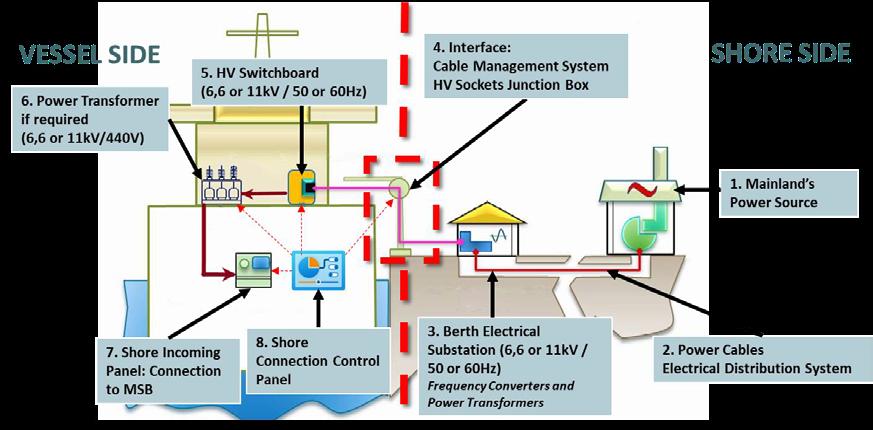
Realisation of the power connection requires infrastructure on both the shore and vessel sides
Realisation of the power connection requires infrastructure on both the shore and vessel sides.
Shoreside infrastructure (Summary)
An electrical substation at berth is converting the voltage and frequency levels of the local electrical grid to levels that can be utilised by vessels as regulated by relevant standards. The electrical substations also include electrical protection equipment. A cabling and earthing system is also required to connect the port’s substation upstream to the main power source and downstream to the onboard connection point.
An electrical substation at berth is converting the voltage and frequency levels of the local electrical grid to levels that can be utilised by vessels as regulated by relevant standards. The electrical substations also include electrical protection equipment. A cabling and earthing system is also required to connect the port’s substation upstream to the main power source and downstream to the onboard connection point.
The ship-to-shore interface comprises equipment enabling the vessel to connect to shore power.
Required equipment includes:
a. A cable management system (CMS). The CMS may feature either on the shore or vessel side according to the type of vessel. The design of the CMS differs according to the kind of installation, vessel type and port specifications. Cable reels controlled manually by vessel crew or by an automation system that monitors and controls the active cable length according to tidal vibrations are installed on container vessels. Certain vessel types, including cruise ships and RoRos, require the installation of the CMS on the shore side. In such cases, a mobile CMS equipped with a crane allowing the cable to be connected at the required onboard connection point is installed.
b. MV shore power sockets, which include pins for the following connections: o Three power connections, one for each phase
Conference
113
Paper
One earth connection
Shore-to-ship interface
The ship-to-shore interface comprises equipment enabling the vessel to connect to shore power.
Required equipment includes:
a. A cable management system (CMS). The CMS may feature either on the shore or vessel side according to the type of vessel. The design of the CMS differs according to the kind of installation, vessel type and port specifications. Cable reels controlled manually by vessel crew or by an automation system that monitors and controls the active cable length according to tidal vibrations are installed on container vessels. Certain vessel types, including cruise ships and RoRos, require the installation of the CMS on the shore side. In such cases, a mobile CMS equipped with a crane allowing the cable to be connected at the required onboard connection point is installed.
b. MV shore power sockets, which include pins for the following connections:
n Three power connections, one for each phase
n One earth connection
n Pilot connections for safety circuit implementation, with the number of pins depending on the vessel type
Connectors and sockets are specified in both the IEC 62613-1 and IEC/IEE/ISO 80005-1 standards to ensure universal compatibility.
Vessel-side infrastructure
Onboard installations include all appropriate equipment to ensure compatibility of the vesseland shoreside power networks as well as the required safety devices for protecting people and equipment.
The onboard installation shall include:
1. MV switchboard as the incoming connection point on board. The switchgear’s electrical characteristics must be selected efficiently according to IEC 80005-1 to ensure vessel- and shore-side compatibility. Earth switches must be included to secure the equipment’s earth connection when the MV switchboard is voltage free. Earth fault-detection and -protection relay devices must be included to provide the required safeguards.
2. Power transformer (if required). If the voltage rate of the distribution network on board is different from that on shore, a power transformer is required. The power transformer converts the high-voltage rate on shore (6.6 or 11 kV) to the low-voltage rate of the vessel’s distribution electrical grid. For commercial vessels, the voltage rate is frequently 380–450 V AC. Different power transformer types are available. Most commonly used are the oil power transformers and dry-type cast resin transformers. Both types have pros and cons. Dry-type power transformers have prevailed in shipping. The capacity of the power transformer depends on the vessel’s power demands during operations at port. Therefore, the power demand for the design of the installation must be carefully selected.
Conference Paper 114
3. LV switchboard (if required). In case a power transformer is required for the onboard installation, a LV switchgear must be installed for the protection of the transformer’s secondary coil. Since the power demand for the operation of the vessel for connection to medium voltage is higher than 1 MVA, current levels at low voltage are very high, meaning circuit breakers must be selected to ensure compatibility. Another critical point to consider is that the ambient conditions of the LV switchboard’s installation area must be maintained at specific levels.
4. Shore incoming panel. The shore incoming panel is the connection point to the vessel’s main switchboard (MSB). Newly built vessels may be “shore power ready”, in which case, the shore incoming panel with the appropriate circuit breaker will have been installed during construction. The shore incoming panel can be rated at medium or low voltage depending on the vessel’s distribution grid.
5. Shore connection control panel. The shore connection control panel facilitates the control and monitoring of the system. The monitoring system logs all actions during operation and includes the logging of all attention and critical alarms. Moreover, electrical characteristics such as voltage, power, frequency, phase sequence, harmonics distortion and power quality -at minimum, are visualized on the control panel’s HMI. The HMI enables the operator to use and maintain the system safely and efficiently.
6. Auto-synchronising device must be used to control the automated procedure of synchronising the vessel’s voltage waveform to the shoreside voltage waveform. This procedure is required to ensure uninterruptible power supply on board during connection.
The onboard installation can comprise either loose equipment or a containerised solution that includes all the required equipment for the power connection.
A containerised solution is easier to install, does not require extensive engineering studies and provides maximum flexibility. If loose components are to be installed, locations for each piece of equipment and cable routing for the connection of the equipment must be defined during the engineering study stage. However, a containerised solution requires a specific area on deck to be retained. For container ships, this equates to a first-tier container slot. Moreover, a container ship’s hull construction adds additional cost to the installation.
AMP systems on board must be flexible. The vessel should be able to connect from both the port and starboard sides unless the operator specifies differently. System portability is addressed with the containerized configuration, supplemented by the installation of the following equipment:
1. A second CMS for the connection to vessel side
2. Junction boxes for each side (port and starboard) including the appropriate HV sockets for connecting the container to the vessel
3. A changeover panel. A MV panel with two breakers with interlock, enabling the system operator to select which side is to be connected.
Portability is also required in cases where the operational concept calls for the AMP system to be stored on the quay and loaded on the vessel when at berth. This operation scheme allows more than one vessel with similar electrical characteristics to utilise the same equipment.
Conference Paper 115
1. A second CMS for the connection to vessel side
2. Junction boxes for each side (port and starboard) including the appropriate HV sockets for connecting the container to the vessel
3. A changeover panel. A MV panel with two breakers with interlock, enabling the system operator to select which side is to be connected.
Variations of the AMP system
Portability is also required in cases where the operational concept calls for the AMP system to be stored on the quay and loaded on the vessel when at berth. This operation scheme allows more than one vessel with similar electrical characteristics to utilise the same equipment.
Different vessel types have different requirements, with variation depending on the following factors:
Different vessel types have different requirements, with variation depending on the following factors:
i. Power demand. If power demand is lower than 1 MVA, the vessel is eligible to connect to the LV power grid according to the IEC/IEEE 80005-3 standard. However, if power demand is higher than 1 MVA, the vessel must establish an HV power-grid connection in accordance with the IEC/IEEE 80005-1:2019 standard.
i. Power demand. If power demand is lower than 1 MVA, the vessel is eligible to connect to the LV power grid according to the IEC/IEEE 80005-3 standard. However, if power demand is higher than 1 MVA, the vessel must establish an HV power-grid connection in accordance with the IEC/IEEE 80005-1:2019 standard.
ii. Equipment for loading and unloading. If cranes are required for loading and unloading the vessel, space at berth is limited and the CMS must be installed on board.
ii. Equipment for loading and unloading. If cranes are required for loading and unloading the vessel, space at berth is limited and the CMS must be installed on board.
iii. Vessel type. According to the vessel type, several system characteristics may differ. HV connection is 6.6 kV for container ships, tankers and LNG carriers and 11 kV for cruise ships and RoRos. The maximum power supply and required cable connections also vary according to vessel type, as does the design of the safety circuit realised through the pilot cables.
iii. Vessel type. According to the vessel type, several system characteristics may differ. HV connection is 6 6 kV for container ships, tankers and LNG carriers and 11 kV for cruise ships and RoRos. The maximum power supply and required cable connections also vary according to vessel type, as does the design of the safety circuit realised through the pilot cables.
The above specifications are summarised in the following table:
The above specifications are summarised in the following table:
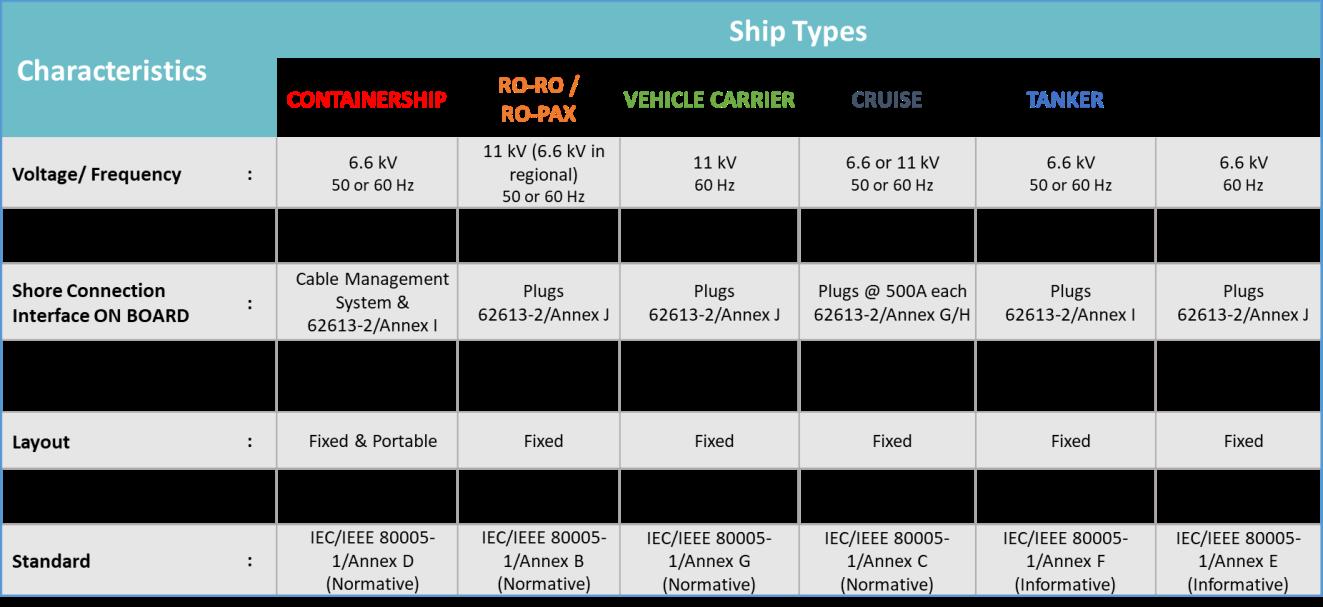
Safety is the key to efficiency
OPS systems require high safety and reliability levels to mitigate the following risks:
1. Fire or explosion
2. Occupational hazards such as electrical shock or arcing
3. Blackout during shore power supply
A comprehensive risk assessment including HazID (hazard identification), HazOP (hazards and
Conference
116
Paper
Page | 8
www.ermafirst.com
operability) and FMEAC (failure modes, effects and criticality) analyses must be performed for both the shore and vessel sides. Shore power systems operate with complex power factors that add risk, including:
n Integration of multiple power sources (onshore power grid and onboard generators)
n Power conversion with power transformers
n Interface equipment such as cables with connectors and sockets (MV cable and plug) for shore-to-ship electrical connection with frequent use
n High-voltage level nominal rates
The ISO/IEC/IEEE 80005-1:2019 technical standard describes safety measures, including:
n Implementing adequate protection on the MV switchboard. The MV incoming circuit breaker must be protected, through the use of a multifunction protection relay, against the following faults -at minimum:
n Overvoltage n Overcurrent
n Undervoltage n Reverse power
n Frequency n Phase sequence
n Overload
n Earth fault protection. Earth fault detection must be implemented to detect an earth fault at an early stage and protect operators and equipment from occupational hazards.
n Earth switches. All circuit breakers and disconnectors must be earthed via earth switches. A mechanical interlock between disconnectors and earth switches ensure that the system is earthed when disconnected to discharge any remaining voltage upon disconnection.
n Mechanical interlocking of connectors. The operator cannot remove the cable connector from the socket during disconnection or insert it during connection if voltage is detected. Cables must be earthed during handling.
n Safety loops. The safety circuit must be activated to enable the vessel’s incoming circuit breaker to close.
Continuous monitoring of the system’s operation is critical. Power flow, including status of the devises must be monitored so that the operator can easily evaluate the operating conditions at any time. Specific procedures ensuring safe connection/disconnection and ESD shall be in place.
Safety conditions must be continually monitored on both the ship and shore sides through the safety loop formed by pilot wires. As per the standard, there is a specific safety loop for each vessel type.
ERMA FIRST BLUE CONNECT
BLUE CONNECT is ERMA FIRST’s AMP solution suitable for both retrofit and newbuild vessels. It is available in both containerised-unit and stand-alone component options, to be installed in a suitable location on board.
Both the containerised and stand-alone units are designed to provide the ship operator with maximum flexibility during berthing. The containerised solution is housed in a mobile 40-ft standard container with all the required equipment, to be plugged into the portside infrastructure and the vessel’s electrical grid. It is designed to address varied power demands and installation requirements. BLUE CONNECT is controlled and monitored locally through a
Conference Paper 117
Conference Paper
Both the containerised and stand-alone units are designed to provide the ship operator with maximum flexibility during berthing. The containerised solution is housed in a mobile 40 -ft standard container with all the required equipment, to be plugged into the portside infrastructure and the vessel’s electrical grid. It is designed to address varied power demands and installation requirements. BLUE CONNECT is controlled and monitored locally through a user-friendly interface. It’s control system includes remote control and condi tion monitoring functions. It can be integrated with IoT Services, data logging and PMS platforms. The system is configured to maximise safety by mitigating, the hazards that may arise according to the risk assessment.
user-friendly interface. It’s control system includes remote control and condition monitoring functions. It can be integrated with IoT Services, data logging and PMS platforms. The system is configured to maximise safety by mitigating, the hazards that may arise according to the risk assessment.
Some of the safety features implemented are:
Some of the safety features implemented are:
n An emergency stop activated by a highly efficient safety-relay system
An emergency stop activated by a highly efficient safety-relay system
n Redundancy of the programmable logic controller’s (PLC) CPUs
Redundancy of the programmable logic controller’s (PLC) CPUs
n Redundancy of auxiliary power supply system
Redundancy of auxiliary power supply system
n Self-diagnostics implemented to enable the operator easily identify the cause of any communication error or power loss
Self-diagnostics implemented to enable the operator easily identify the cause of any communication error or power loss
Ring architecture of the communication devices to ensure availability
n Ring architecture of the communication devices to ensure availability
Bureau Veritas (BV) issued Approval in Principle (AiP) to BLUE CONNECT AMP. BV’s AiP, as part of the RiskBased Certification process, has enabled the technology to achieve this important milestone, proving that BLUE CONNECT design complies with rules and regulations and fit for purpose for the application. Working extensively with BV on the system specifics, the AiP allows ERMA FIRST to proceed with confidence on smooth onboard approval processes of the BLUE CONNECT AMP system.
Bureau Veritas (BV) issued Approval in Principle (AiP) to BLUE CONNECT AMP. BV’s AiP, as part of the Risk-Based Certification process, has enabled the technology to achieve this important milestone, proving that BLUE CONNECT design complies with rules and regulations and fit for purpose for the application. Working extensively with BV on the system specifics, the AiP allows ERMA FIRST to proceed with confidence on smooth onboard approval processes of the BLUE CONNECT AMP system.
BLUE CONNECT has been qualified by DNV and a letter of professional experience has been issued stating that BLUE CONNECT meets the requirements and can be categorized as an Energy Saving Device that promote positive effect in ship’s CII regulatory metrics . The relevant letter is included in the Appendices.
BLUE CONNECT has been qualified by DNV and a letter of professional experience has been issued stating that BLUE CONNECT meets the requirements and can be categorized as an Energy Saving Device that promote positive effect in ship’s CII regulatory metrics. The relevant letter is included in the Appendices.
The following table illustrate the ERMA FIRST BASIC PRODUCT LINE:
The following table illustrate the ERMA FIRST BASIC PRODUCT LINE:
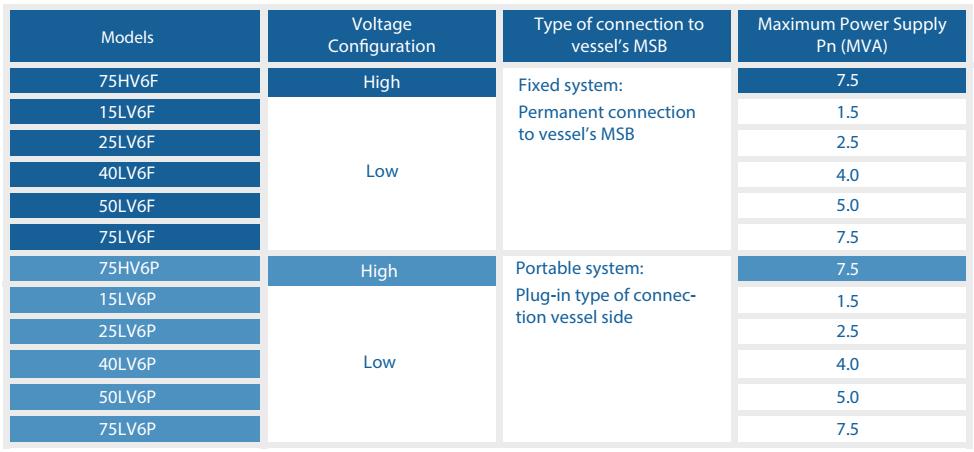
*Ship specific solutions are also available
*Ship specific solutions are also available
118
www.ermafirst.com Page | 10 both containerised-unit and stand-alone component options, to be installed in a suitable location on board.

CHRIS POYNER
ABB Business Manager, Land Based Shore Connection
BIOGRAPHY
With over twenty years of experience in the decarbonisation of process industries, Chris now leads the ABB Shore Connection business with a focus on implementing ABBs innovative technologies not only to minimise the environmental impact of vessel calls, but also improve energy efficiency through every part of the process.
ABB is a technology leader in electrification and automation, enabling a more sustainable and resource-efficient future. The company’s solutions connect engineering know-how and software to optimize how things are manufactured, moved, powered and operated. Building on more than 140 years of excellence, ABB’s 105,000 employees are committed to driving innovations that accelerate industrial transformation.
Speaker
119
SESSION 6.2
Green Technologies
Ports and shippers are introducing green technology, enhancing sustainability, and reducing their carbon footprint. This session will detail these technologies and how it affects both the portside and seaside.
120

 ILIAS SOULTANIAS
Managing Principal Engineer, Sustainability, ABS
ILIAS SOULTANIAS
Managing Principal Engineer, Sustainability, ABS
BIOGRAPHY
Naval Architect & Marine Engineer by education, ventured into ship management, repairs and maintenance leading to sustainable shipping. With Project Management background and experience in ship management, marine technical services, procurement, and business development, Ilias has been actively pursuing the challenges of the maritime and shipping industry for the development into the future. Working on energy, emissions and innovative technologies related to alternative fuels that includes technical, environmental regulatory as well as economic aspects.
As part of the Global Sustainability Center team in ABS (American Bureau of Shipping), he is focused on the vessels’ environmental compliance and performance in view of the upcoming IMO GHG (Greenhouse Gas) reduction measures and decarbonization drive. With the view towards a low carbon future in shipping, he is also supporting joint development projects on alternative and low carbon fuels and the energy transition, working closely with industry partners. At the same time, with the vibrant team of Singapore Sustainability, they are fostering ESG excellence in the sector and support the maritime and offshore companies’ endeavors into this new area.
Moderator 121

DR HAOXIN XU
Lead Consultant, Department of Waste-to-Energy & Carbon Capture, Ramboll
BIOGRAPHY
Dr. Haoxin Xu is Lead Consultant in Ramboll, an international engineering consultancy firm originated from Denmark. Haoxin holds a Ph.D. from Nanyang Technological University in Singapore and a Master of Science degree in Sustainable Energy Engineering from KTH Royal Institute of Technology in Sweden. With over a decade’s worth of research and consulting experience, Haoxin has built a career cantered around clean energy solutions and decarbonization technologies, with a focus on Waste-to-Energy and Carbon Capture initiatives. Joining the Waste-to-Energy and Carbon Capture division in Singapore in October 2019, Haoxin has been involved in a variety of projects across diverse geographies, including Southeast Asia, Europe, and South Africa. In her regional endeavors, Haoxin is committed to delivering technically sound and strategically impactful projects. She offers technical advisory services and plays a key role in supporting project implementation, working closely with industry stakeholders.
In her role as project manager, Haoxin oversees the coordination and progression of Ramboll’s technical advisory teams, ensuring effective project setup, task management, and client satisfaction. Her work encompasses Technical Due Diligence, feasibility analysis, tender specification drafting, and procurement strategy development.
As a technical specialist, she is skilled in waste assessment, process modeling, and technology assessment of carbon capture and direct air capture technologies.
As a researcher, Haoxin has contributed to the academic community by publishing in reputable journals like Renewable and Sustainable Energy Reviews, Applied Energy, Waste Management, and Solar Energy, achieving more than 500 citations to date.
Speaker
122
ntroduction
Carbon Capture Utilisation and Storage for Hard-to-Abate Industries, Considerations in Business Case Development
1. Introduction
1.1 Decarbonisation of Hard-to-Abate Industries
Industry lies at the heart of thriving communities, playing a key role in economic growth and supporting around a quarter of the world’s GDP and job market. Industries manufacture essential materials and products that form our buildings, roads, tools, and everyday items, facilitating the operation of companies and daily life. With the world population growing, cities expanding, and economies developing, the need for these fundamental materials is expected to persist.
Decarbonisation of Hard-to-Abate Industries lies at the heart of thriving communities, playing a key role in economic growth supporting around a quarter of the world's GDP and job market. Industries manufacture essential materials and products that form our buildings, roads, tools, and everyday items, facilitating the operation of companies and daily life. With the world population growing, expanding, and economies developing, the need for these fundamental materials is expected to persist. has become the largest source of CO2 emissions from energy and industrial processes even more than the power and transport sectors (Figure 1). It accounted for CO2 emissions in 2020. Within Industry, steel and cement are the two highestindustry subsectors, the so called hard-to-abate sectors. Together they accounted approximately 12%-15% of total direct global CO2 emissions.
Industry has become the largest source of CO2 emissions from energy and industrial processes even more than the power and transport sectors (Figure 1). It accounted for 28% of direct CO2 emissions in 2020. Within Industry, steel and cement are the two highest-emitting industry subsectors, the so called hard-to-abate sectors. Together they accounted for approximately 12%-15% of total direct global CO2 emissions.
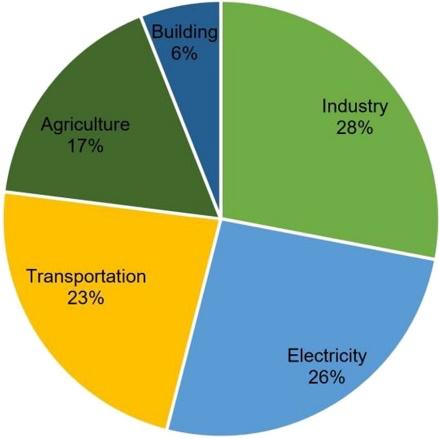
1
1
twithstanding their large carbon footprint, the two industries are faced with several decarbonisation barriers specific to their unique processes and business models (see Table
Decarbonisa:on barriers to cement and steel industries
Conference Paper
123
Figure
CO2 emissions by sectors, 20201
Figure
CO2 emissions by sectors, 20201
Industries Barriers, Process Barriers, Commercial Cement • High reliance on coal for high grade heat • Low profit margin of product
1 International Energy Agency, direct CO2 emission by sectors, 2020
Notwithstanding their large carbon footprint, the two industries are faced with several decarbonisation barriers specific to their unique processes and business models (see Table 1).
Table 1 Decarbonisation barriers to cement and steel industries
Industries
Cement
Steel
Barriers, Process
High reliance on coal for high grade heat
Large quantity of process emissions, and various emitters on site
High reliance on coal for high grade heat and iron reduction
Large quantity of process emissions, and various emitters on site
1.2 Carbon capture utilisation and storage
Barriers, Commercial
Low profit margin of product
The requirement to locate capacity relatively near to the point of use
Limits to the availability of scraps for steel recycling
Globally traded commodity with relatively low margin
CCUS refers to a suite of technologies that involves the capture of CO2 from large point sources, including power generation or industrial facilities that use either fossil fuels or biomass for fuel. The CO2 can also be captured directly from the atmosphere.
The use of the CO2 for an industrial purpose can provide a potential revenue stream for CCUS facilities. Until now, the vast majority of CCUS projects have relied on revenue from the sale of CO2 to oil companies for enhanced oil recovery (EOR), but there are many other potential uses of the CO2, including as a feedstock for the production of synthetic fuels, chemicals and building materials.
If not being used on-site, the captured CO2 is compressed and transported by pipeline, ship, rail or truck to be used in a range of applications, or injected into deep geological formations (including depleted oil and gas reservoirs or saline formations) which trap the CO2 for permanent storage.
1.3 Business case – the challenge
CCUS stands as the sole option other than shutting down or re-purposing existing power and industry facilities earlier, or operating them at reduced capacity or with different fuels. Adding CO2 capture technology allows these plants and their connected operations and supply chains to keep running, while cutting down their emissions drastically.
In some industries, reaching net-zero emissions isn’t possible without CCUS. Cement making, for example, releases substantial emissions from the chemical process itself when limestone is converted to lime and CO2, independent of any fossil fuel use. Since there’s no proven alternative for cement production, capturing and storing this CO2 is virtually the only way forward. In the iron and steel industry, the most promising and cost-effective low-carbon steel production methods currently revolve around CCUS, catering to about 70% of the world’s steel output.
Conference Paper 124
Nonetheless, the deployment of CCUS in these respective industries in Southeast Asia are hindered by the following aspects:
1. Lack of regulatory incentives to prepare for market readiness
2. Lack of CCUS commercial track record in the respective industries
3. Limited carbon sinks around (carbon offtaking and storage routes)
4. Unavailability of funding opportunities due to low or no profit return
This paper discusses the design methodology of CCUS business cases for cement and steel industry.
2. Design Methodology for CCUS Business Case
2.1 General Approach
CCUS business case shall be designed within the entire emission reduction roadmap/ strategy. In Figure 2, the overall reduction approach for direct emissions of industrial facilities is presented. Priorities shall be given to the available emission reduction measures such as:
1. Using energy efficiency measures such as best available technologies, waste heat recovery, operational optimization, etc,
2. Using alternative fuels to replace the current fossil based fuels and raw materials feedstock.
There is a certain limit of how much reduction can be achieved by all these measures combined. That is when carbon capture utilization and storage comes into the picture. Therefore, the carbon capture (CC) plant shall be sized in consideration with the overall emission reduction strategy of the facility and serve as the last resolve for the industries, due to its high cost of implementation.
Another important aspect to consider when size the CSS is the offtake and storage routes. In regions and economies such as Southeast Asia, it is seen that regulatory incentives are still not compelling enough to incentivize the capture business, therefore alternative revenue streams are sought to offset the high capture cost by CO2 utilisation as a product in manufacturing and industrial processes.
In the meantime, major scale CO2 storage sites in Southeast Asia are often still under mapping and early stage development activities, CO2 utilisation pathways may offer alternatives to CO2 storage as CO2 sinks.
It is recommended that offtake agreements and storage agreements are to be developed in parallel as the capture project, to ensure the synchronized development of complete CO2 source to sink supply chain.
Conference Paper 125
It is recommended that offtake agreements and storage agreements are to be developed in parallel as the capture project, to ensure the synchronized development of complete CO2 source to sink supply chain



the overall decarbonisa:on strategy
2 CCUS supply chain within the overall decarbonisation strategy
2.2 CCUS Business Case Workflow for Prefeasibility and Feasibility Studies
2.2 CCUS Business Case Workflow for Prefeasibility and Feasibility Studies
Figure 3 presents the stepwise design methodology of CCUS business case for industries. The methodology is applicable for retrofitting existing cement or steel plant with traditional production process:
Figure 3 presents the stepwise design methodology of CCUS business case for industries. The methodology is applicable for retrofitting existing cement or steel plant with traditional production process:
n For cement: Calcination with lime and coal for clinker production
• For cement: Calcination with lime and coal for clinker production
n For steel: Blast furnace – basic oxygen furnace (BF-BOF) production route
• For steel: Blast furnace – basic oxygen furnace (BF-BOF) production route
•
• Procurement
•
Design principle for retrofitting industrial processes can be summarized into:
Design principle for retrofitting industrial processes can be summarized into:
n Only use available utilities on site and minimise additional fuel/power consumption
• Only use available utilities on site and minimise additional fuel/power consumption
n Make use of the existing flue gas treatment to best extent unless further cleaning is absolutely required
• Make use of the existing flue gas treatment to best extent unless further cleaning is absolutely required
n With least interruption and interception of the main cement/steel production process possible, as these are the main revenue streams
• With least interruption and interception of the main cement/steel production process possible, as these are the main revenue streams
Task 0. Decarbonisation Strategy
The process is initiated by understanding the decarbonization strategy of the facility in combination with the regulatory requirement as well as the facility's own goals. The facilities might have already adopted various energy efficiency measures. The focus shall be given to investigating the remaining room of improvement that can be achieved, with cost benefit analysis. A list of decarbonisation technologies/measures for cement and steel industries are summarized below in Table 2
126
Conference Paper
Figure
Confidential mapping and early stage development activities, CO2 utilisation pathways may offer alternatives to CO2 storage as CO2 sinks
Figure 2 CCUS supply chain within
Business Case Conditioning Direct Emissions Capture CO2 as Product Capture Site Premise Reduction by other methods such as SCMs Geological Storage at nearby Sites Offtakers Fuel and chemicals synthesis • Direct usage Carbonation Fuel Synthesis Road/ Rai/ pipelinel Road/Rail/pipelineShips On Site Utilisation Transportation Fossil CO2 from process Biogenic CO2 from process Reduction by alternative fuels Reduction by using EE, BAT, WHR, etc Conditioning Conditioning
Figure 3 General approach of CCUS design for viable business case
Figure 3 General approach of CCUS design for viable business case
Task 2. CO2 Offtaker /Storage Mapping • Offtaker options (distance, CO2 quality, price) • Storage sites and clusters • Timeline (near term, long term) Task 1. Initial Survey • Site Visit CO2 Sources • Utility Availability Layout Availability Task 0. Facility’s Decarbonisation Strategy • Decarbonisation roadmap • Regulatory forecast Import/Export Strategy Task 3. Technology Assessment • CC x Process routing Technology Readiness Level Levelised Cost Task 4. CCUS Concept Design Design Basis • Sources/offtake/Storage routes CC Capacity Transport/storage options • Site evaluation and recommendation Conceptual design Process flow diagram • Heat and mass balance • Equipment sizing and layout • On site storage • CO2 specification Task 5. Business Case and Sensitivity Analysis
model:
CAPEX/OPEX
Business
•
Revenue model
• Payback & Sensitivity Project implementation:
Strategy
timeline
• Project realisation
• Environmental and Social Impact Assessments
etc
Risk register and mitigation
Task 0. Decarbonisation Strategy
The process is initiated by understanding the decarbonization strategy of the facility in combination with the regulatory requirement as well as the facility’s own goals. The facilities might have already adopted various energy efficiency measures. The focus shall be given to investigating the remaining room of improvement that can be achieved, with cost benefit analysis. A list of decarbonisation technologies/measures for cement and steel industries are summarized below in Table 2.
Decarbonisation measures Cement Steel
Energy efficiency
General improvements covering improved process control, heat recovery actions, more efficient fans and motors (introducing VFDs), improved refractory material, etc..
Supplementary Cementitious Materials (SCMs) as clinker substitution (only applicable to cement)
Alternative fuels (AFs)
Electrification
Using SCMs blending in cement production such as:
n Portland limestone
n Fly ash blended cement
n Steel Slag
n Natural pozzolans
n LC3 (Limestone Calcined Clay)
Using biomass, waste such as Refuse Derived Fuel (RDF) to substitute fossil fuel in combustion process
Electrification of pre-calciner and kiln is not yet mature technologies, however pre-calciner electrification requires lower temperatures and is probably firstly achievable. It is required that the electricity source has a low CO2 footprint.
n Heat recovery for sintering plant, coke plant, blast furnace hot stove, converter gas, etc.
n Coke dry quenching
n Top pressure turbine
n Coal moisture control
n Pulverized coal injection
n High temperature recuperator for reheating furnace
n etc
Alternative innovative technologies
Other innovative technologies including using alternative noncarbonate feedstocks, electrochemical production methods, and other alternatives to traditional rotary kiln plants.
Biomass and/or natural gas co-firing to substitute coal consumption in combustion
n Scrap based - Electric Arc Furnace (EAF)
n Direct reduced iron (DRI)Electric Arc Furnace (EAF)
n It is required that the electricity source has a low CO2 footprint.
Hydrogen as reducing agent in blast furnace.
Conference Paper 127
-
Decarbonisation measures Cement Steel
Alternative binder chemistries (only for cement)
Alternative binder chemistries shift away from traditional Portlandtype cement clinker entirely. Alternative chemistries include belite, sulphoaluminate, and “MOMS” (magnesium oxide derived from magnesium silicates) clinkers and other engineered materials. Some materials are commercially available today at a small scale, but many remain far from technological maturity and are generally far from broad market adoption.
CCUS n Installation of a postcombustion facility on the main stack allows for capture of 90% of the CO2, however it does require a significant energy consumption in either heat or electricity (or both), or n Separating calcination and kiln flue gases and performing the calcination with indirect heat and capturing the CO2 (LEILAC process).
Carbon capture in Ironmaking process is often pointed out as the most feasible option and has been the focus of several pilot projects
Table 2 Decarbonisation technologies/measures for cement and steel plants
Task 1. Initial Survey
Initial survey shall be carried out to understand various of design parameters such as CO2 sources, utility and layout availability.
For both cement and steel facilities, there are various of CO2 sources on site as summarized in Table 3. It shall be noted that the each of the process may have multiple chimneys on site. Therefore, it is important to understand the site conditions in conjunction with the flue gas profile to derive the best combination of location, capacity and additional flue gas treatment step required to condition the flue gas before CC process. The focal areas of site survey are detailed in
Conference Paper 128
-
CO2 emitters
Cement Steel
n Preheater chimneys (combined with flue gas from rotary kiln)
n Clinker cooler chimneys
n Coal crushing chimneys
Table 4 Site survey parameters
Focal area for site survey
Emission source profile
Availability
Existing flue gas treatment on site
Parameters
Site proximity to potential CC installation
Site space for CC installation
Utility
Table 4.
n Sintering and Pelletizing
n Cokemaking plant
n Lime Kilns
n Iron Making / BF Stoves
n Steelmaking/Basic Oxygen
Furnace
n Quality Strip Production
n Power Plant
n Flue gas flow (Nm3/h)
n Flue gas composition (in w/w%): CO2, NOx, SO2, CO, O2, dust, other constituents, humidity
n Flue gas temperature and pressure
n Air ingress
Operational hours per year and outage patterns
n Ammonia injection or selective catalytic reduction (SCR)
n De-sulfurisation (dry, semi-dry, wet scrubber)
n De-dust (electrostatic precipitator, baghouse filter)
n Etc
Distance to emitters, pipeline and ducting
Space available and layout including capture plant, compression and liquefaction unit, site storage
n Steam, electricity, cooling provision
n Connection and piping
Task 2. CO2 Offtake and Storage Mapping
In the meantime, CO2 offtake end source mapping is carried out to understand the options to CO2 sinks. CO2 offtake for utilization offers a more immediate pathway to offset high capture cost. Typical utilization methods can be summarized into:
a. Direct use in food/beverage production, greenhouses, or industrial processes
b. Carbonation of concrete or steel, or other mineralization scenarios
c. Fuel and chemical synthesis such as methanol, ammonia
Option a is often considered as delayed emission, while option b is considered as permanent carbon sink. Option c, instead, offers an alternative to avoid fossil consumption, and also is not
Conference Paper 129
a carbon sink.
Storage site mapping, has been carried out both in global scale as well as regional scale. However, storage sites in Southeast Asia have not been fully investigated and the mapping exercise is still ongoing. Eventually, the following parameters shall be determined in this source-to-sink business case:
• Operators in the region and transport cluster initiatives
• Nearest port of offtake, and transportation options to port (pipeline, truck/railway, etc)
n Operators in the region and transport cluster initiatives
• Distance from port to storage site
n Nearest port of offtake, and transportation options to port (pipeline, truck/railway, etc)
n Distance from port to storage site
• Geological conditions, and potential CO2 specifications required for both transport and storage
• Ship offtake frequency
n Geological conditions, and potential CO2 specifications required for both transport and storage
n Ship offtake frequency
• Cost estimates from site storage all the way to final sequestration Figure 4 Storage site mapping of ASEAN region
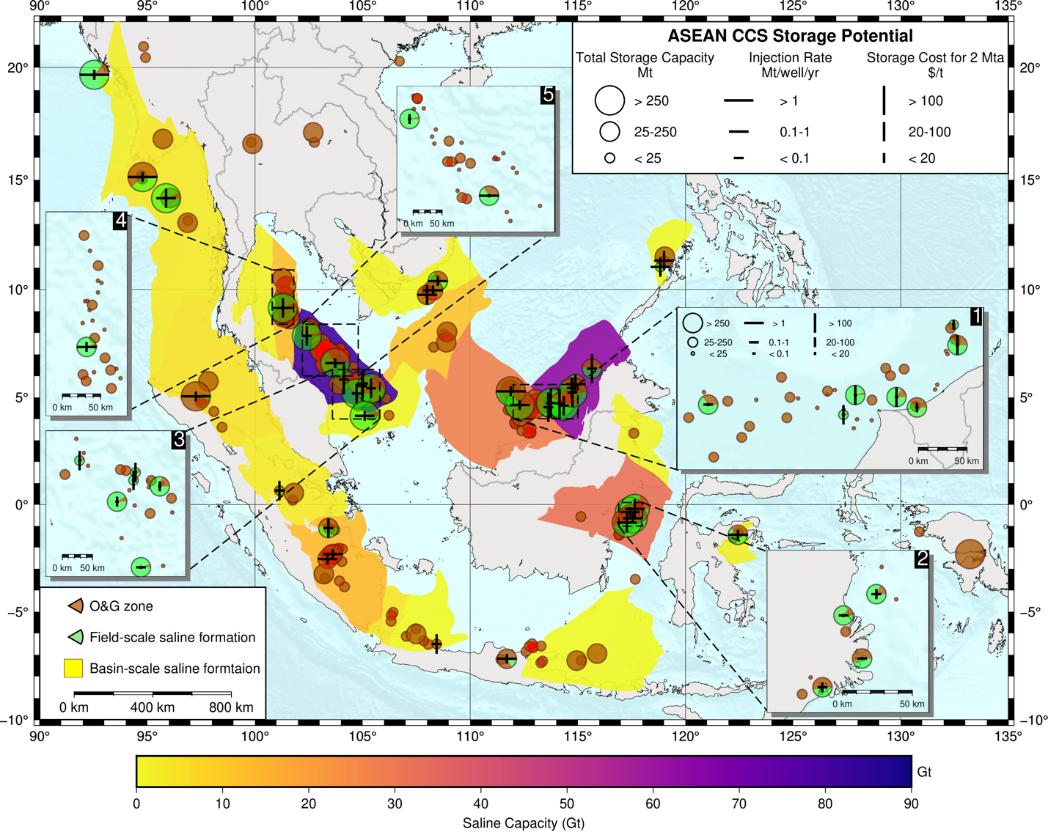
n Cost estimates from site storage all the way to final sequestration
Task 3. Technology Screening
Figure 4 Storage site mapping of ASEAN region
Task 3. Technology Screening
In the next step, carbon capture technologies for defined plant constraints are reviewed and screened to provide recommendation for the concept design. A summary of available technology options for both cases are presented below
In the next step, carbon capture technologies for defined plant constraints are reviewed and screened to provide recommendation for the concept design. A summary of available
Table 5 Overview of technology op:ons of carbon capture for tradi:onal cement and steel making routes
CC Technology for Cement
Chemical absorption (TRL 7-9)
Calcium looping (TRL 6)
Direct separation, LEILAC (TRL 6)
Oxy-fuel (TRL 6)
Novel physical adsorption (TRL 6)
CC Technology for Steel (BF-BOF route)
• Post combustion capture for various flue gas emissions from BF stove, coke plant, sintering plant, etc (TRL 6-9)
• Calcium looping for lime kiln (TRL 6)
• Top gas capture (pre-combustion) with various technologies such as chemical absorption, adsorption, membrane, etc (TRL 3-6)
Conference
130
Paper
technology options for both cases are presented below.
CC Technology for Cement
Chemical absorption (TRL 7-9)
Calcium looping (TRL 6)
Direct separation, LEILAC (TRL 6)
Oxy-fuel (TRL 6)
CC Technology for Cement
Novel physical adsorption (TRL 6)
CC Technology for Steel (BF-BOF route)
n Post combustion capture for various flue gas emissions from BF stove, coke plant, sintering plant, etc (TRL 6-9)
n Calcium looping for lime kiln (TRL 6)
n Top gas capture (pre-combustion) with various technologies such as chemical absorption, adsorption, membrane, etc (TRL 3-6)
CC Technology for Steel (BF-BOF route)
• Oxy-blast furnace and top gas capture (TRL 5-6)
n Oxy-blast furnace and top gas capture (TRL 5-6)
Despite the technology readiness level (TRL) and commercial readiness index (CRI), CC integration with existing plant as well as the availability of utilities are the priority of assessment, especially when retrofitting into existing production lines whereas minimum interruption to the main process is of extreme importance.
Table 5 Overview of technology options of carbon capture for traditional cement and steel making routes
Despite the technology readiness level (TRL) and commercial readiness index (CRI), CC integration with existing plant as well as the availability of utilities are the priority of assessment, especially when retrofitting into existing production lines whereas minimum interruption to the main process is of extreme importance.
The carbon capture operational cost to certain extent may overweigh the initial capital investment in many situations, due to large amount of utility consumption and the associated cost. Therefore, levelized cost shall be assessed in conjunction with the technical advancement to consolidate recommendation for technology choice, which might differ from immediate to-date choice.
The carbon capture operational cost to certain extent may overweigh the initial capital investment in many situations, due to large amount of utility consumption and the associated cost. Therefore, levelized cost shall be assessed in conjunction with the technical advancement to consolidate recommendation for technology choice, which might differ from immediate todate choice.
Task 4. CCUS Concept Design & Task 5. Establishing the business case, and sensitivity parameters
All this above studies feed into the concept design by providing various boundary conditions and design inputs. In the next step, business case can be developed with the defined concept, capacity, storage and transport options, end CO2 sink as well. Sensitivity analysis is performed to understand the key parameters that have significant impact to the overall viability of the business case.
Task 4. CCUS Concept Design & Task 5. Establishing the business case, and sensitivity parameters
All this above studies feed into the concept design by providing various boundary conditions and design inputs. In the next step, business case can be developed with the defined concept, capacity, storage and transport options, end CO2 sink as well. Sensitivity analysis is performed to understand the key parameters that have significant impact to the overall viability of the business case.
The marginal levelized cost increase for cement and steel product with carbon capture installation is often used for decision making, as this reflects how much impact carbon capture brings into the business and thus the overall financial feasibility. An example has been shown below in Figure 5. This is again very much context driven, as each country has their own regulatory framework to support industrial decarbonisation, therefore the business case might be completed different from country to country.
The marginal levelized cost increase for cement and steel product with carbon capture installation is often used for decision making, as this reflects how much impact carbon capture brings into the business and thus the overall financial feasibility. An example has been shown below in Figure 5. This is again very much context driven, as each country has their own
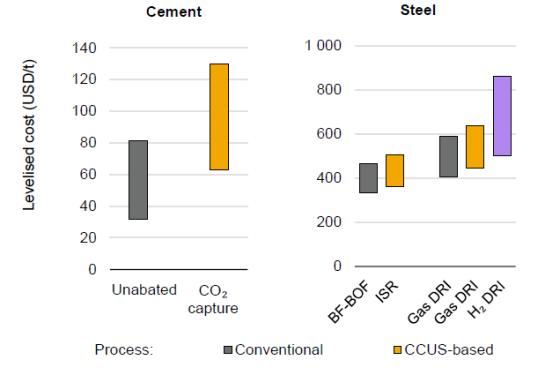
regulatory framework to support industrial decarbonisation, therefore the business case might be completed different from country to country.
2 IEA, Energy Technology Perspectives 2020 Special Report on CCUS, 2020
3.1 Case study 1 – Slite Cement CCS The Slite CCS project, led by HeidelbergCement and its subsidiary Cementa, aims to establish a carbon capture and storage (CCS) facility at the Slite cement plant in Sweden. The project is set to
Conference Paper 131
Figure 5 marginal levelized cost of cement and steel produced with or without carbon capture installa:on2
3. Case Study with One Cement Manufacturer in Southeast Asia
Figure 5 marginal levelized cost of cement and steel produced with or without carbon capture installation2
3. Case Study with One Cement Manufacturer in Southeast Asia
3.1
Case
study 1 – Slite Cement CCS
capture up to 1.8 million tonnes of CO₂ annually, which is equivalent to 3% of Sweden’s total emissions3 . This iniHaHve is part of HeidelbergCement’s commitment to halve its CO₂ footprint by 2030 and achieve net zero by 2050. The Slite plant’s locaHon is advantageous, being near a seaharbour with access to storage soluHons in the North Sea (Northern Light). The project will also increase the use of bio-based fuels in cement producHon, with full-scale CO₂ capturing targeted by 2030 using amine capture technology. The Slite CCS project receives grant support from the Swedish Energy Agency, as part of the agency’s commitment towards carbon-neutral cement producHon in Sweden by 2030. A feasibility study is ongoing with Ramboll being the technical advisor to Cementa.
The Slite CCS project, led by HeidelbergCement and its subsidiary Cementa, aims to establish a carbon capture and storage (CCS) facility at the Slite cement plant in Sweden. The project is set to capture up to 1.8 million tonnes of CO? annually, which is equivalent to 3% of Sweden’s total emissions3. This initiative is part of HeidelbergCement’s commitment to halve its CO? footprint by 2030 and achieve net zero by 2050. The Slite plant’s location is advantageous, being near a sea-harbour with access to storage solutions in the North Sea (Northern Light). The project will also increase the use of bio-based fuels in cement production, with full-scale CO? capturing targeted by 2030 using amine capture technology. The Slite CCS project receives grant support from the Swedish Energy Agency, as part of the agency’s commitment towards carbon-neutral
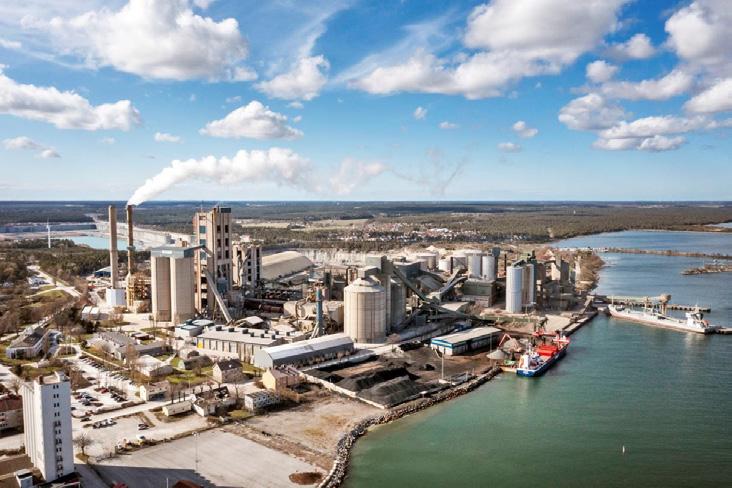
3.2 Case study 2 – Integrated Steel Complex with Carbon Capture
3.2 Case study 2 – Integrated Steel Complex with Carbon Capture
One major scale integrated steel complex in Southeast Asia with more than 5 mtpa of construction steel production capacity, is considering carbon capture installation in its site premise, to achieve low carbon steel production in view of the future carbon tax both for domestic and export products. After site survey and initial assessment of flue gas profile, it is suggested that tail-end post combustion capture for blast furnace stove flue gas could be considered. One major scale capture plant is currently under conceptualisation with layout availability. Full value chain business case is also being developed to include carbon utilisation prognosis and storage options.
One major scale integrated steel complex in Southeast Asia with more than 5 mtpa of construction steel production capacity, is considering carbon capture installation in its site premise, to achieve low carbon steel production in view of the future carbon tax both for domestic and export products. After site survey and initial assessment of flue gas profile, it is suggested that tail-end post combustion capture for blast furnace stove flue gas could be considered. One major scale capture plant is currently under conceptualisation with layout availability. Full value chain business case is also being developed to include carbon utilisation prognosis and storage options.
4. Conclusions
4. Conclusions
The paper addresses the decarbonization challenges in the cement and steel industries, which are significant contributors to CO2 emissions due to reliance on high-grade heat and the nature of their processes. It introduces Carbon Capture, Utilization, and Storage (CCUS) as a key technology enabling these industries to continue operations while reducing emissions. The paper outlines the steps for developing a CCUS business case, detailing the role of energy efficiency, alternative fuels, and regulatory frameworks. It emphasizes the importance of integrating capture technology with existing facilities and considers the financial impact. Two case studies illustrate practical applications of CCUS in the cement and steel industries in Southeast Asia and Sweden.
3 https://www.heidelbergmaterials.com/en/pr-30-05-2022
The paper addresses the decarbonization challenges in the cement and steel industries, which are significant contributors to CO2 emissions due to reliance on high-grade heat and the nature of their processes. It introduces Carbon Capture, Utilization, and Storage (CCUS) as a key technology enabling these industries to continue operations while reducing emissions. The paper outlines the steps for developing a CCUS business case, detailing the role of energy efficiency, alternative fuels, and regulatory frameworks. It emphasizes the importance of integrating capture technology with existing facilities and considers the financial impact. Two case studies illustrate practical applications of CCUS in the cement and steel industries in Southeast Asia and Sweden.
3 hBps://www.heidelbergmaterials.com/en/pr-30-05-2022
Conference Paper 132
cement production in Sweden by 2030. A feasibility study is ongoing with Ramboll being the technical advisor to Cementa.
Figure 6 Cementa Slite CCS
Figure

 TOR ØSTERVOLD
Co-founder and CEO, ECOsubsea AS
TOR ØSTERVOLD
Co-founder and CEO, ECOsubsea AS
BIOGRAPHY
Born in 1983, Tor grew up in the west-coast municipality of Austevoll to the south of Bergen. He graduated from the Western Norway University of Applied Sciences (HVL) in Haugesund with a BSc in Nautical Science, then went on take an MSc in International Shipping at Plymouth University in the UK.
Tor then spent some years seafaring in industrial fishing, on the same vessel he began serving on at the age of 13. Having always lived by and on the water, he has is passionate about helping to create a sustainable and profitable Blue Economy while conserving the ocean environment.
Tor’s experience from working with aquaculture net cleaning in the early 2000s was what first triggered his idea to apply sustainable cleaning technology to vessels in pursuit of enhanced performance efficiency. This led to him establish ECOsubsea in 2008 together with his brother, Klaus, who now serves as CTO of the company. It took four years of hard development work before their revolutionary robotic hull cleaning system was finally ready to be put into commercial operation from 2013. ECOsubsea now has operations in the UK, Norway, France, the Netherlands and Belgium, with plans underway to expand to new locations globally.
We believe Tor’s infectious enthusiasm and dogged persistence in bringing ECOsubsea’s endto-end solution through commercialisation to implementation over the past 15 years makes for an inspiring story to share with your Congress attendees. Through his commitment to a solution that cuts operational costs, carbon emissions and the spread of invasive species, he is an excellent role model for the younger generation of maritime entrepreneurs looking to launch concepts that are both economically viable and green.
Speaker
133

 ENG KIONG KOH Director, Research & Projects, Global Centre for Maritime Decarbonisation
ENG KIONG KOH Director, Research & Projects, Global Centre for Maritime Decarbonisation
BIOGRAPHY
An environmental engineer by training, Koh has 22 years of experience in business development and account management in the fields of research, product development, and technology business. Koh has had a variety of assignments spanning industries from speciality chemical, environment and maritime clean energy. He has intimate knowledge of the workings of the R&D business, having had the “triple helix” experience working in the industry, government, and academic institutions.
Koh’s research interests include decarbonisation of the maritime sector and commercialisation of technologies. At GCMD, he helps to develop impactful projects to accelerate the implementation of decarbonised maritime solutions, including the shaping of relevant standards.
Prior to GCMD, he was assistant centre director and senior research fellow at the Maritime Energy & Sustainable Development (MESD) centre at Nanyang Technological University (NTU), where he charted the strategic research roadmap and partnerships, successfully delivering key projects and outcomes that advanced the knowledge of the low-carbon alternative energy landscape for maritime Singapore. He was also behind the successful Maritime Clean Energy Research Program, was the primary driver for NTU’s Maritime Energy Testbed Initiative, and was the initiator and part of the startup team of the Renewable Energy Integration Demonstrator Singapore Initiative.
Koh graduated from NUS with B.Eng (Env), Hons in 2001. He obtained his MBA from BI Norwegian School of Management and Fudan University at Shanghai in 2007, with a best in class award.
Speaker
134


MIKE WATT CEng., CMarEng., FIMarEST
Director – Innovation Centre of Alternatives & Renewable Energy (iCARE) / Future Shipping Team South Asia & Pacific
BIOGRAPHY
Mike Watt leads Bureau Veritas Marine & Offshore’s Innovation Centre for Alternatives & Renewable Energy (iCARE) and the Future Shipping Team South Asia & Pacific, guiding clients on their decarbonisation path. With 25 years of experience in various roles in the maritime industry including as a seagoing engineer and superintendent, he advises on innovative technologies, digitalization, alternative fuels and renewables. A Chartered Marine Engineer through the British Engineering Council, Mike holds an MSc in Engineering for Marine Professionals and an MBA from the University of Plymouth. He volunteers much of his free time to serving the members of the Institute of Marine Engineering, Science and Technology (IMarEST) as the current Chairman of the Singapore branch, and is active in other roles in the organisation.
Speaker
135
SESSION 7
Collaborative projects
Collaborative projects to advance the deployment of zero/low-carbon solutions in the maritime industry. Detailing different projects that utilise different stages of the logistics chain.
136
 LARS ROBERT PEDERSEN
Deputy Secretary General, BIMCO
LARS ROBERT PEDERSEN
Deputy Secretary General, BIMCO
BIOGRAPHY
Deputy Secretary General Lars Robert Pedersen is responsible for BIMCO’s technical and operational activities involving all technical and nautical issues within the area of marine, environment, ship safety and maritime security. Lars Robert is furthermore responsible BIMCO’s activity related to regulatory developments relevant to shipping at international, regional and national levels.
In the past decade, he has served on IMO expert groups on market-based measures and on the steering group for the IMO 2020 fuel oil availability study. Lars Robert has also chaired the Motorship Propulsion & Future Fuels Conference for the past 6 years. He joined BIMCO in early 2010 after a long career at A.P. Moller-Maersk (APMM). For more than 25 years he was involved in regulatory affairs at IMO level, technical management of the Maersk fleet of container ships and prior to that as a seagoing engineer officer. Lars Robert holds an unlimited Chief Engineers license.
Moderator
137

PETER BOS
Leading professional Maritime solutions for Renewable energies, Royal HaskoningDHV
BIOGRAPHY
Peter Bos is a leading maritime solutions expert for renewable energy at Royal HaskoningDHV, an international company integrating engineering, design, consultancy, software and technology. With over 23 years’ experience, he has an impressive track record in maritime projects at all development stages from initiation and design to execution. Peter’s extensive knowledge makes him a trusted advisor to several standards committees, such as e.g. NEN and ISO.
Speaker
138
Charting a course to decarbonise shipping
The saying about the time it takes to turn a super tanker perfectly fits the dilemma of decarbonising shipping. If it was a country, the global fleet would be the sixth-largest emitter of greenhouse gases, contributing about 3% of global CO2 emissions. Despite the recent wellintentioned targets from the International Maritime Organisation (IMO) and more recently, the European Parliament and the Council for Transport and Tourism, the shipping industry is still anxiously sitting on its hands, constrained by a complex Catch-22 situation. How has this come about? And more importantly, how can it be resolved?
On July 7, the IMO revised its emission reduction strategy, setting a goal for Net Zero emissions from shipping by 2050. New checkpoint targets were agreed to reduce GHG emissions by at least 20% - striving for 30% - in 2030 and at least 70% - striving for 80% - in 2040, compared to 2008 levels. The strategy also sets a target of at least 5% - striving for 10% - uptake of zero or near-zero GHG emission technologies, fuels and/or energy sources by 2030. Welcoming the new strategy, the EU stressed that it is important to start implementing it as soon as possible.
Obstacles
But what are the challenges that influence decarbonizing the maritime logistical industry? An inventory tells us that there are significant unresolved matters relating to:
n Regulatory framework; there is still a lot unknown on impact on surroundings. Unknown makes unloved.
n Business case; how can we make the transition profitable for the key players? Who pays the bill?
n Quantities of supply; there is still a shortage of renewable energy, certainly in the majority of the locations where the demand is.
n Chicken and egg; investment in infrastructure and demand might go hand in hand. Who will invest first?
n Technical challenges; although most of the technical challenges have been resolved, the solutions are not yet economic and optimized from a safety perspective.
n Energy efficiency; use of renewable energy carriers consumes significant deck space, much more than with conventional energy sources.
n Fear of making the wrong choice; we are not convinced that we have the silver bullet. What if the silver bullet is found right after I have invested in a specific technology?
All this is good, but what we require is a firm roadmap to achieve the targets.
Major shortage of renewable energy
Many alternative fuels – each with advantages and disadvantages – compete to replace diesel. Yet today the onus is on each shipping company and port operator to form their own view of the future fuel mix in line with their business strategy and decarbonisation ambitions.
Conference Paper
139
Complicating things further is the fact there is not enough renewable energy available to make the clean fuels of tomorrow. The world simply doesn’t make enough. For example, according to the International Renewable Energy Agency, less than 0.2 Mt of renewable methanol is produced annually, mostly as bio-methanol. Put simply the maths don’t add up.
Nor is renewable energy located where maritime customers need it most, at major ports like Singapore, Rotterdam, Hong Kong, Shanghai, and Los Angeles.
When it comes to the fuel of tomorrow there is no silver bullet. Methanol and LNG have been touted as transitional fuels because they have lower emissions than diesel. But shouldn’t we set the bar higher and strive for zero emissions? I think so.
Zero emission fuels
It’s true that one hat won’t fit all maritime vessels. Hydrogen for example can be made from renewable electricity through electrolysis and emits no CO2. Yet it takes six to ten times the storage space of diesel and when liquefied must be kept at very low temperatures. The cost of storage means that in the short- and medium-term, hydrogen is uneconomic for long-distance vessels. Where it is viable is for coastal vessels that can secure a local fuel supply. The same applies to short-journey battery-powered vessels.
Ammonia looks promising. It can be made from green electricity, is cheaper than using batteries, and is easier to store than hydrogen. However, its corrosive nature and toxicity raises environmental and safety concerns – not least in ports with bunkering operations close to urban areas.
Making sense of it all
Given the uncertainty, I’m often asked by ports and shipping companies how should they go forward?
Understandably, there is fear of making the wrong choice. The industry wants to proceed but is stymied by a lack of regulation, a shortage of renewables, and competing technologies that are still not fully proven and require huge investments for vessels and infrastructure.
At best, the business case is unclear. A classic chicken and egg situation. On the other hand, failure to act now may cost companies dearly in the future.
The solution is to take baby steps toward your end goal. Ask yourself what does success look like? Always keep that in mind and take advice on the best technology to meet your current and future business needs. Then consider undertaking a pilot project. It must be a measured initiative. Learn from this and by working with others.
Don’t be afraid. Accept that risk is an inevitable component of the energy transition. Nothing ventured nothing gained. But don’t ‘bet the farm’ at this early stage as so much needs to be done – not least increasing the amount of renewable energy.
Finally, international and national policymakers need to engage with the shipping industry and energy providers on a truly systematic level. Setting targets is not enough. They have to be part of the solution given that substantial investment is needed from the private sector and public purse. Decarbonising shipping to meet emission reduction targets is a global issue. One that needs planning and regulation on an international scale. The good news is that it can be done. Meanwhile, the clock ticks louder than ever.
Conference Paper 140
 SITI NORAINI ZAINI Regional Manager (Asia), IBIA
SITI NORAINI ZAINI Regional Manager (Asia), IBIA
BIOGRAPHY
Siti joined IBIA in July 2022 as Regional Manager, Asia, after more than 10 years with the Singapore Shipping Association (SSA).
At SSA, Siti managed stakeholders’ engagements and was the Secretary of the various Committees and Sub-Committees, including the SSA Marine Fuels Committee where she led and develop various initiatives such as the MPA-SSA IMO 2020 Conference, and most recently, an information pack on the Biofuels Bunkering in the Port of Singapore.
During the COVID-19 pandemic, she was part of the working group(s) which developed the Singapore Crew Change Guidebook and seafarers’ vaccination in Singapore (SeaVax). The working groups were recognised for the efforts and contributions with the Minister’s Innovation Award and Star Partner Award (Public Sector Transformation Awards).
Siti holds a degree in Naval Architecture/Offshore Engineering with Newcastle University (UK) and a Graduate Diploma in Maritime Law and Arbitration from the National University of Singapore (NUS).
Speaker
141
 TAYLOR WAMBERG
TAYLOR WAMBERG
Regional Maritime Commercial Markets Manager, Lloyd’s Register
BIOGRAPHY
Taylor has worked with Lloyd’s Register for 10 years. Holding both technical and commercial roles across Europe, the Middle East and most recently Singapore. In his time in LR Taylor has developed an in depth understanding of Maritime regulation and gained experience working with large organisations though multifunctional advisory projects. In his current role as Regional Manager for Maritime Commercial Markets, Taylor is responsible for increasing the support Lloyd’s Register provides to Charterers, Financiers and Insurers, as part of the Maritime Performance Services business in South Asia Middle East and Africa.
Speaker
142
 ARCHANA KANNAN
ARCHANA KANNAN
Senior Manager, Green Shipping Corridors, C40 Cities and Strategy Consultant, Advisory, Arup
BIOGRAPHY
Archana is a Senior Manager with C40 Cities as part of their Ports & Shipping Team.
Her focus is on Green Shipping Corridors, where she specifically works to facilitate the efforts of the Singapore-Los Angeles-Long Beach Green and Digital Shipping Corridor (GDSC).
She is seconded to C40 Cities via a longstanding partnership between Arup and C40 Cities. At Arup, Archana is a Strategy Consultant working on green economy, urban strategy and sustainability projects.
Speaker
143

Green Ports and Shipping Congress Conference
8-9 May 2024, Singapore
2024-2025 Events Schedule
Green Ports and Shipping Congress, the only conference identifying and prioritising the areas that ports-based organisations and shipping companies need to work together on to meet net zero GHG emissions by 2050. greenseascongress.com
25th Seawork, incorporating Marine Civils
11-13 June 2024, Mayflower Park, Southampton, UK
Europe’s leading annual three day commercial marine exhibition and conference. Seawork incorporates Marine Civils - dedicated to showcasing the latest equipment and solutions for marine, coastal and other challenging civil engineering projects. seawork.com
14th
Icelandic Fisheries Seafood & Aqua Exhibition & Awards
18-20 September 2024, Smárinn, Fifan Halls Kópavogur, Iceland
Longest running Icelandic and International fishing exhibition in Iceland, covering every aspect of the commercial fishing, processing, seafood and by-product sector. icefish.is
5th Fish Waste for Profit Conference
19-20 September 2024, Reykjavik


Fish Waste for Profit provides attendees with knowledge on how to maximise the return on investment (ROI) from potential discarded parts of the catch that can be turned into high value products. icefishconference.com

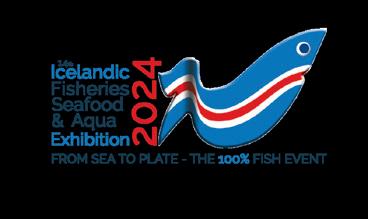

World Ports Conference - International Association of Ports and Harbors
8-10 October 2024, Hamburg, Germany
The International Association of Ports & Harbors World Ports Conference will bring together stakeholders from the global maritime supply chain delivering an international platform for networking, innovation and debate. worldportsconference.com
19th Greenport Congress & Cruise
23-25 October 2024, Le Havre, France
The premier yearly congress providing environmental departments in Ports and Terminals with methods of greening their operations. portstrategy.com/greenport-cruise-and-congress
45th Propulsion & Future Fuels
19-21 November 2024, Hamburg, Germany
Propulsion & Future Fuels provides the latest developments in efficient propulsion technology and low flashpoint, low carbon fuels. motorship.com/propulsion-and-future-fuels-conference
23rd Coastlink Conference
Dates to be confirmed, Port of Bilbao
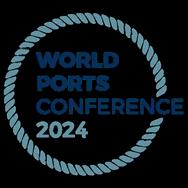



Coastlink is a pan-European network dedicated to the promotion of short sea feeder shipping and the intermodal networks through the ports that support a competitive and sustainable supply chain. coastlink.co.uk conferences@mercatormedia.com Mercator Media Ltd, Spinnaker House, Waterside Gardens, Fareham, Hampshire, PO16 8SD,UK • Tel: +44 1329 825335 Fax: +441329 550192

Conference Contacts:
Tracey Clarke Conference Consultant
Tel: +44 1329 825335
Email: tclarke@mercatormedia.com
Simone Tai
Sales Executive
Tel: +44 1329 825335
Email: stai@portstrategy.com
Daniel Spicer Sales Executive
Tel: +44 1329 825335
Email: dspicer@mercatormedia.com
Anne-Marie Causer News Editor
Tel +44 1329 825335
Email: ACauser@mercatormedia.com
Marianne Rasmussen-Coulling Events Director
Tel: +44 1329 825335
Email: mrasmussen@mercatormedia.com
Andrew Webster Chief Executive Officer
Mercator Media Limited
Spinnaker House, Waterside Gardens, Fareham, Hampshire, PO16 8SD, UK
t: +44 1329 825335, f: +44 1329 550192 www.mercatormedia.com
The organisers and publishers accept no responsibility for the statements made neither in this publication nor for any errors or omissions which may have occurred.
©Mercator Media Limited 2024
Contact Us 145






 ANDREW WEBSTER Chief Executive Officer, Mercator Media Ltd
ANDREW WEBSTER Chief Executive Officer, Mercator Media Ltd
 LARS ROBERT PEDERSEN Deputy Secretary General, BIMCO
LARS ROBERT PEDERSEN Deputy Secretary General, BIMCO







 EVELYN TENG Head of Contract Pricing, Maersk Southeast Asia Ocean
EVELYN TENG Head of Contract Pricing, Maersk Southeast Asia Ocean






 MORTEN JACOBSEN, CEO, Green Marine,
MORTEN JACOBSEN, CEO, Green Marine,
 STANLEY TEO
STANLEY TEO














 JACKIE SPITERI
Managing Director, Sustainable ESG
JACKIE SPITERI
Managing Director, Sustainable ESG





 EUGENE WONG
Chief Executive Officer, Sustainable Finance
EUGENE WONG
Chief Executive Officer, Sustainable Finance


 DAVID ALBERTANI Chief Executive Officer, Catalytic Finance Foundation
DAVID ALBERTANI Chief Executive Officer, Catalytic Finance Foundation


 LARS ROBERT PEDERSEN
Deputy Secretary General, BIMCO
LARS ROBERT PEDERSEN
Deputy Secretary General, BIMCO
 ELENA TALALASOVA
Senior Project Manager, Global Maritime Forum
ELENA TALALASOVA
Senior Project Manager, Global Maritime Forum





 MR WEI SIANG NEW Director, Maritime Decarbonisation & Net-Zero Pathways, MPA
MR WEI SIANG NEW Director, Maritime Decarbonisation & Net-Zero Pathways, MPA
 MARK BUTTON Associate, ARUP
MARK BUTTON Associate, ARUP




 HARIS ZOGRAFAKIS
Partner, Stephenson Harwood LLP
HARIS ZOGRAFAKIS
Partner, Stephenson Harwood LLP














































 ILIAS SOULTANIAS
Managing Principal Engineer, Sustainability, ABS
ILIAS SOULTANIAS
Managing Principal Engineer, Sustainability, ABS




 MR. MARTIN TILING Head of Business Unit Shore Power, igus GmbH
MR. MARTIN TILING Head of Business Unit Shore Power, igus GmbH


















 TOR ØSTERVOLD
Co-founder and CEO, ECOsubsea AS
TOR ØSTERVOLD
Co-founder and CEO, ECOsubsea AS

 ENG KIONG KOH Director, Research & Projects, Global Centre for Maritime Decarbonisation
ENG KIONG KOH Director, Research & Projects, Global Centre for Maritime Decarbonisation


 SITI NORAINI ZAINI Regional Manager (Asia), IBIA
SITI NORAINI ZAINI Regional Manager (Asia), IBIA
 TAYLOR WAMBERG
TAYLOR WAMBERG
 ARCHANA KANNAN
ARCHANA KANNAN










